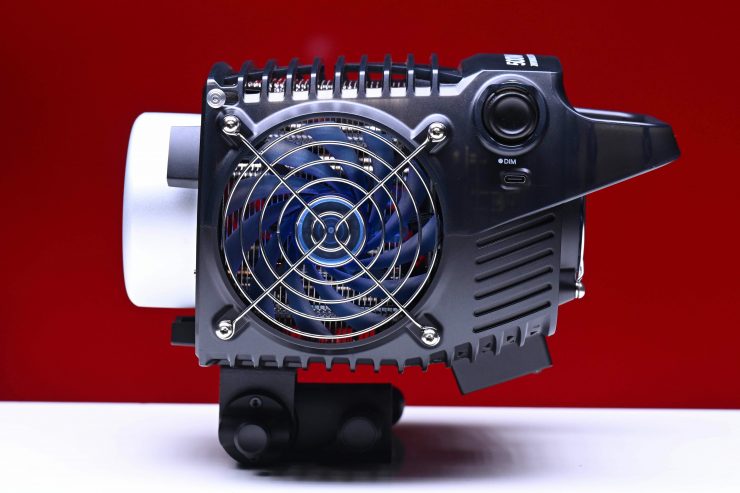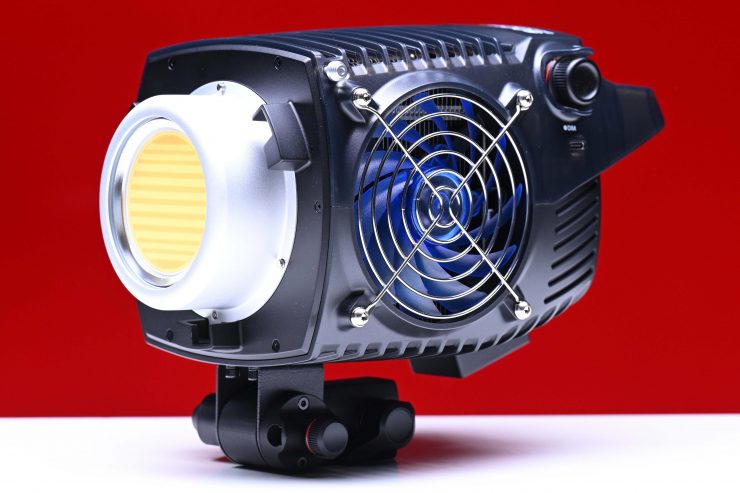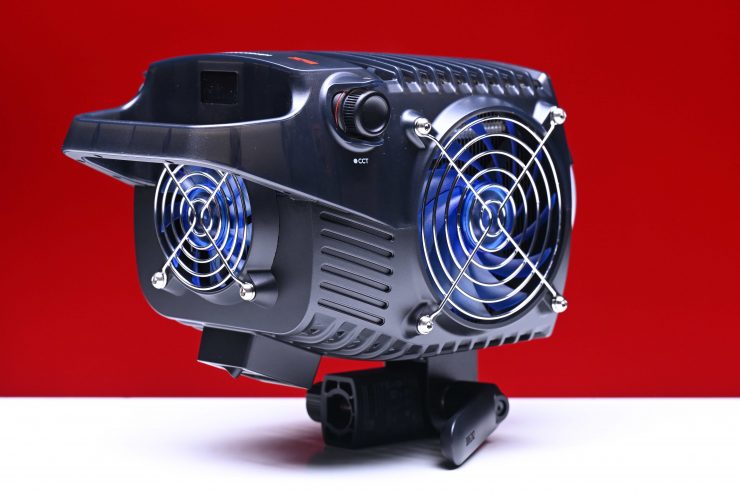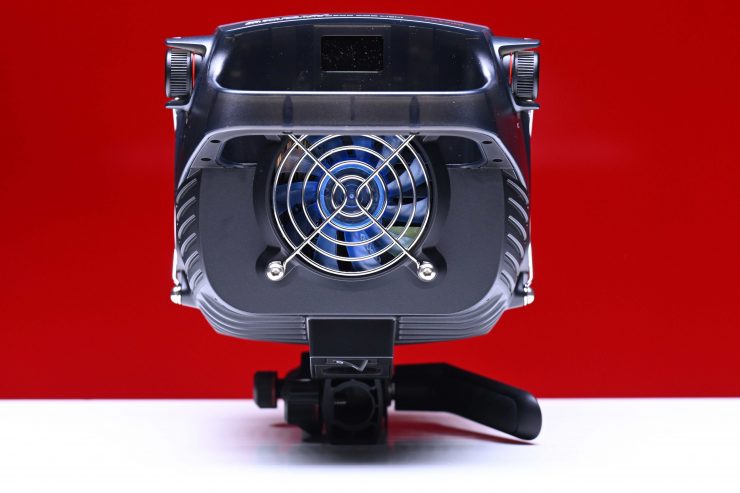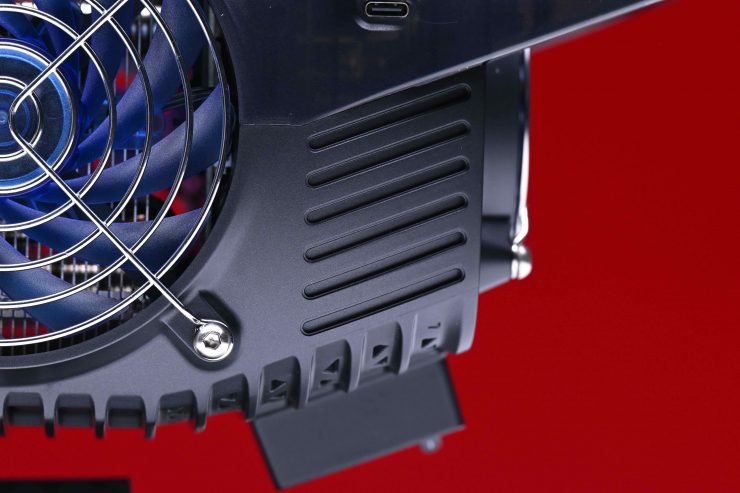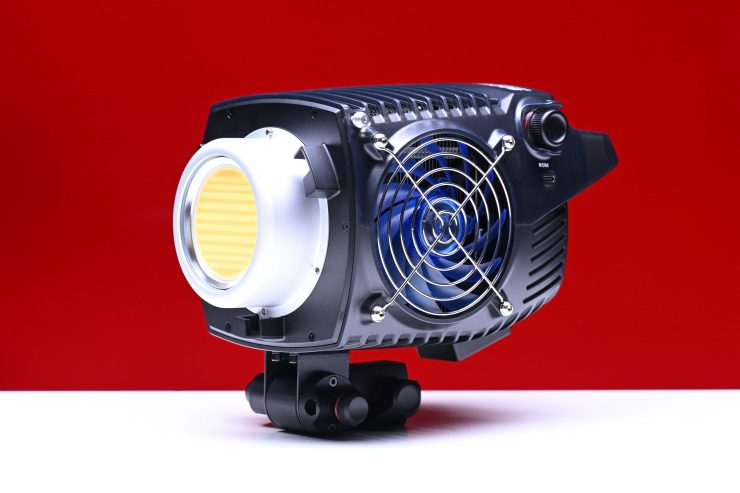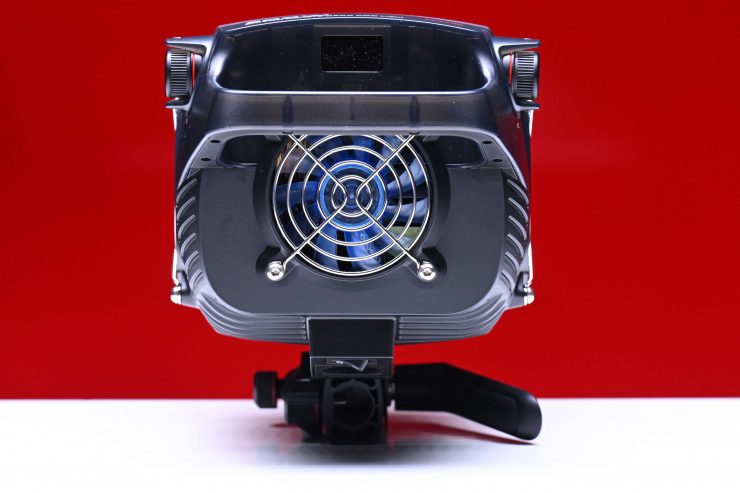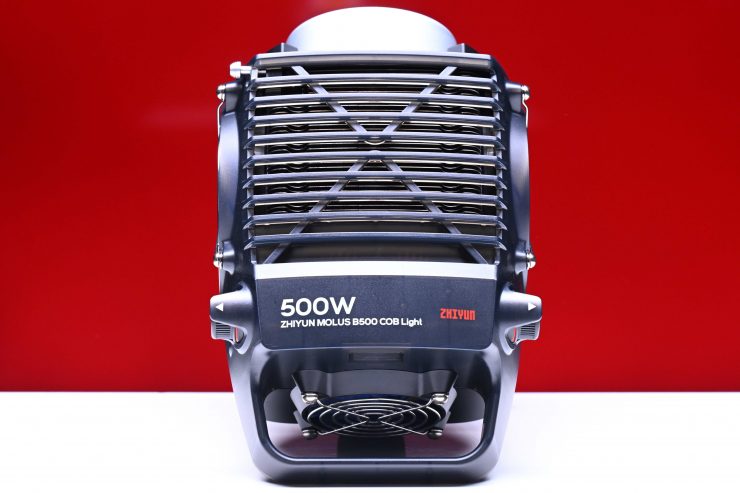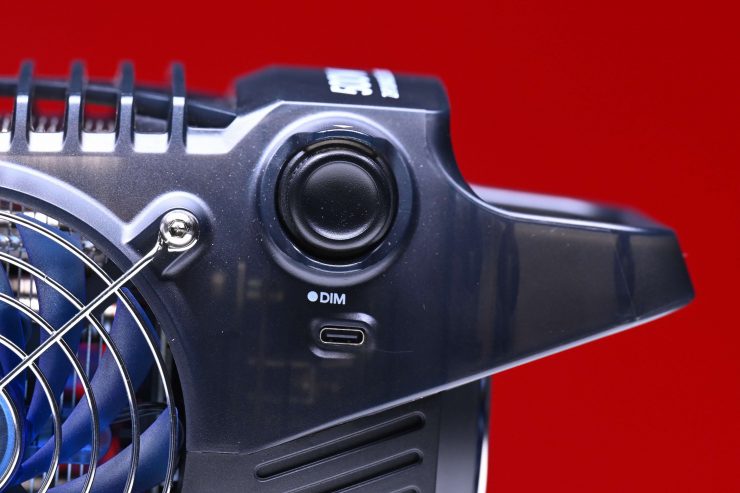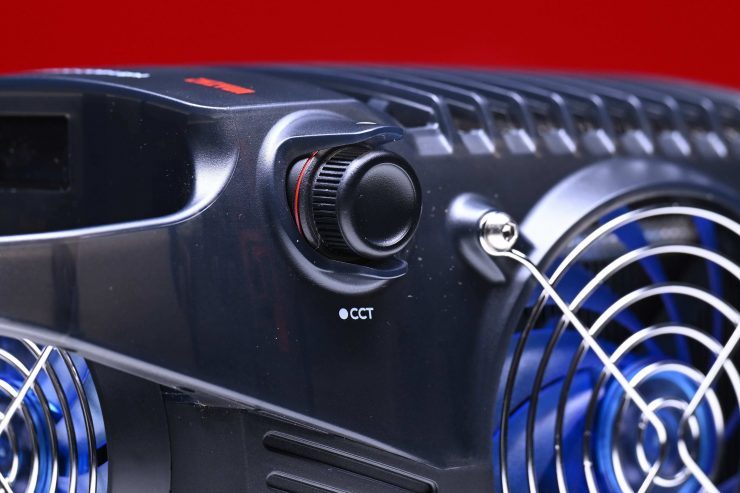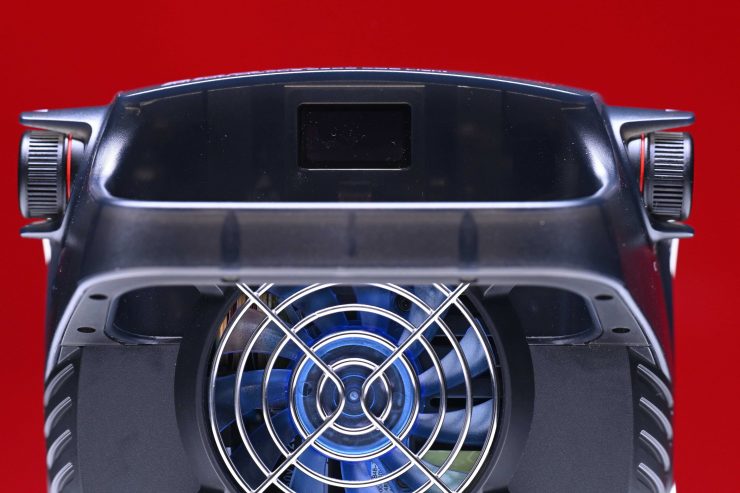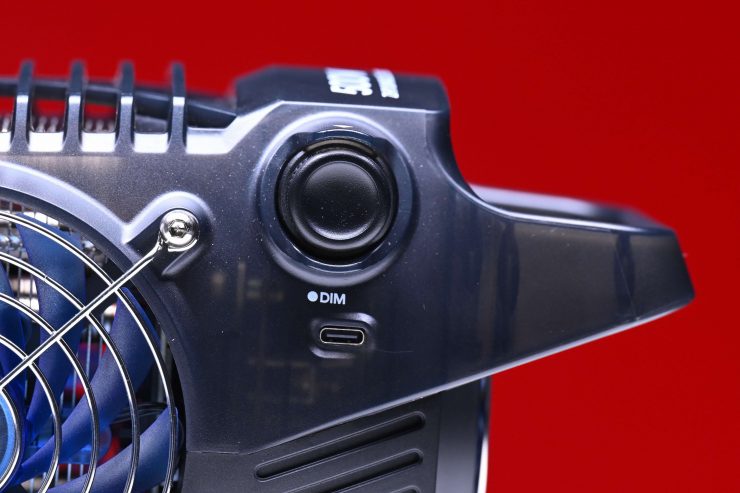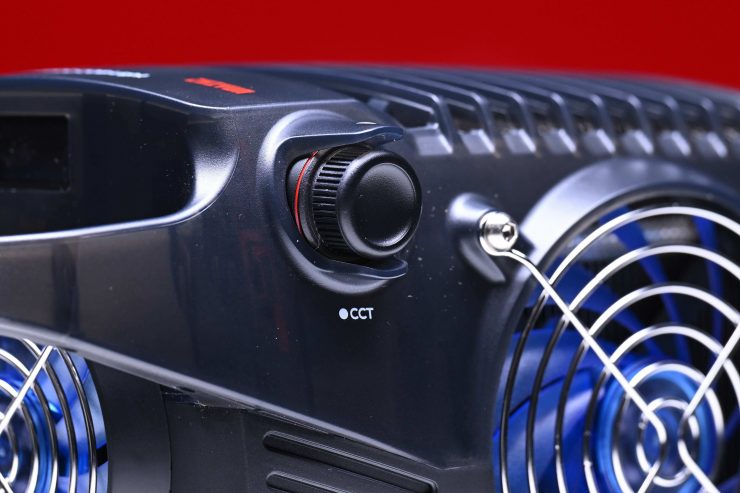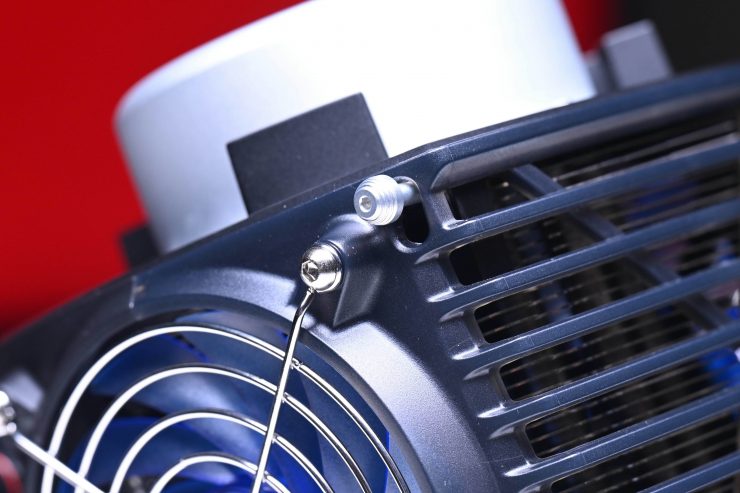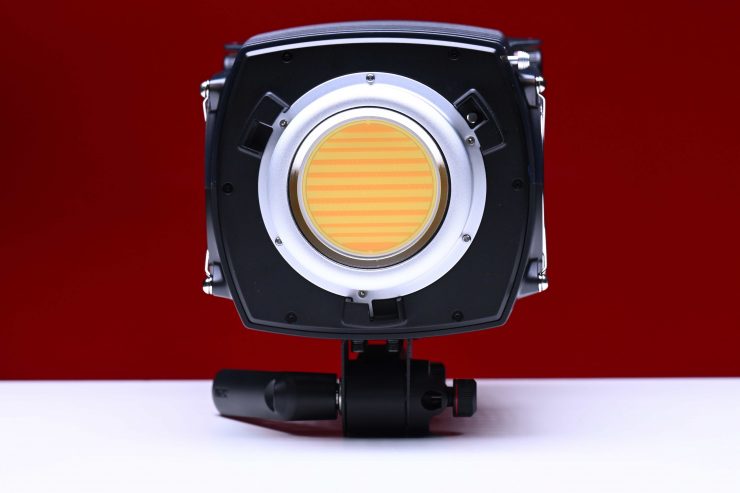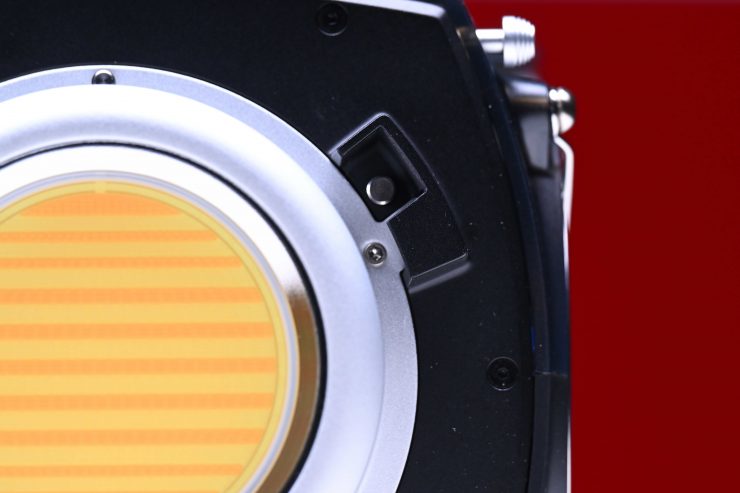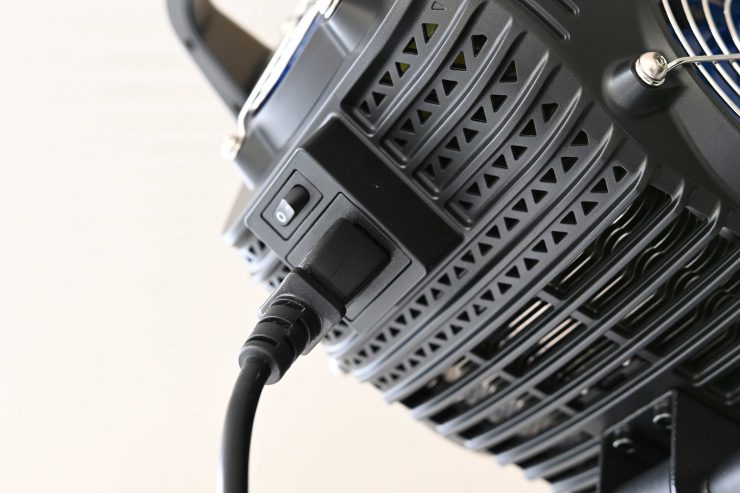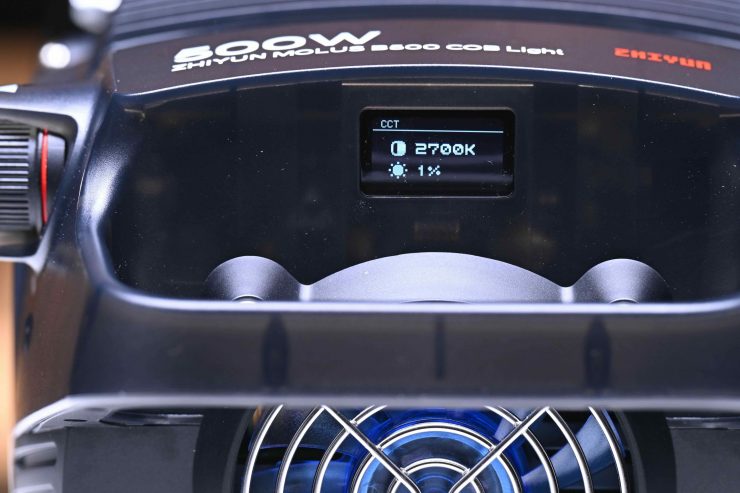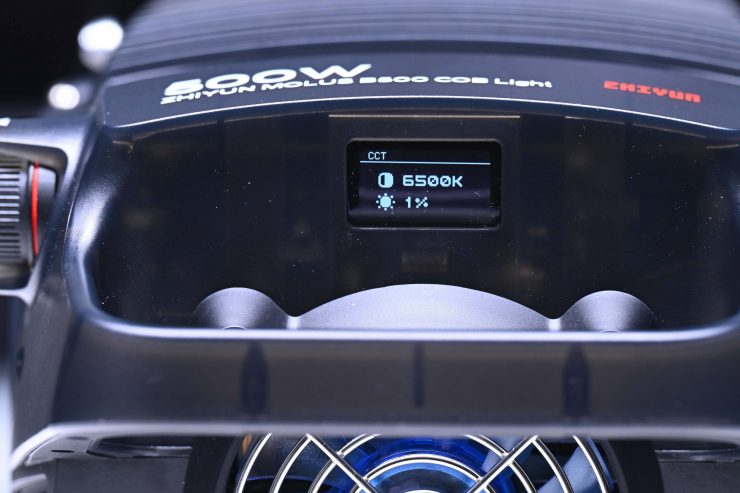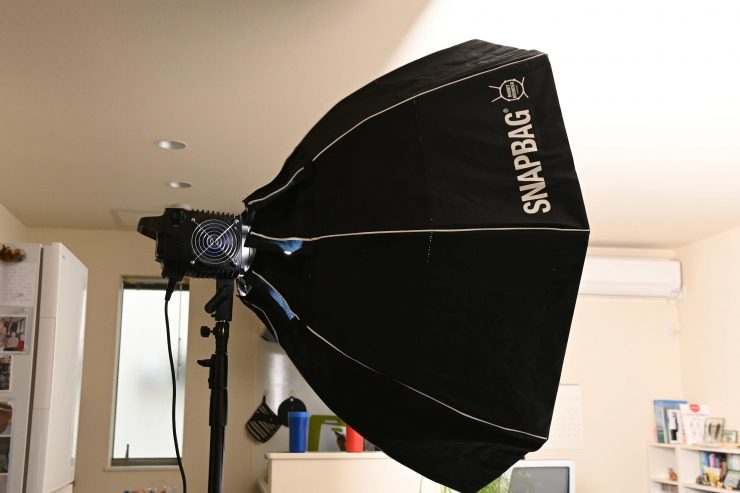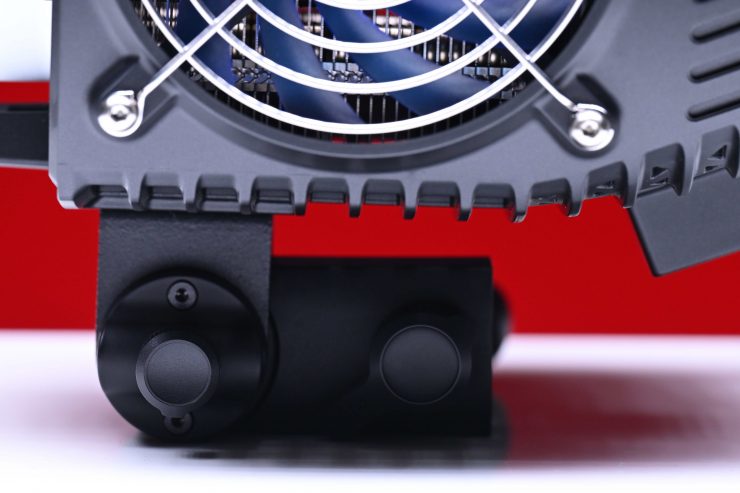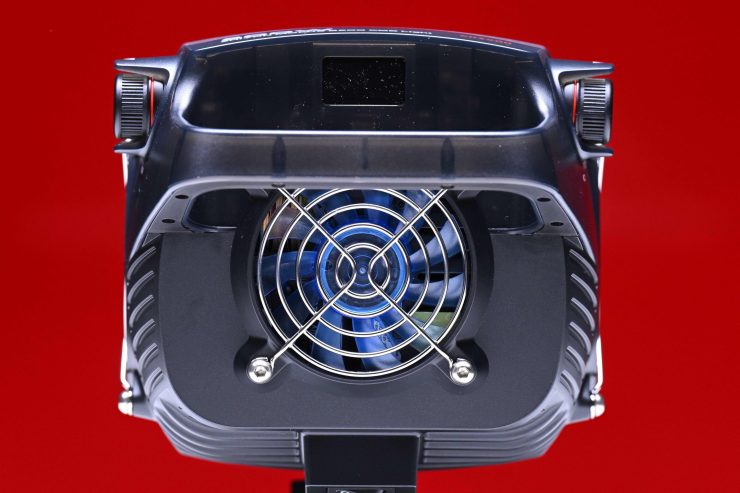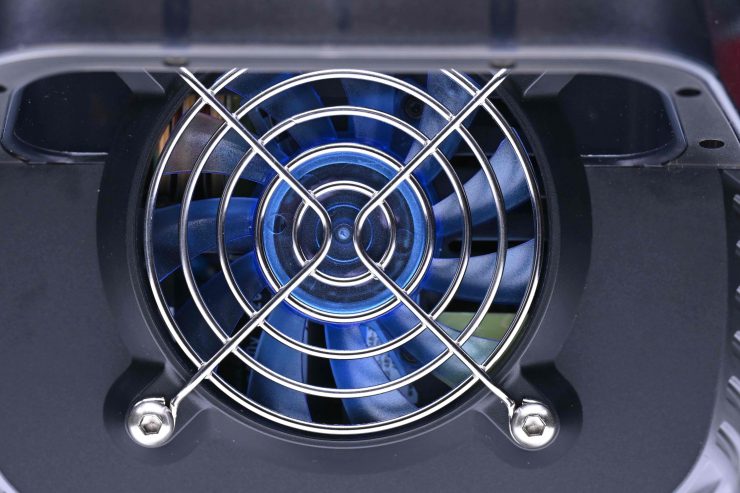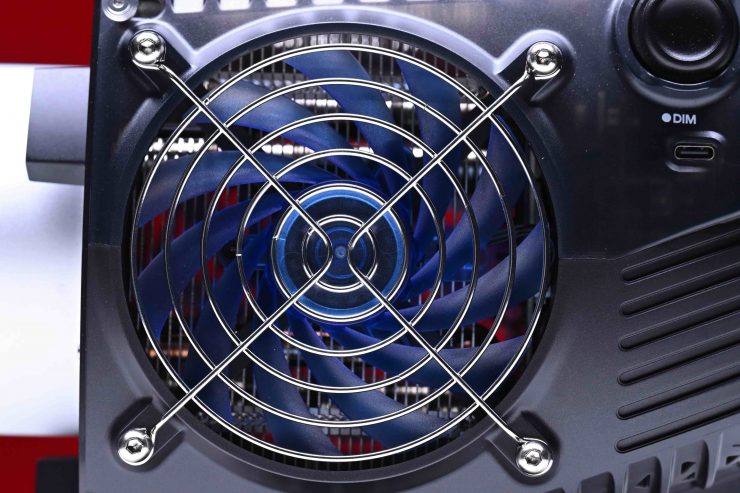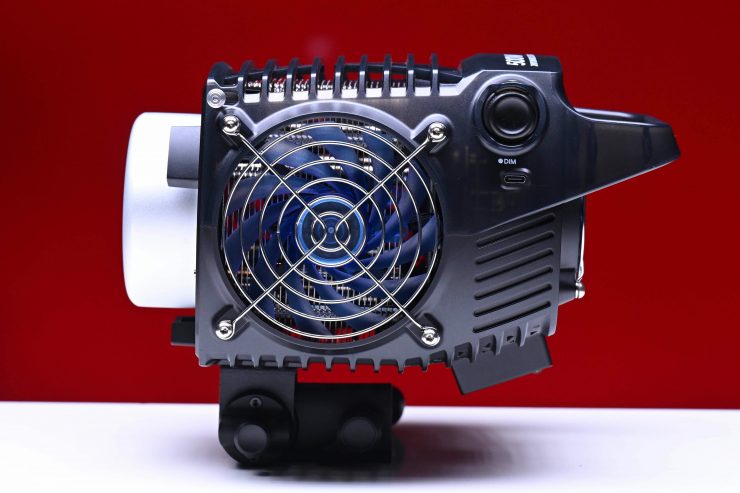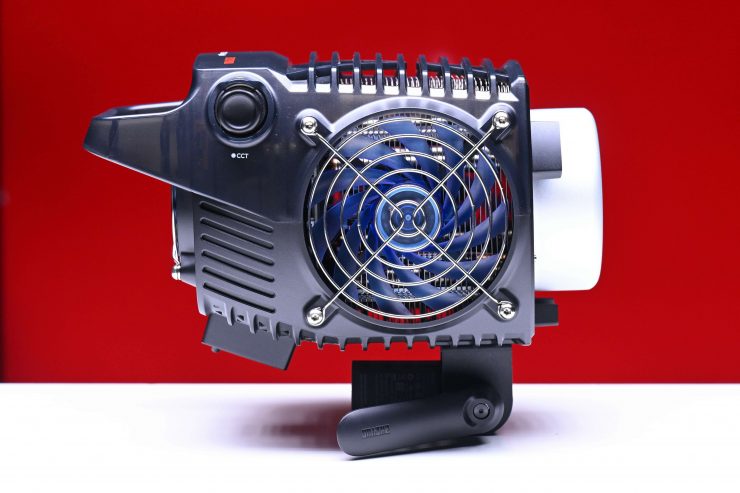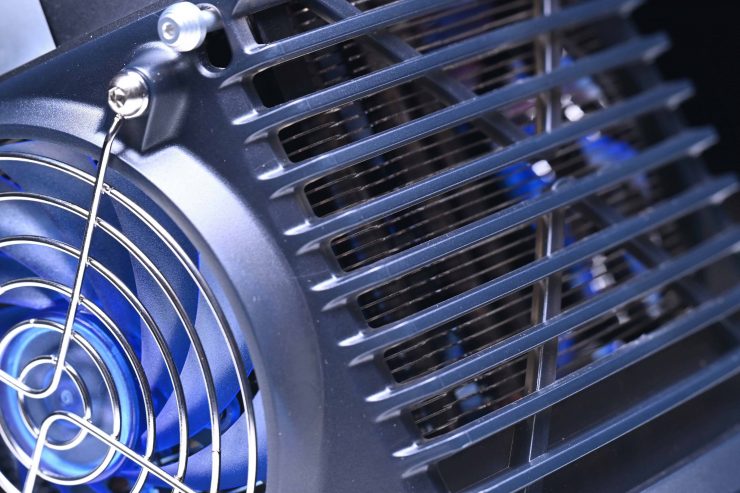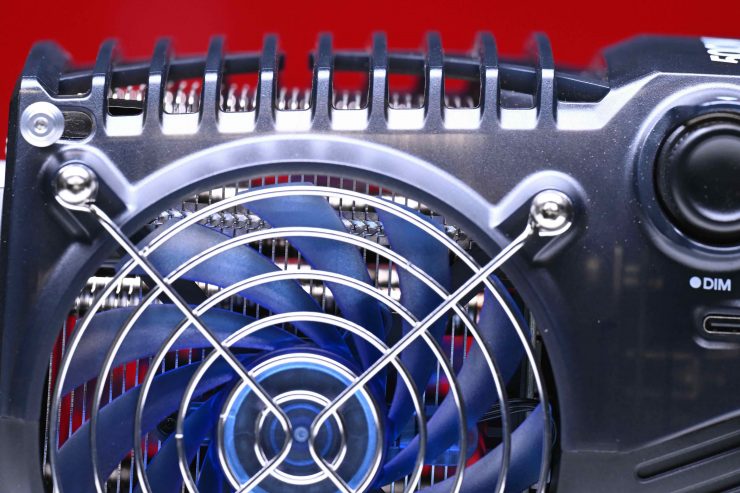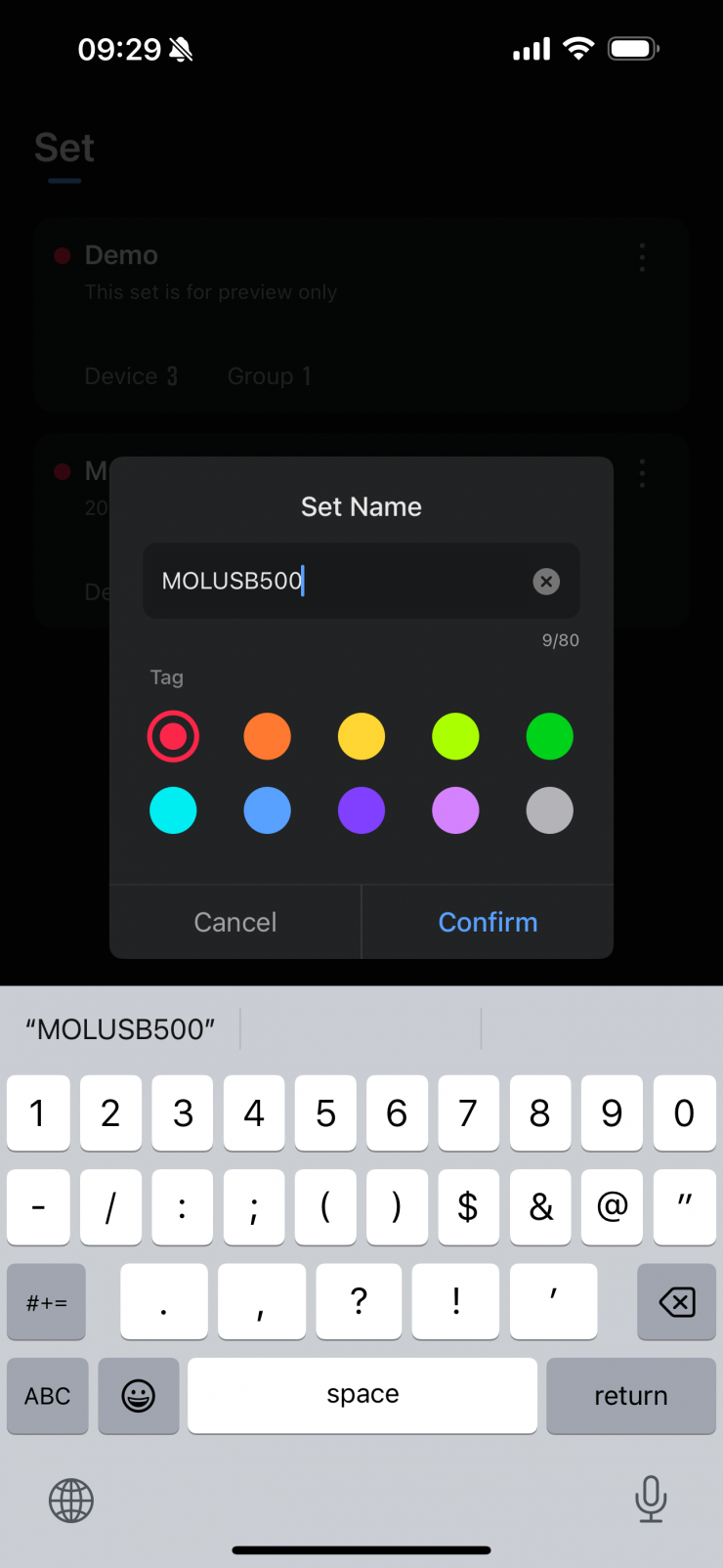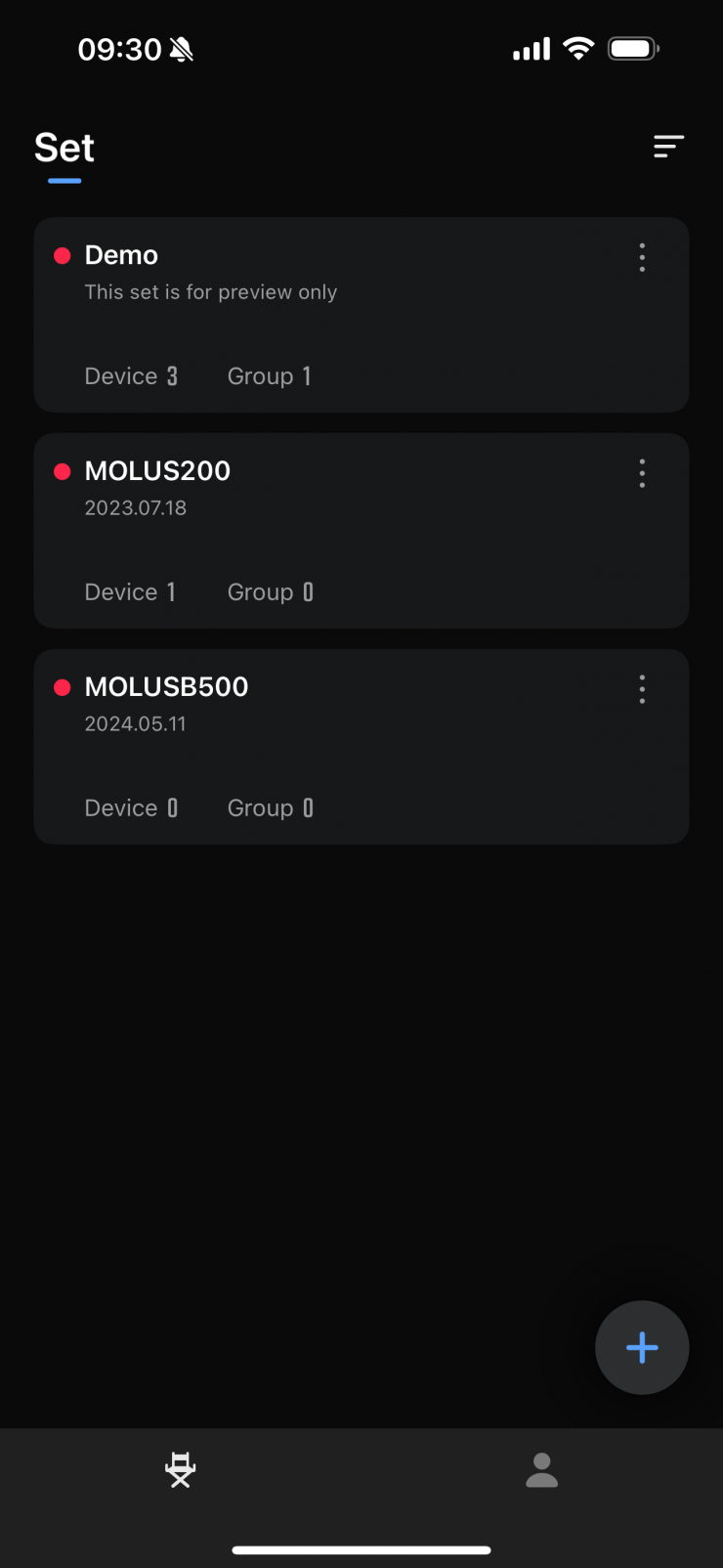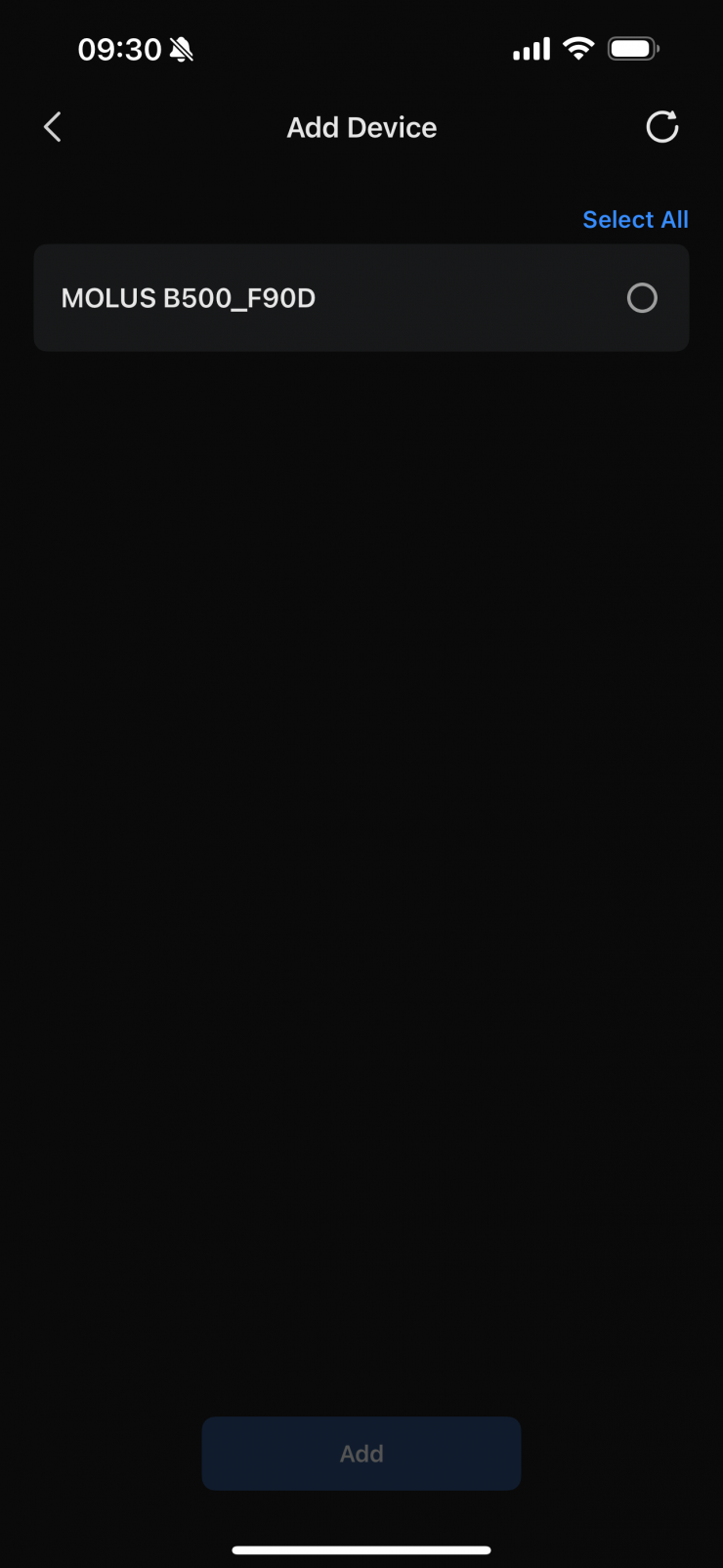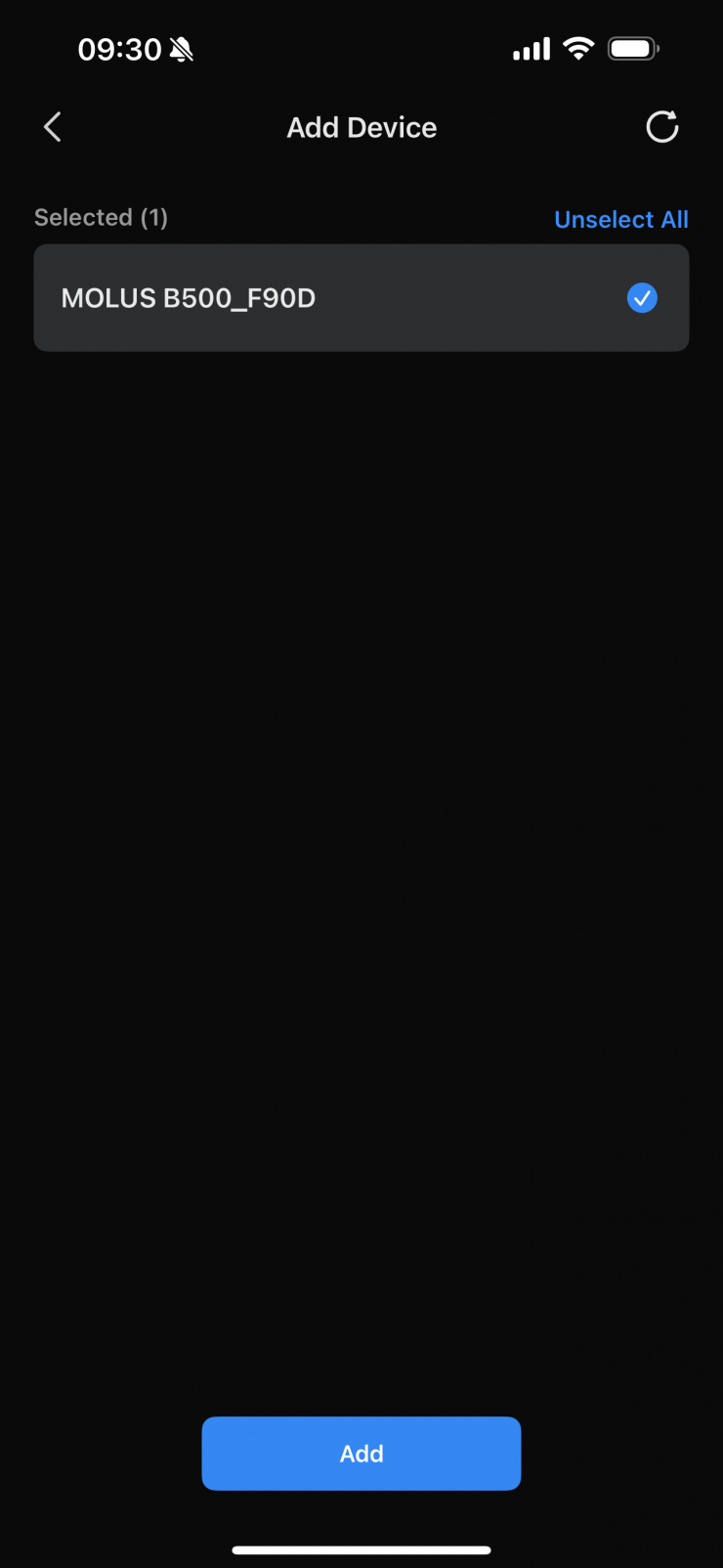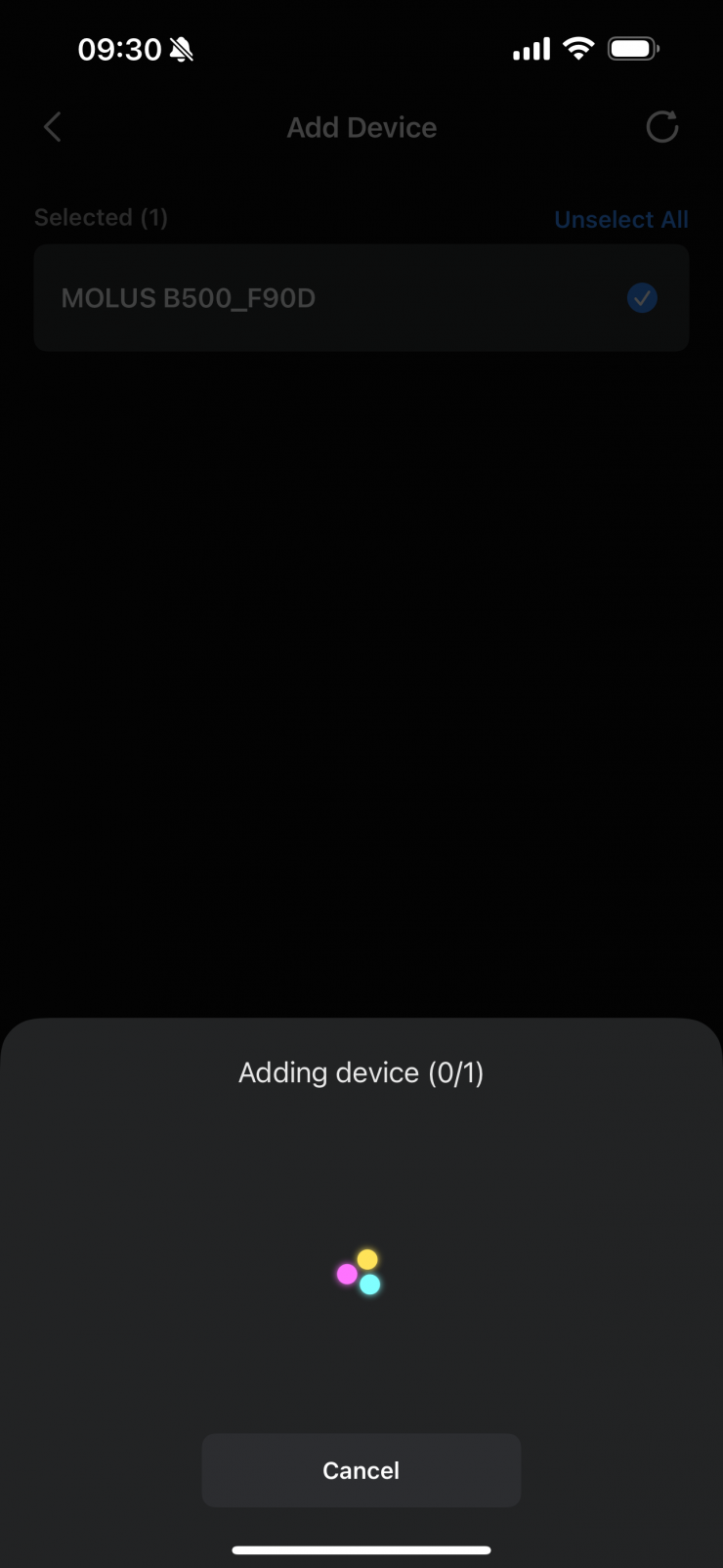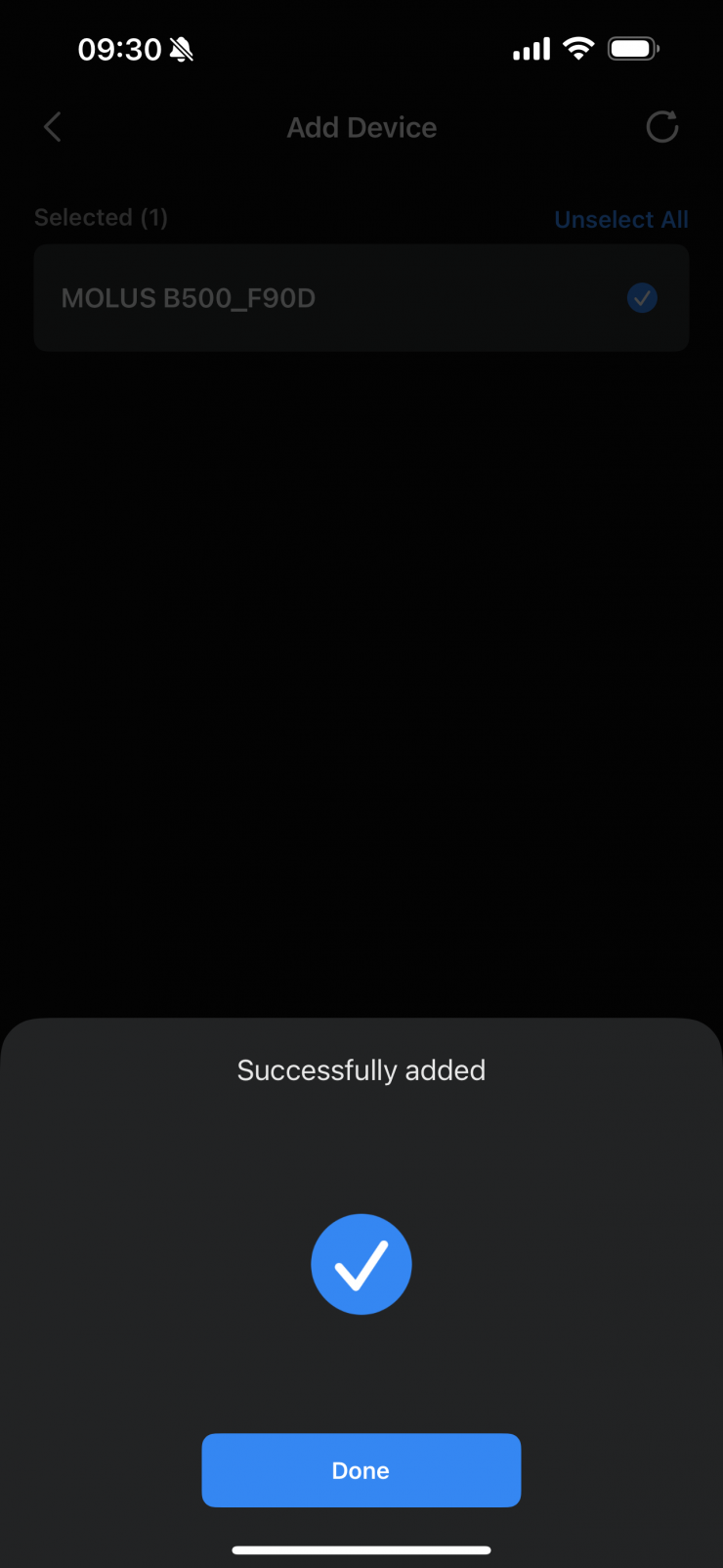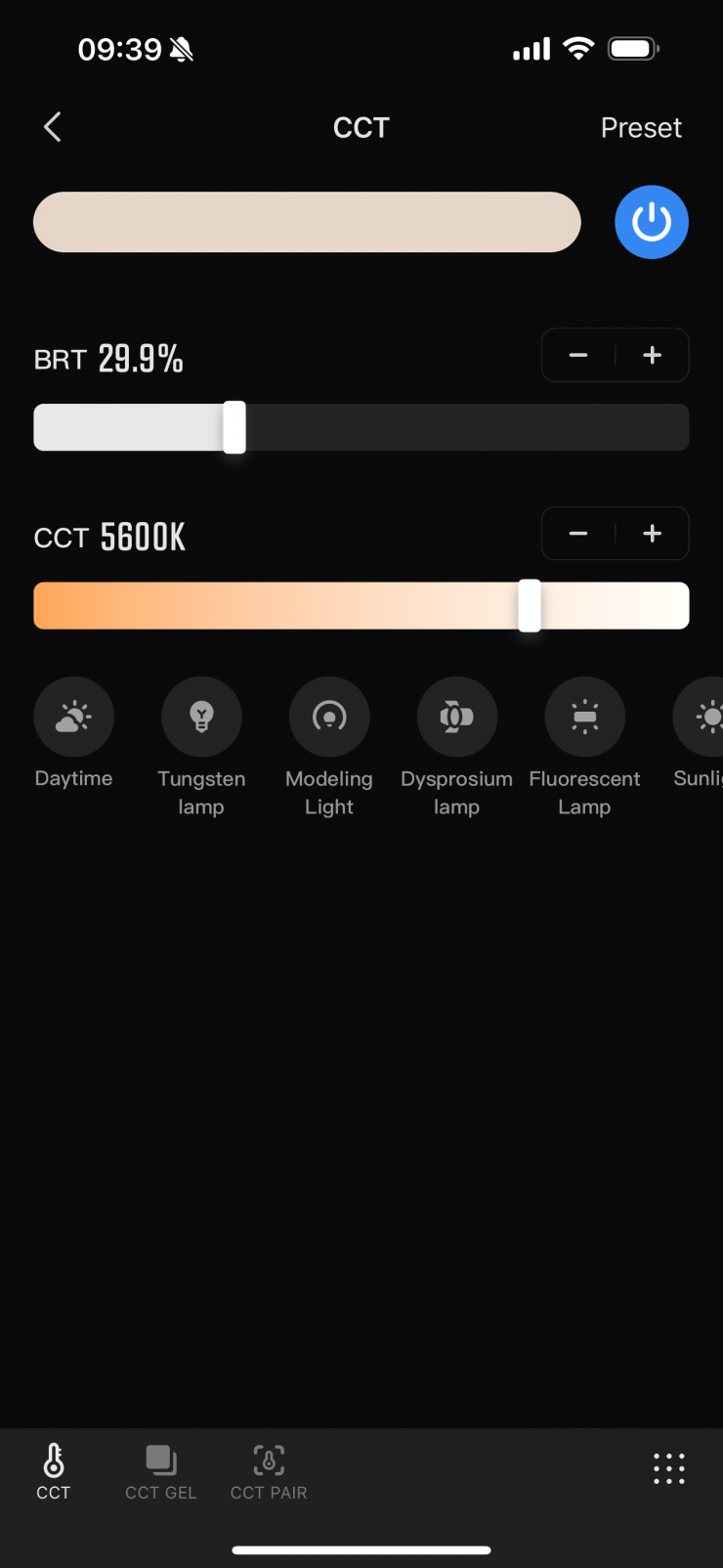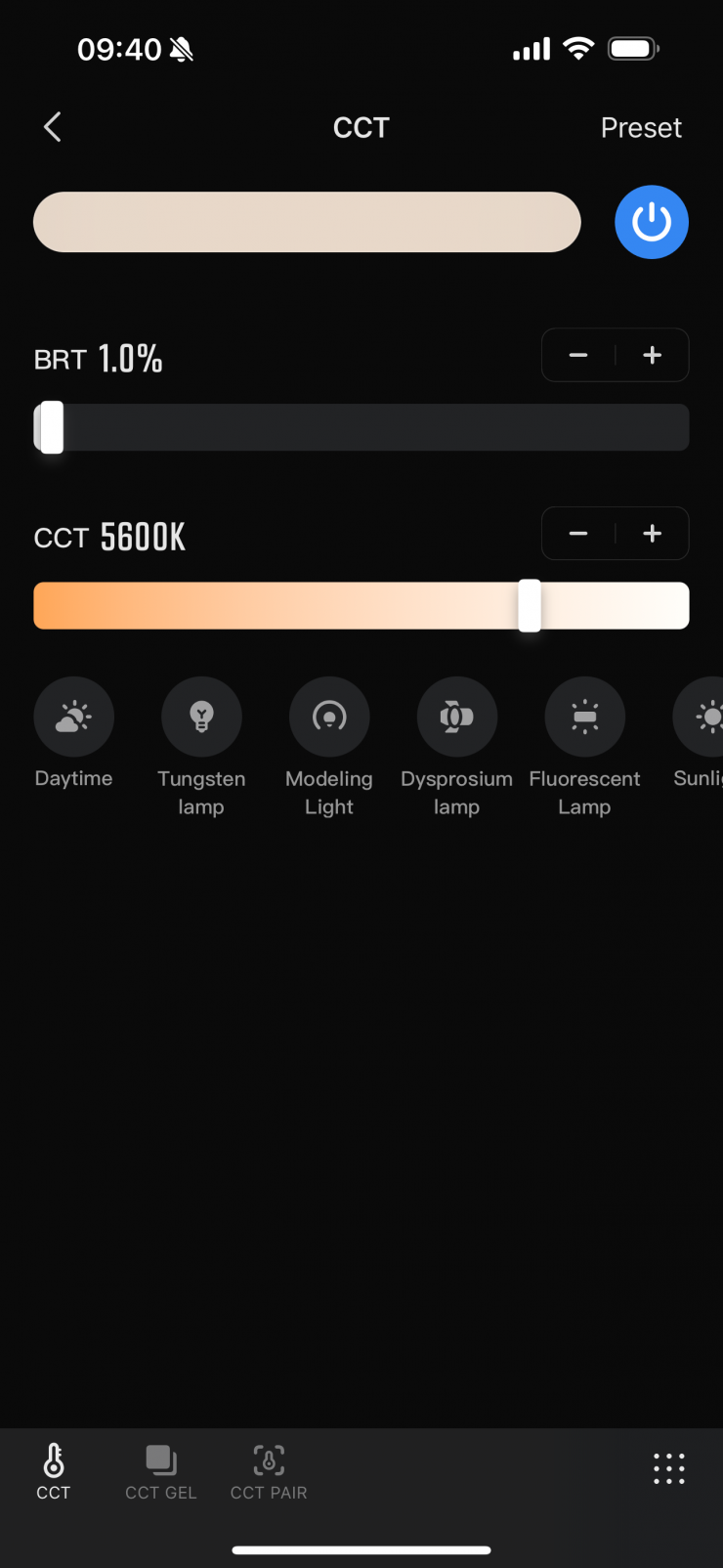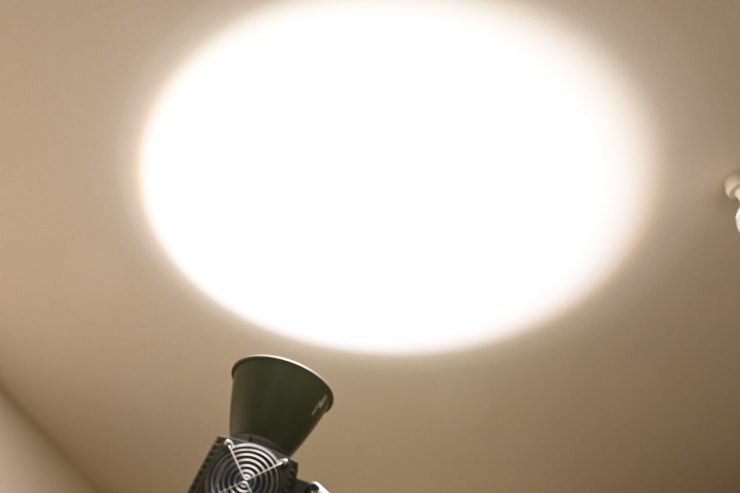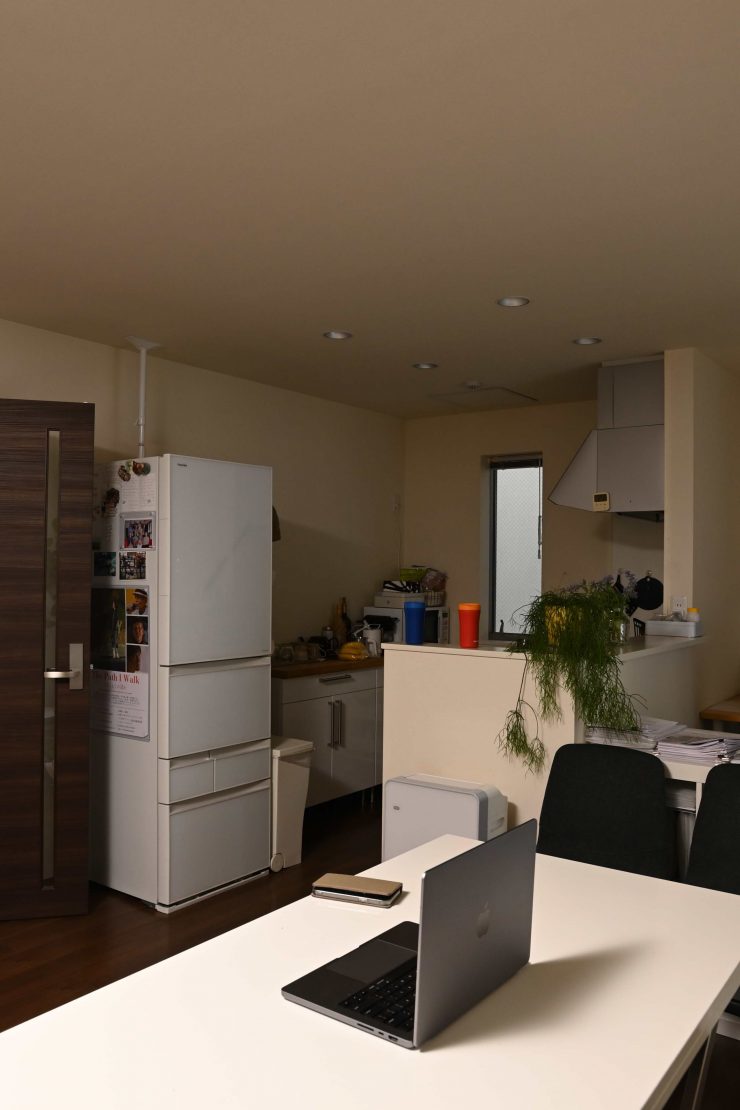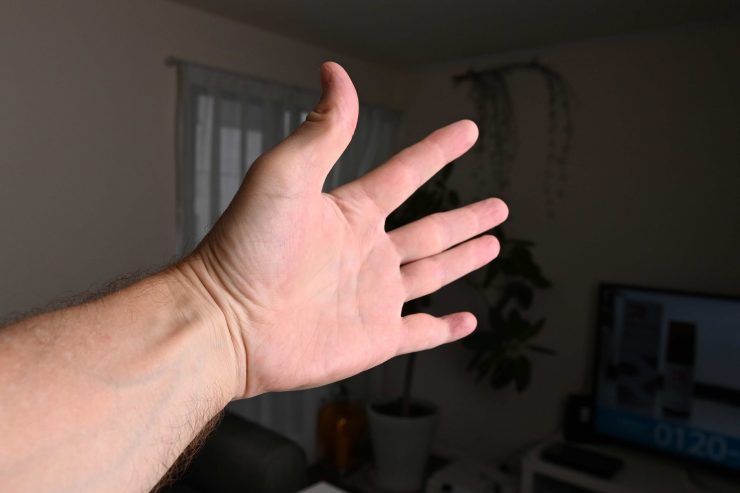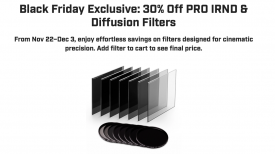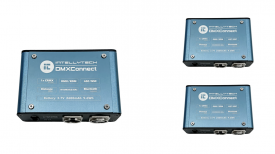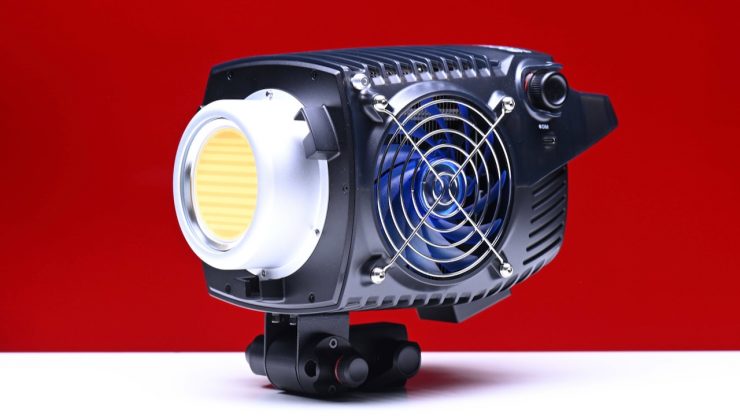
The ZHIYUN MOLUS B500 is a 500W COB spotlight with a CCT range of 2700K-6500K, and a Bowens S-mount.
The MOLUS B500 now joins the MOLUS B200, MOLUS B300, MOLUS G200, MOLUS G300, MOLUS G60, and MOLUS X100 that we first saw at Interbee 2022 in Japan in the series.
Key features
- For Video Production & Vlogging
- Output: 76,400 Lux at 3.3′ w/ Reflector
- 2700-6500K CCT
- AC Power
- Onboard & App Control
- Works with Optional Controller
- CRI 95 | TLCI 97 | TM-30 94/101
- Active Cooling
- Bowens S Accessory Mount
- Includes Reflector & Power Cable
Everyone seems to be making lights these days
ZHIYUN is best known for making gimbals, but they have branched out into selling lights as well. They are not alone. We have seen quite a few companies in the last few years that have never sold lights before entering an already crowded market. This competition has undoubtedly brought prices down, but it does make things confusing for consumers with so many choices now available.
What I like is that ZHIYUN hasn’t just copied what others have already done. They have thought outside the box, and the MOLUS B500 isn’t just some copy of an existing light. It looks very different from anything I have ever seen.
Concept
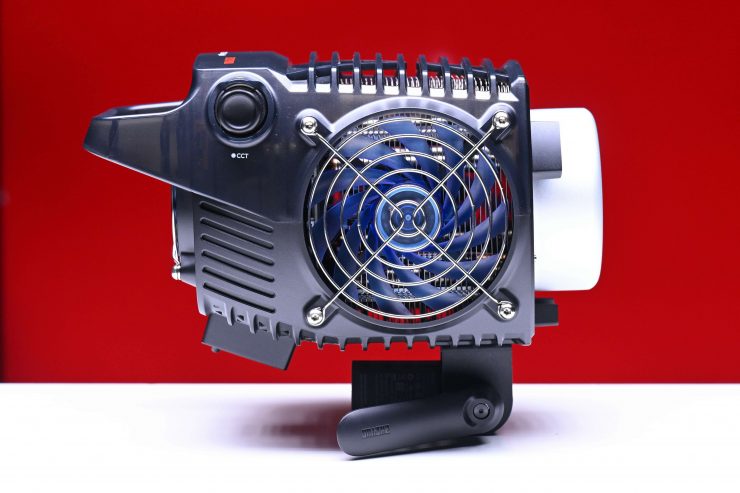
With the MOLUS B500, ZHIYUN wanted to come up with a high-power COB LED light that is suitable for studios, live streaming, and other lighting applications.
The MOLUS B500 features an interesting design and essentially it is a COB LED attached to a giant cooling unit. It looks quite industrial and quite a bit different from other competing lights.
The concept behind all of these LED spotlights, whether they are daylight, bi-color, or full-color, is to make a flexible, fully-featured lighting source that won’t empty someone’s wallet. The only problem with this concept is that so many lighting companies are doing the exact same thing, that it is hard to make your product stand out.
Versatile COB lights in this form factor have become increasingly popular due to their Swiss army knife-style abilities, which enable them to be used for a variety of lighting scenarios. This is why we have seen, and continue to see so many of them being introduced. There are so many similar lights on the market, so it will be interesting to see how the ZHIYUN MOLUS B500 fares in this crowded space.
On paper at least, the MOLUS B500 appears to offer good value for money, given its relatively affordable price. So without further ado, let’s get on with the review.
Build Quality
The overall build quality of the ZHIYUN MOLUS B500 is ok, but not great. Despite its industrial look, ZHYIUN has used a lot of lightweight components and composite materials on the housing. While the core is constructed out of metal, I am not sure how well it would fare if it was dropped.

Above you can see what the internal components of the MOLUS B500 look like.
The dials on the side of the fixture feel very cheaply made and they are not tactile to use, however, in saying that, everything works correctly as advertised.
The Bowens Mount release mechanism is made out of metal which is nice to see.
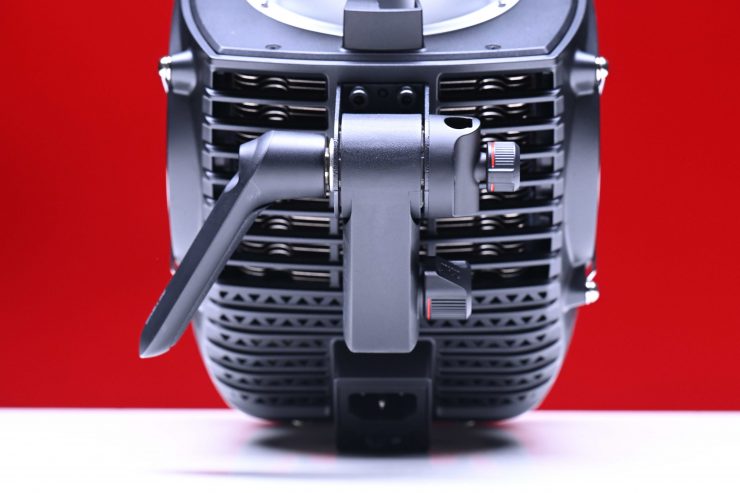
The light stand mount is made out of a hard composite material, and despite its lightweight material, it locks down securely when tightened. It also features a ratchet lever like you find on most lights.
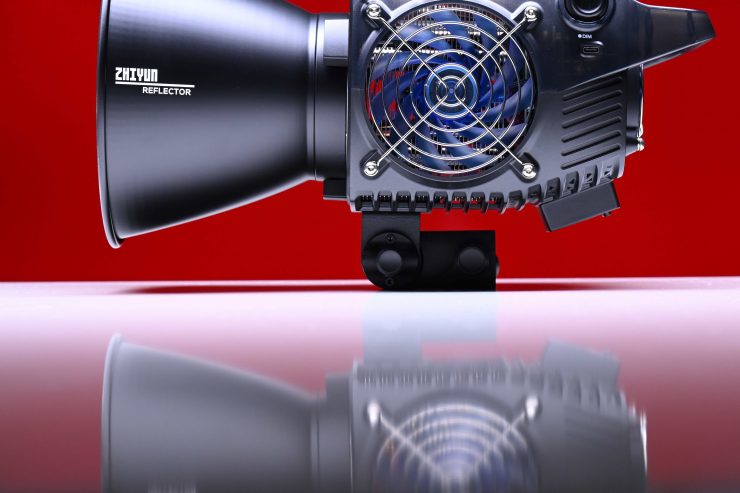
There is only a single mounting hole so there is only one way you can put it on a light stand. This isn’t a big deal because you can rotate it 180 degrees.
Unlike a lot of other similar lights, it also doesn’t feature a locking power connector. Instead, you just get a regular jug plug. I would have preferred to have seen a locking PowerCON cable.
COB Design

Lots of LED lights on the market, including the MOLUS B500 are using COB technology. COB stands for “Chip On Board” where multiple LED chips are packaged together as one lighting module. The advantage of COB LEDs being multi-chip packaged is that the light-emitting area of a COB LED can contain many times more light sources in the same area that standard LEDs could occupy. This results in a greatly increased lumen output per square inch.
The biggest problem with COB LED lights is that unless you diffuse them they are very bright to look at and unsuitable for directly lighting talent.
Weight & Size
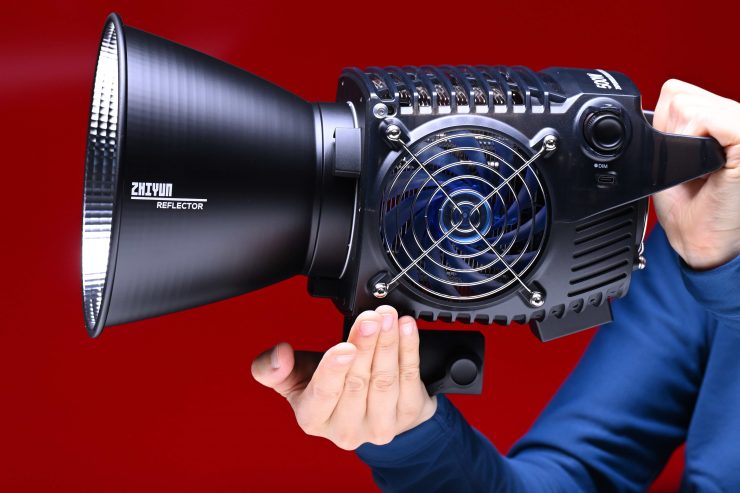
The ZHIYUN MOLUS B500 is reasonably compact as it’s a self-contained all-in-one fixture with its own power supply in-built. It weighs 6.2 lb / 2.8 kg which makes it pretty light for a fixture with this type of power draw and output.
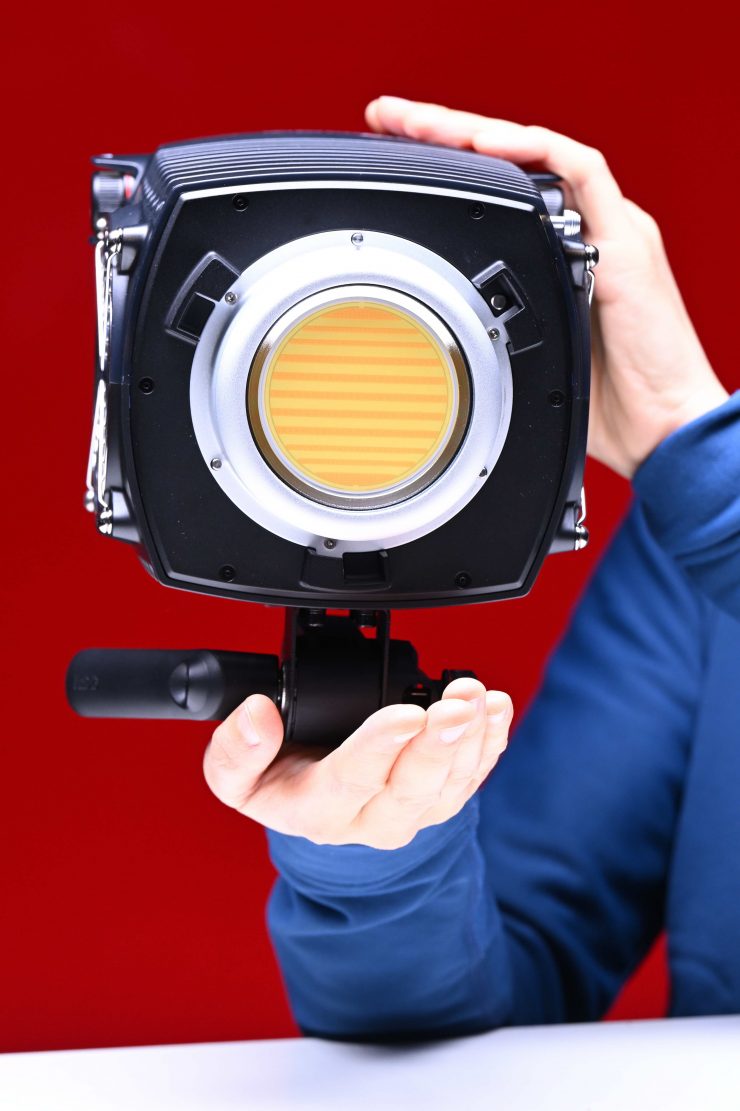
How does the weight of the 6.2 lb / 2.8 kg compare to some other fixtures that could be considered competition? Below you can see.
| WEIGHT | |
| ZHIYUN MOLUS B500 | 2.8 kg / 6.2 lb |
| Neewer CB300B | 2.9 kg / 6.5 lb |
| Nanlite FC-500B | 5.4 kg / 11.9 lb |
| Nanlite FC-300B | 3.7 kg / 8.16 lb |
| Aputure LS 600x | 10.05 kg / 22.15 lb |
| Aputure LS 300x | 11.4 kg / 25.13 lb |
| Godox SL300IIIBI | 3.59 kg / 7.91 lb |
| GVM Pro SD500B | 7.6 kg / 16.75 lb |
| GVM Pro SD400B | 7.6 kg / 16.7 lb |
| Kelvin Epos 600 | 12.18 kg / 26.85 lb |
| Kelvin Epos 300 | 8.2 kg / 18.07 lb |
| Prolycht Orion 300 FS | 6.9 kg / 15.21 lb |
| amaran 300c RGB LED Monolight | 3.52 kg / 7.76 lb |
| Godox SZ300R Zoom RGB LED Spotlight | 3.2 kg / 7.1 lb |
| Lupo Movielight 300 Full Color PRO | 5 kg / 11 lb |
The nice aspect about this low weight is that you can use the light with a reasonably lightweight and compact light stand. Above I have included a lot of lights that have a lower power draw just so you can see the weight difference.
CCT range
The light has a CCT range of 2700K to 6500K. This is a decent enough range and it will suit most people’s needs.
Beam Angle
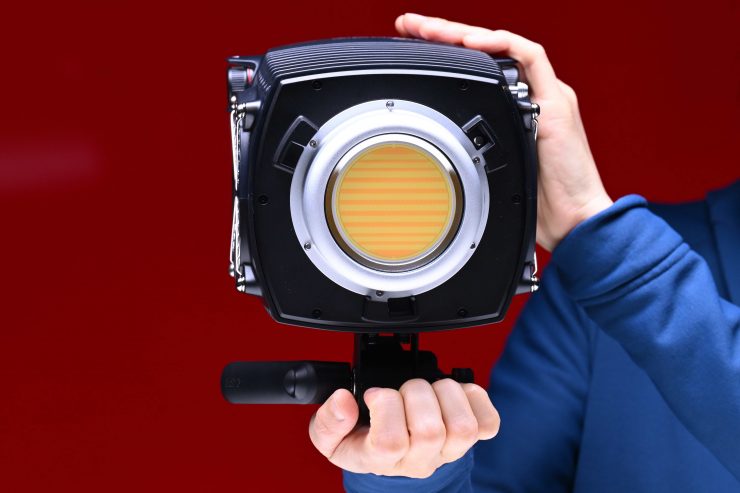
The beam angle of the fixture when used open face, is 105°.
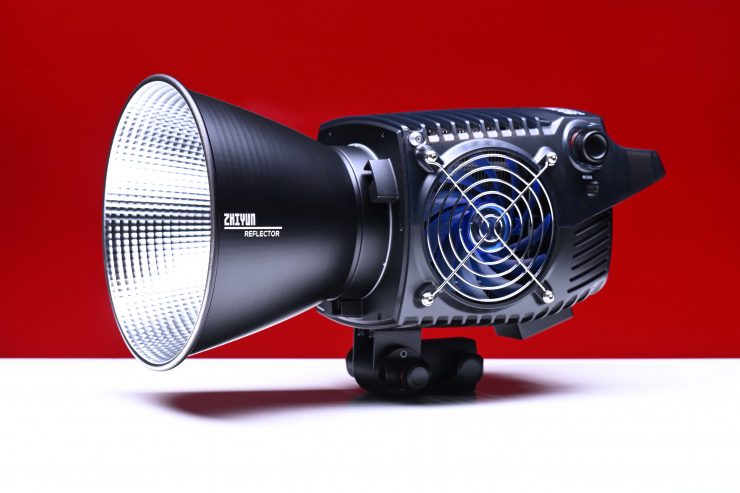
If you use the light with its included reflector it is 47°, which is a little narrower than the 55° that most other reflectors in similar competing products have.
The included reflector looks very similar to what you get with most Bowens mount fixtures of this size.
Mounting
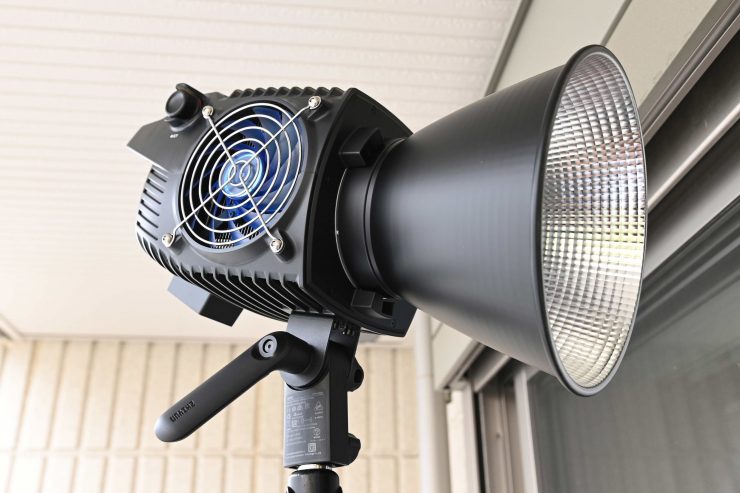
As I mentioned earlier, the MOLUS B500 comes with a reasonably sturdy adjustable mount on the bottom of the fixture.
This worked reasonably well, and it didn’t seem to have any issues supporting the weight of a reasonably large softbox.
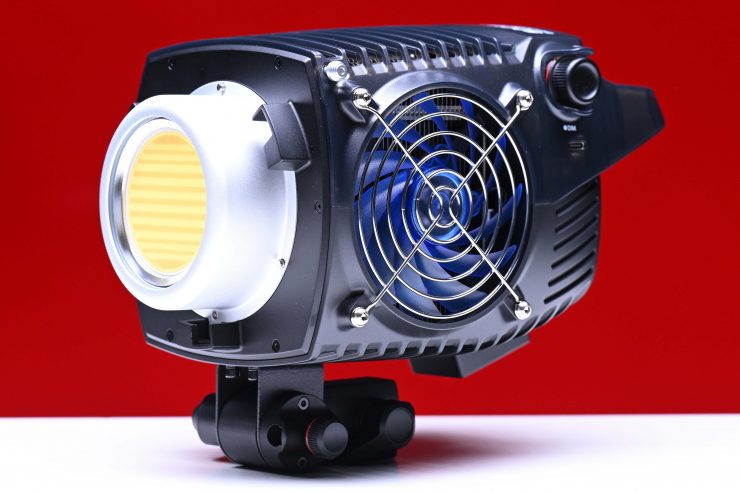
The mount also has an umbrella mounting hole in it which is handy.
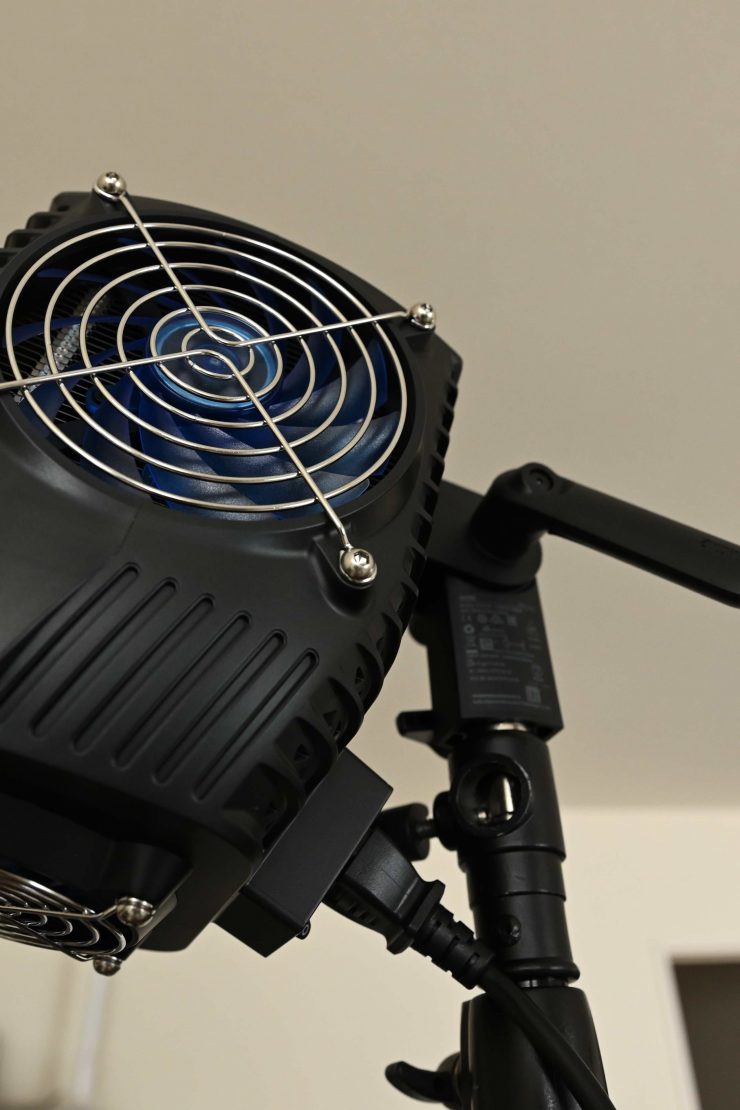
The only problem with the way the power input was designed is that you can’t tilt the light straight up.
Power Draw
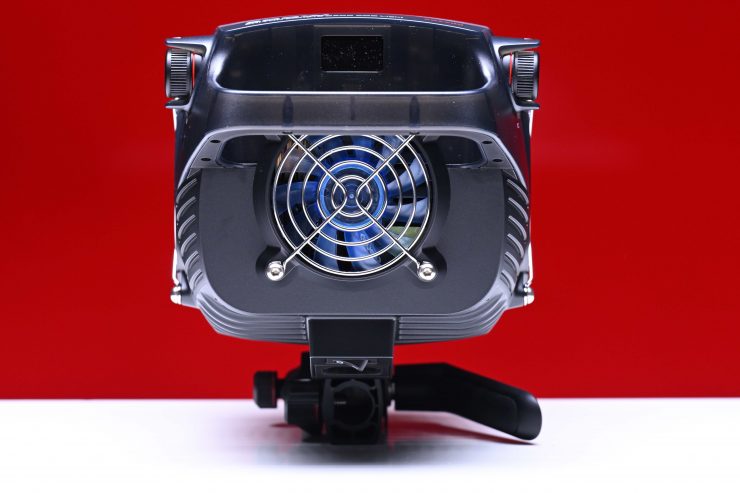
The power draw of the MOLUS B500 is 500W. The power cable for the light is around 3m / 9.9′ long. I would have liked to have seen a longer power cable included.
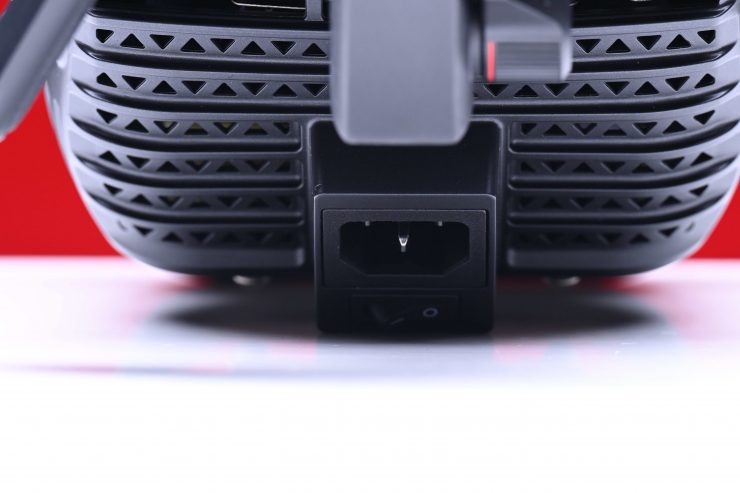
The power input is on the bottom of the fixture.
Unfortunately, ZHIYUN doesn’t give you many options when it comes to powering the fixture. There is no way of running it via a camera battery like you can from so many competing fixtures, or from a DC source.
In the kit, you just get an AC power cable. Yes, I know these types of lights are arguably aimed at indoor studio use, but given their relatively low weight it would have been nice to have seen a camera battery or DC powering option, even if this was an optional extra. A lot of people looking at lights want versatility and the ability to use their fixtures in a variety of different ways and in different environments. In saying that, running higher-power draw lights via batteries can be expensive.
How does it stay cool?
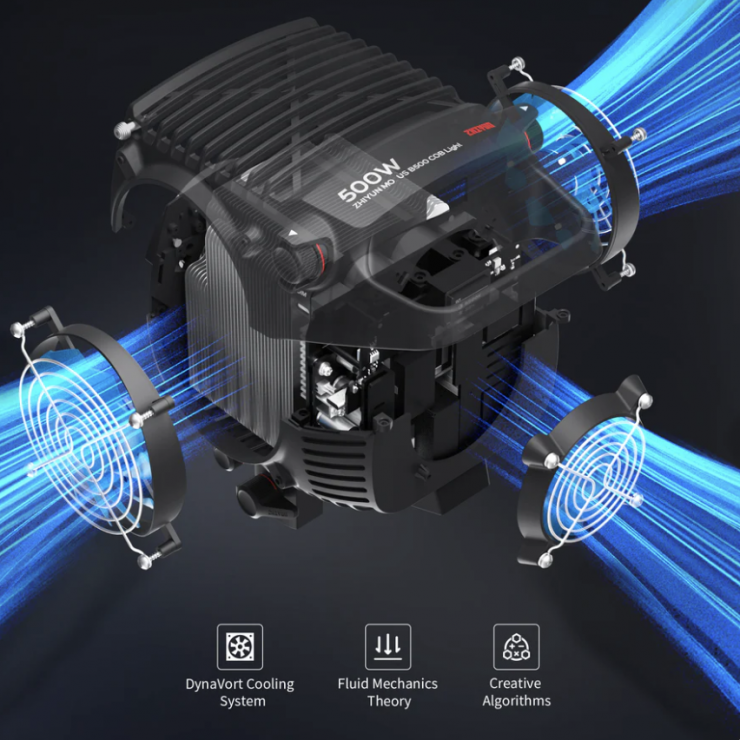
COB LED lights generate a lot of heat, but unlike a lot of other ZHIYUN lighting fixtures, the MOLUS B500 doesn’t have a separate light head and power supply/controller to help with the cooling. As the MOLUS B500 is a self-contained unit with an in-built power supply it features a couple of very large fans to deal with the heat.
According to ZHIYUN, the fixture utilizes the DynaVort Cooling System MK V, which includes two pressure sensors to eliminate turbulence and optimize airflow. This is claimed to result in significantly improved heat dissipation efficiency within a smaller volume. Even lights with hundreds of watts now only take up 1/2 to 1/5 of the space and are 70% lighter than equivalent power products.
The caveat with using this all-in-one design is that the three large fans do generate quite a bit of noise, especially when the light asset at over around 50% output. Unfortunately, there are no controls to adjust the speed of the fans.
These three fans when all working at once generate quite a bit of noise.
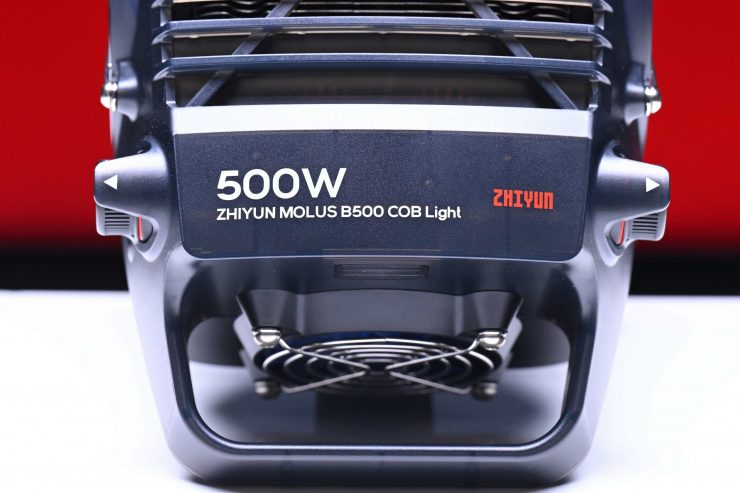
I personally found the fan noise to be borderline too loud if you were going to be using the fixture in audio-critical environments. If you were using the the MOLUS B500 as a key light for an interview, the noise it produces may be too loud for a lot of people.
Bowens Mount
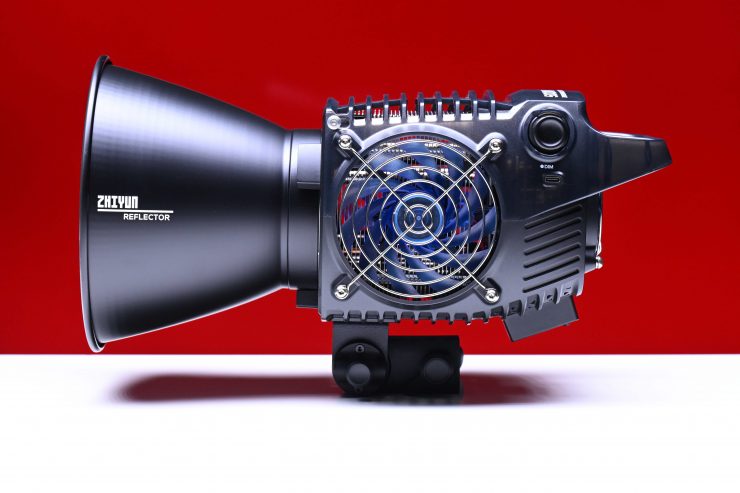
Like most COB spotlights, the MOLUS B500 utilizes a Bowens S mount. This allows you to use readily available lighting modifiers and accessories that you may already own.
Unlike almost every Bowens S mount that doesn’t feature a locking mechanism, the included reflector doesn’t wobble around on the mount.
Controls & Menu System
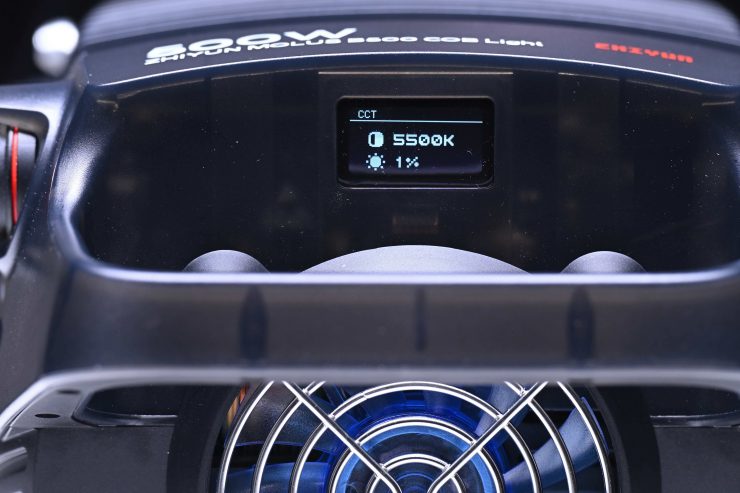
The rear LCD display on the light is very small, and although it is fairly basic, it does show you key information about the light’s operating modes, brightness, CCT, etc.
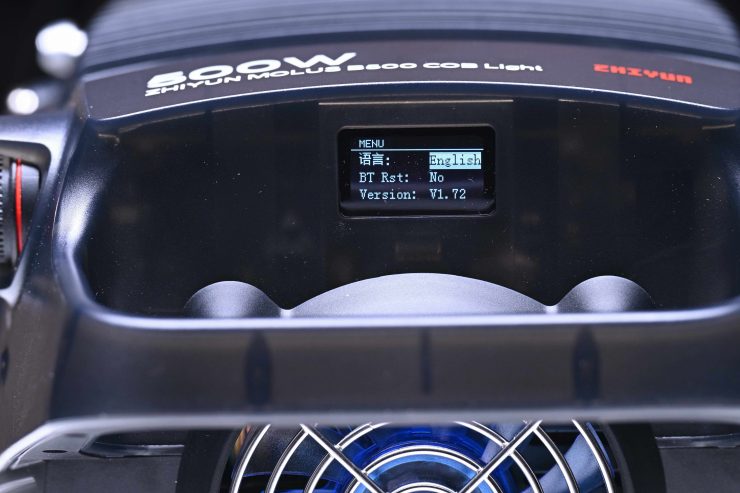
As I say in every lighting review, with a good light, you shouldn’t have to read a manual to work out how to operate it. You should be able to turn it on and use it straight away. With the MOLUS B500, it is relatively easy to make changes to the CCT and brightness. The menu is very basic, but that’s probably ok.
There is an optional Zhiyun K1 Controller for the MOLUS B100, B200, B300 & B500 ($49 USD) that is capable of making adjustments from a distance by using an attached 6.5′ cable. The controller enables you to adjust the brightness and color temperature without needing to physically reach the rear of the fixture.
Operating Modes
The lights have the following lighting modes that you can use directly on the fixture.
- CCT
- FX
There are additional modes, however, they can only be accessed through the ZY Vega App.
CCT
In CCT mode you use the dial on the back of the light to make adjustments in increments of 100K. You can choose CCT values anywhere from 2700-6500K.
FX
In the FX mode, you can choose from a handful of effects. You can adjust the speed and intensity as well as the CCT value.
No +/- Green adjustment
The fixtures don’t include +/- Green adjustment so you can’t correct any tint.
ZY Vega
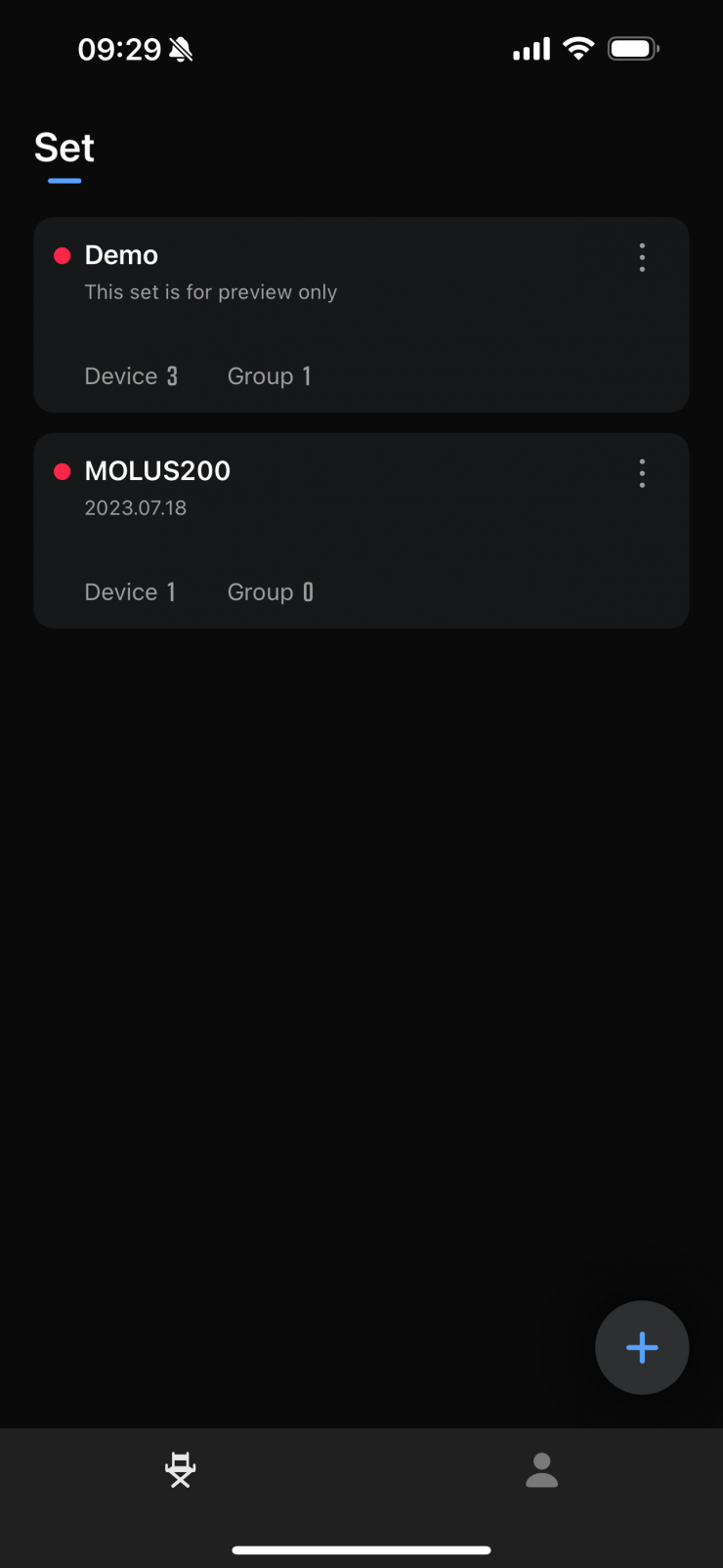
There is an app available for controlling the light called ZY Vega.

You will get a request for the app to use Bluetooth the first time you use it.
The next step is to create a Set.

Once you have created a Set, you then add fixtures to that set.
Once you add a fixture it takes about 5-10 seconds to set it up.
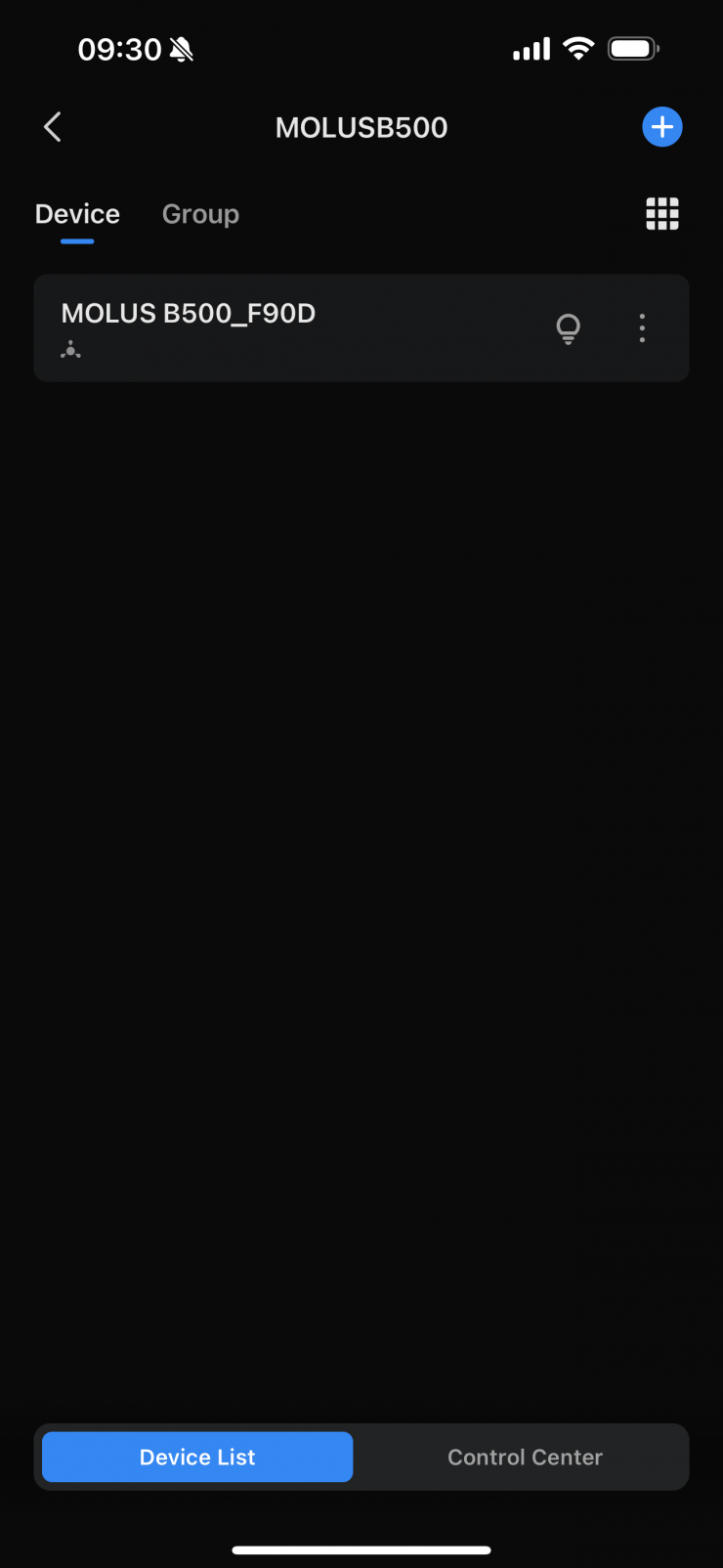
Once everything is set up the device or devices will be listed in the main window.
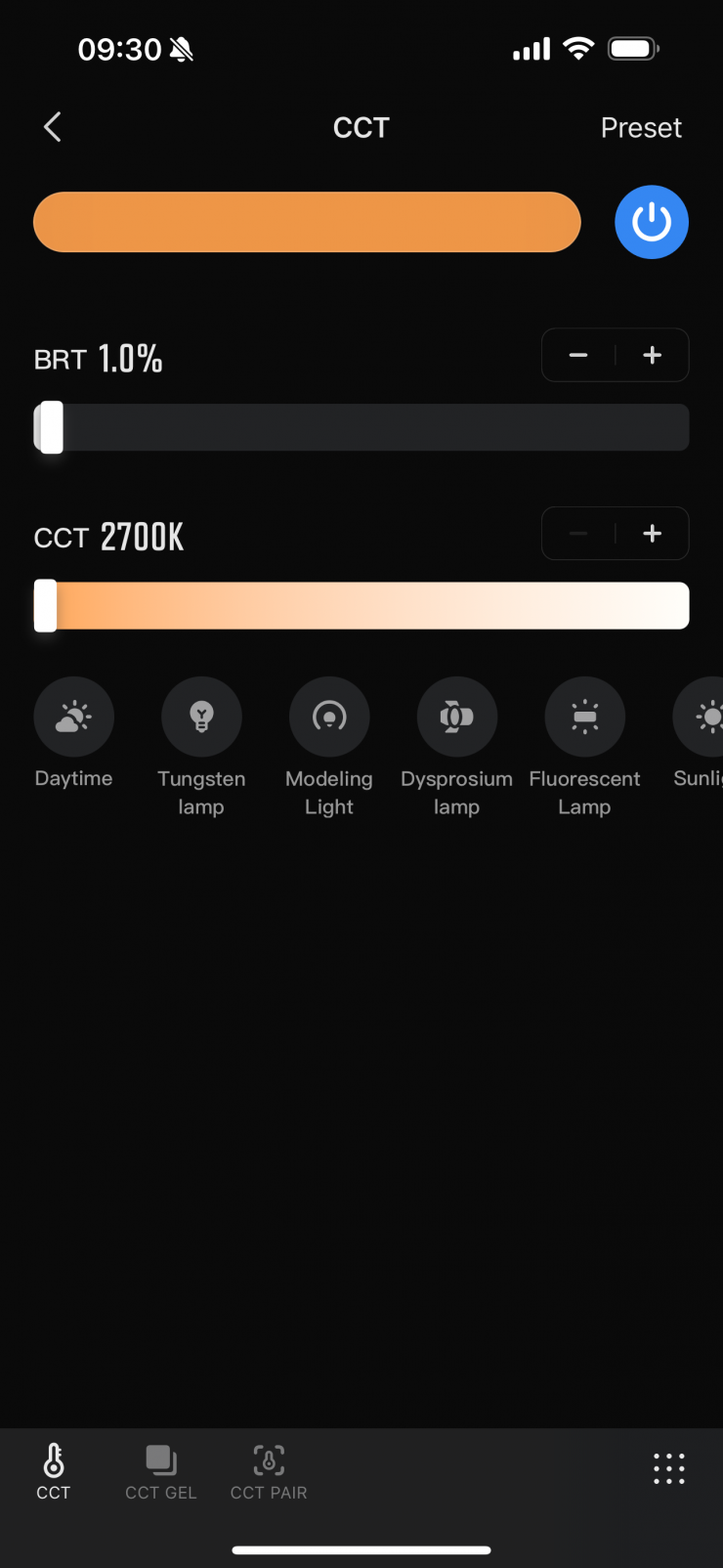
By clicking on the fixture you then get taken to the control interface. Here you can adjust the CCT and brightness. There are also options for selecting a wide array of light sources. You can’t access these modes unless you use the app.
You can make adjustments to the CCT in incumbents of 50K and you can dim the light in increments of 0.1%. The light won’t turn on unless it is at 1%.
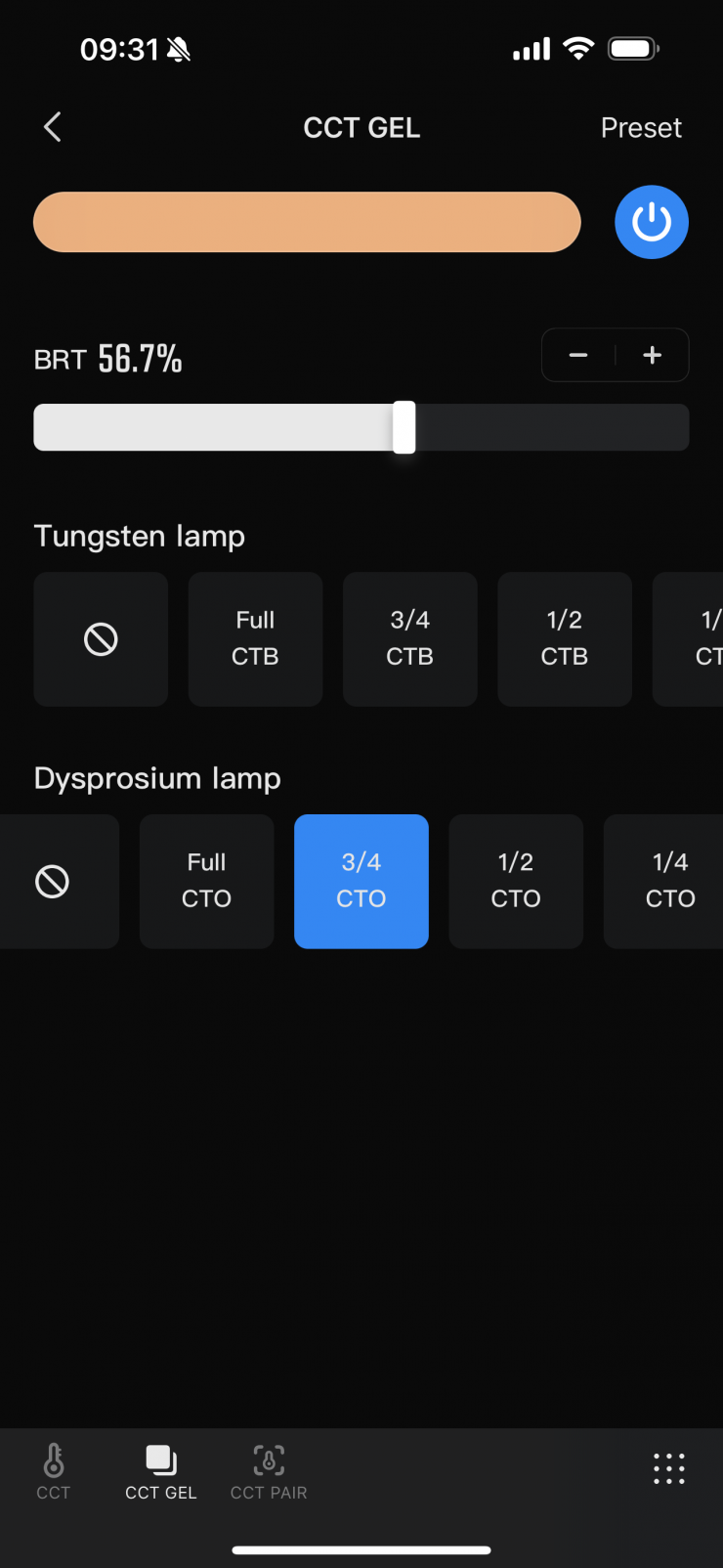
There is also the ability to access two other modes that can’t be accessed if you don’t use the app. The first is CCT Gel where you can apply CTO gels for Tungsten lamp or Dysprosium lamp.

The second mode is CCT Pair. In this mode, the app will ask you to access your camera. Here you can select another lighting source and press match.
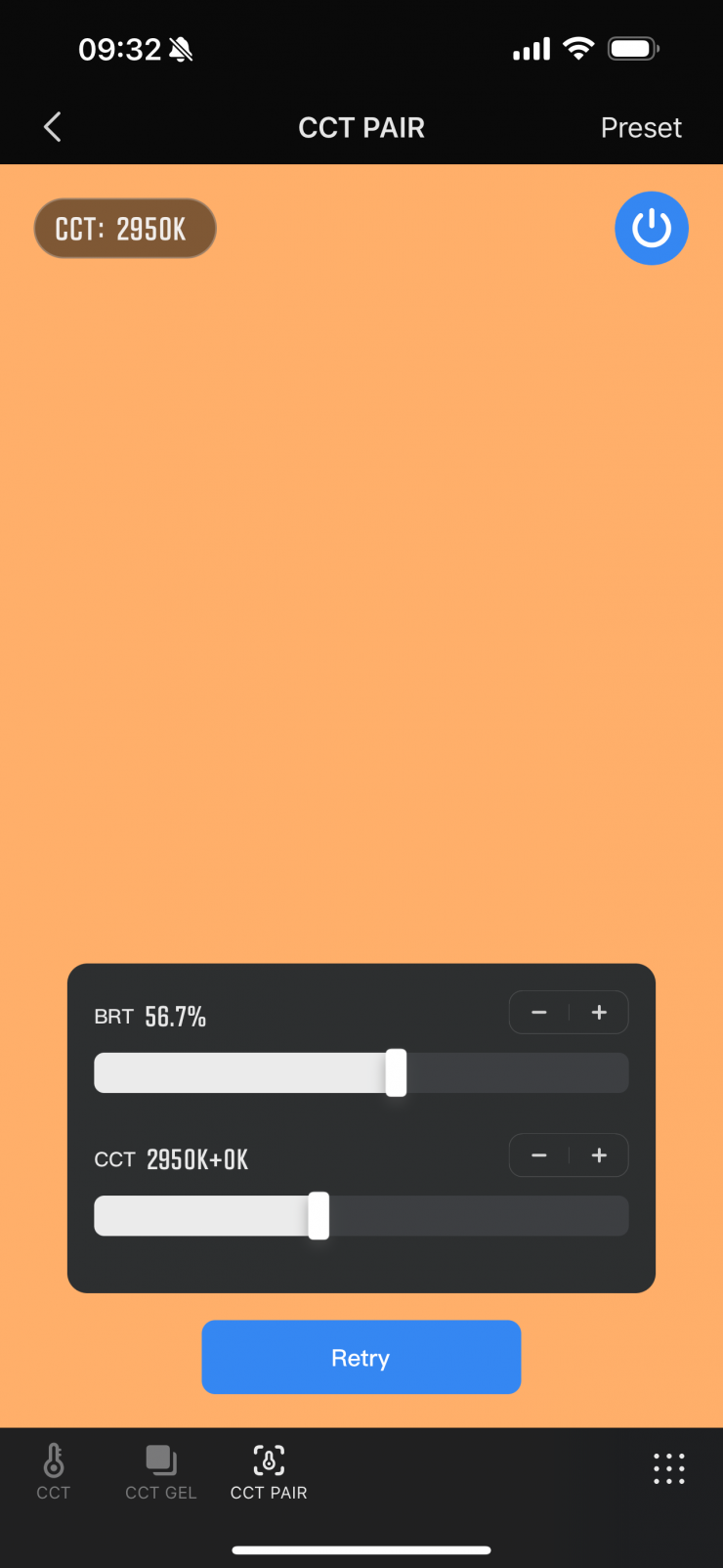
The light will then try and replicate that lighting source. You can make adjustments to that reading if you like. What you need to remember is that this is a Bi-color fixture, so it is only going to be able to replicate certain lighting sources.
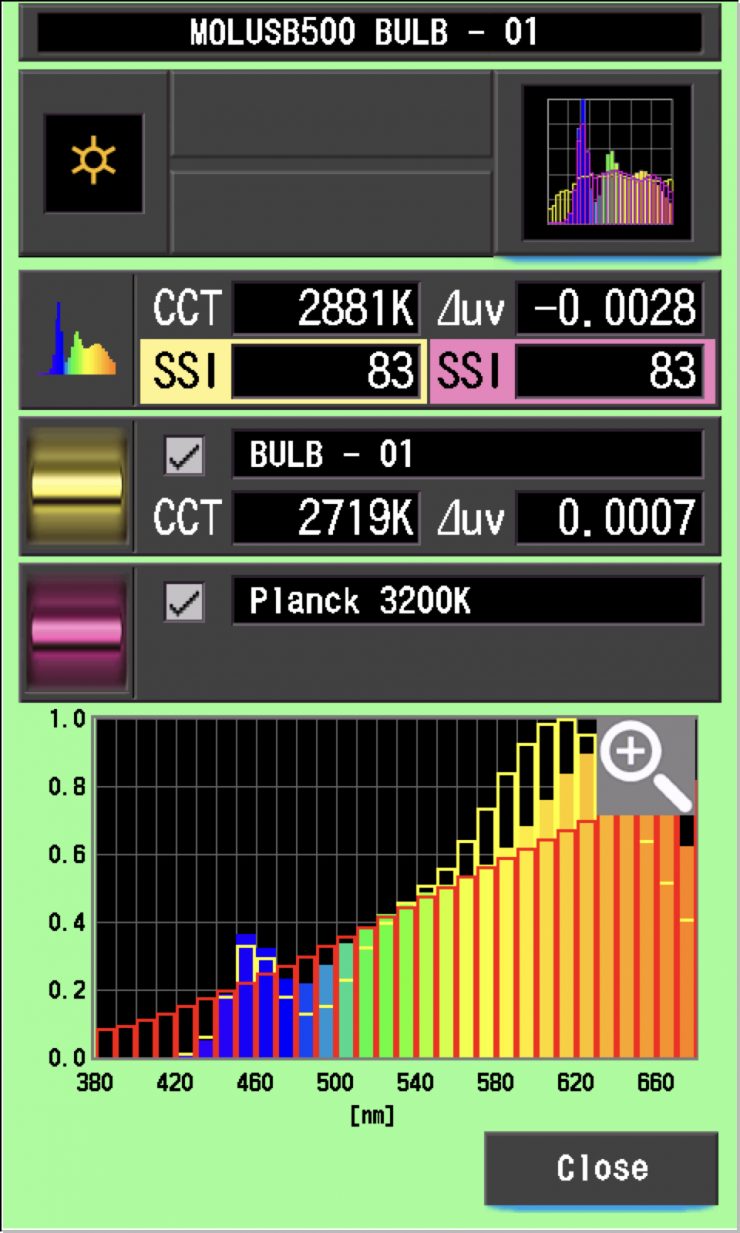
I decided to see how well it worked by trying to match a tungsten LED bulb. Above you can see the SSI comparison between a reading I took from the MOLUS B500 and the actual bulb I was trying to replicate. As you can see, it did an ok job at replicating it, but it was far from perfect.
The app works reasonably well and it is pretty intuitive, but because it uses Bluetooth there is a bit of lag from when you make changes on the app until you see them being reflected on the light.
Photometrics
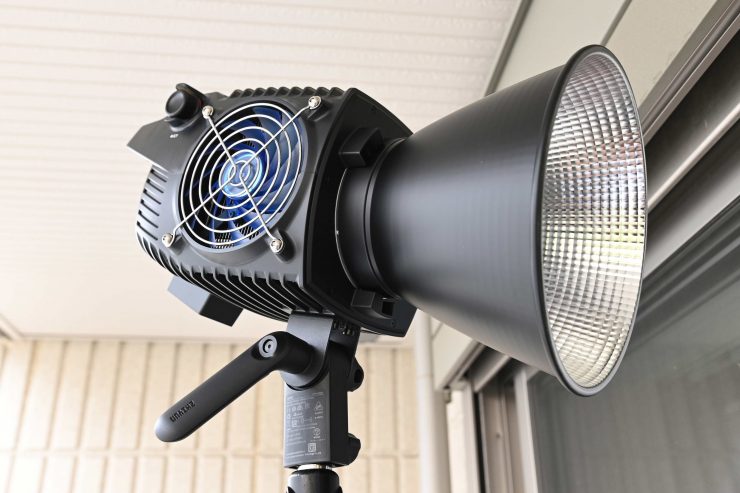
So now let’s get to the photometric results. I always test lights in this way so that I get a reference to how they compare to other fixtures. Results only tell part of the story and should never be used alone to judge a light. I have found from extensive testing over the years that certain lights that have good photometric results don’t always look good, and lights that have worse photometric scores can sometimes look better than their results indicate.
You can’t judge a light from one set of photometric results. You have to look at all of the different results to be able to come to a conclusion. You wouldn’t read one chapter of a book and think you know the whole story, so don’t look at one set of results for a light and think you can make a conclusion because you can’t.
Different lights can also look different depending on what camera you happen to be using.
Output & Color Temperature Accuracy
I tested the ZHIYUN MOLUS B500 at a variety of CCT settings with a Sekonic C-800 Spectrometer to find out how much output the light had and how accurate the Kelvin color temperature reproduction was. All readings are taken at a distance of 1m (3.28ft) in a controlled environment. The readings were also taken directly from the lighting source. In the case of using the lights with their Reflector, the readings were taken from the end of those attachments.
ZHIYUN MOLUS B500 5600K (open face)
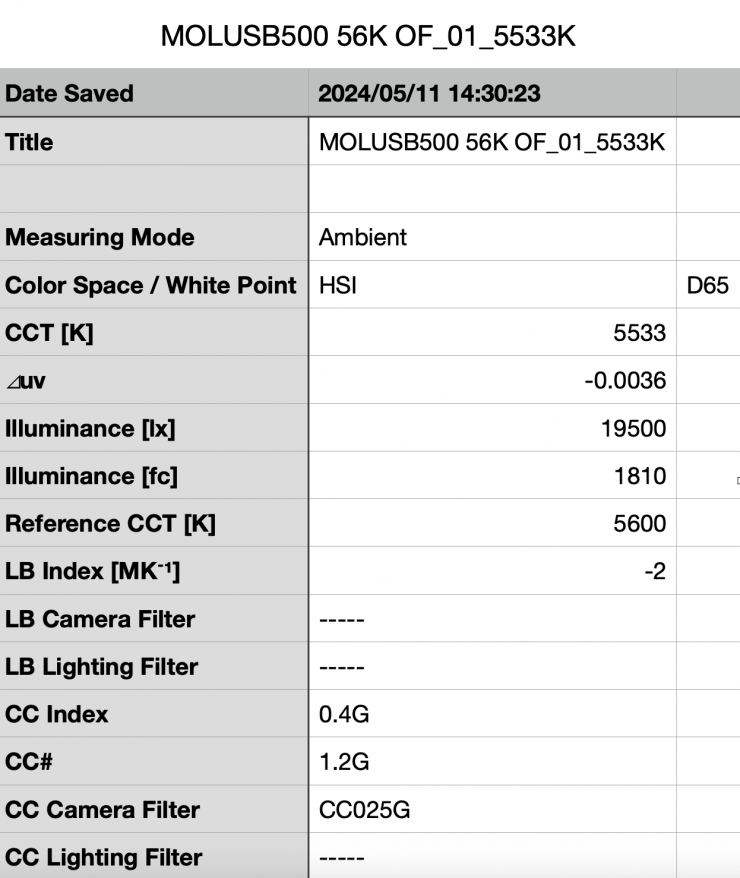
Above you can see the MOLUS B500 recorded an output of 19,500 lx (1810 fc) when set at 5600K and used open face.
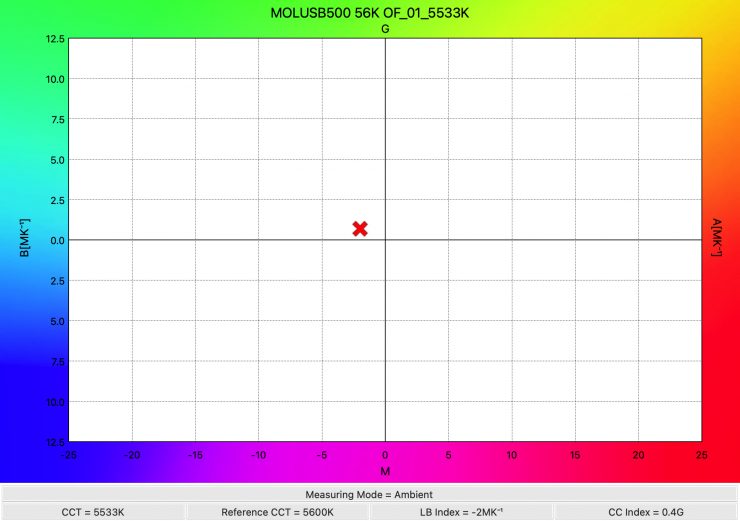
The light recorded a CCT reading of 5533K which was 77K off being correct.
ZHIYUN MOLUS B500 3200K (open face)
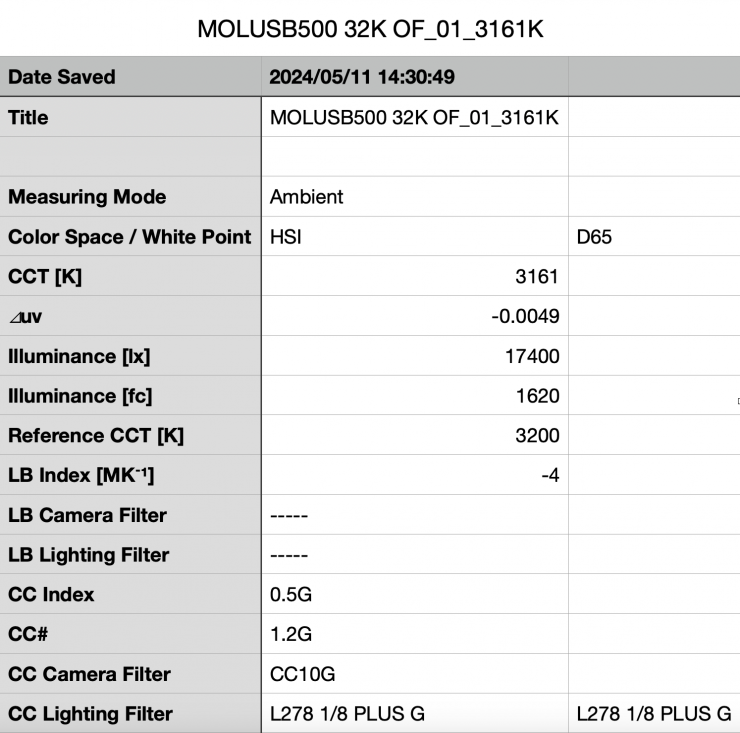
Above you can see the output when it was set at 3200K in the open face configuration was 17,400 lx (1620 fc), which was 12.06% lower than the 19,500 lx it produced at 5600K.
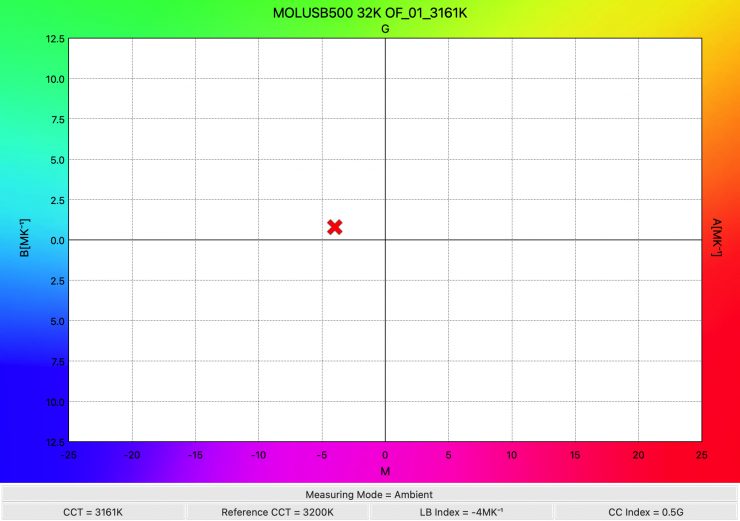
As far as CCT accuracy goes, it recorded a very good reading of 3161K.
Ok, so let’s now look at how much output the light had at various CCT settings when used open face.
ZHIYUN MOLUS B500 Open Face
| OUTPUT | CCT READING | |
| 2700K | 15,700 lx | 2724K |
| 3200K | 17,400 lx | 3161K |
| 4500K | 19,400 lx | 4428K |
| 5600K | 19,500 lx | 5533K |
| 6500K | 19,400 lx | 6409K |
The fixture has the most amount of output at 5600K.
As you can see, the output varies by 24.2% across the CCT range. It was the most accurate when used at 2700K, but it was also pretty accurate at all CCT settings. The most it varied by at any setting was 91K.
As a comparison, the ZHIYUN MOLUS B500 when set at 5600K and used open face had 13.33% less output than the Nanlite FC-500B (22,100 lx).
At 3200K, the ZHIYUN MOLUS B500 when set at 5600K and used open face had 1.14% less output than the Nanlite FC-300B (17,600 lx).
ZHIYUN MOLUS B500 (Reflector 47°)
So, now let’s see how much output the lights have when used with its 47° reflector.
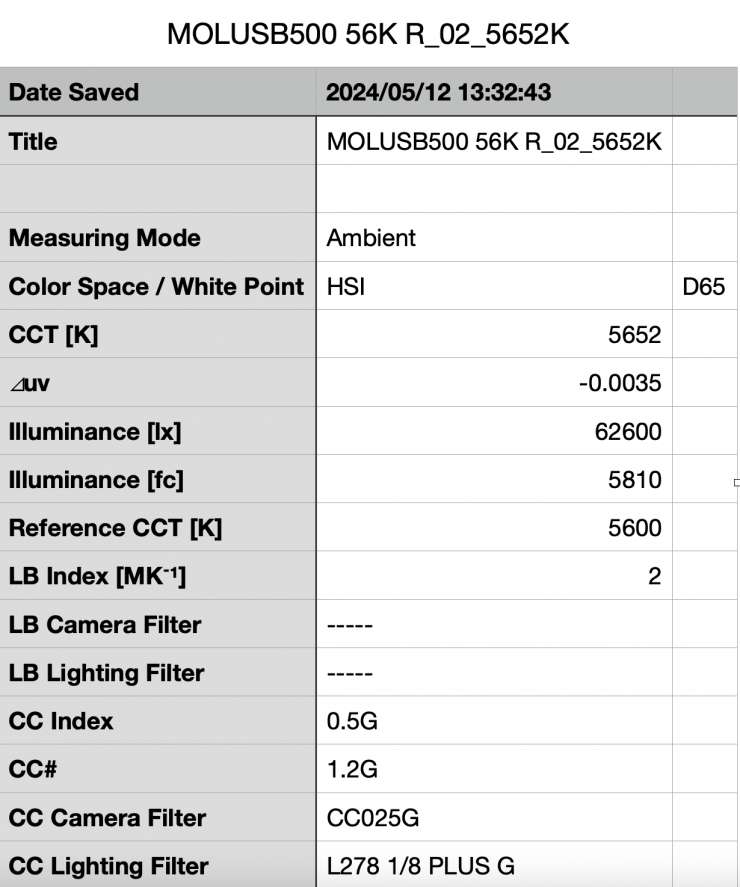
Above you can see the light’s output when it was set at 5600K with the reflector was 62,600 lx (5810 fc). This was 221% more than the 19,500 lx it produced at 5600K when used open face. It is important to note that this measurement was made from the end of the reflector. This was a good amount of output for a fixture that draws 500W.
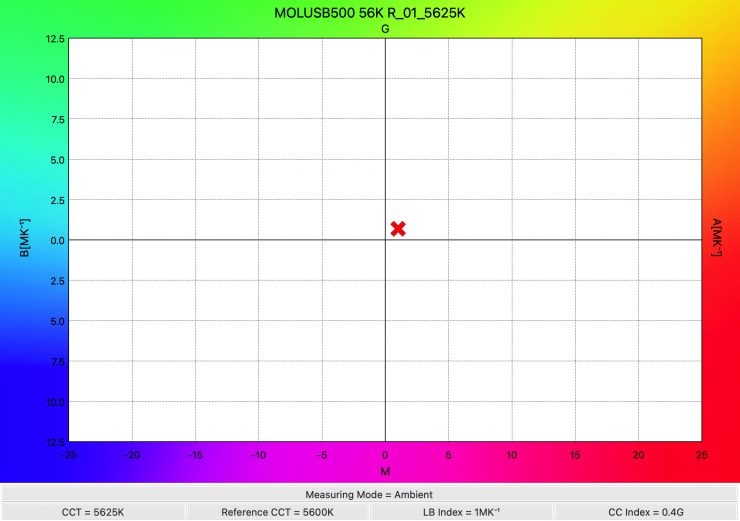
As far as CCT accuracy goes, it recorded a very accurate reading of 5625K. The CCT accuracy when using the reflector was actually better than when the light is used open face.
ZHIYUN MOLUS B500 3200K (47° Reflector)
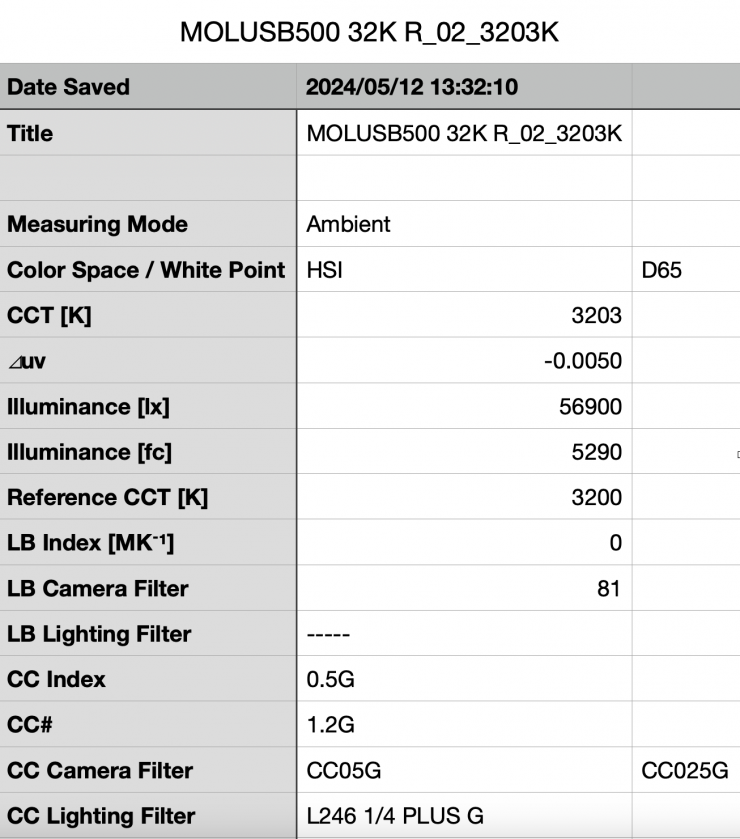
Above you can see the output when it was set at 3200K with the standard reflector was 56,900 lx (5290 fc), which was 227% more than what it output at 5600K when used open face.
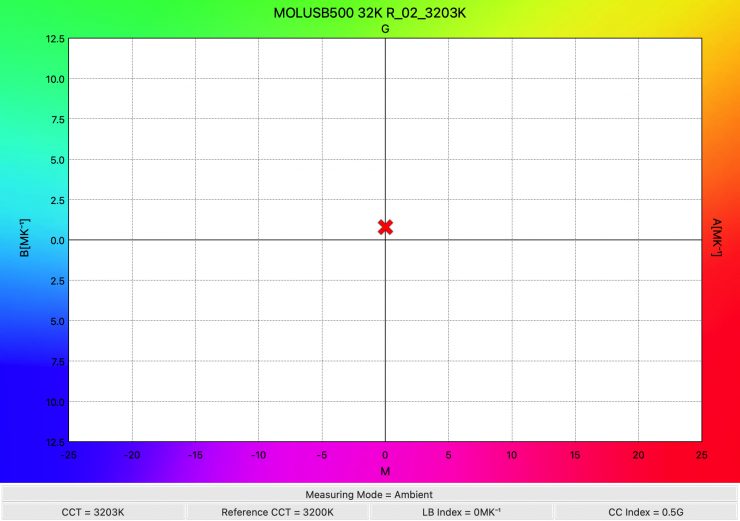
As far as CCT accuracy goes, it recorded an almost perfect reading of 3203K which was an outstanding score and better than the result I obtained when using the light open face.
Ok, so let’s now look at how much output the light had at various CCT settings when used with its reflector.
ZHIYUN MOLUS B500 47° Reflector
| OUTPUT | CCT READING | |
| 2700K | 52,400 lx | 2755K |
| 3200K | 56,900 lx | 3203K |
| 4500K | 63,100 lx | 4516K |
| 5600K | 62,600 lx | 5652K |
| 6500K | 61,300 lx | 6576K |
The fixture has the most amount of output at 4500K.
As you can see, the output varies by 20.41% across the CCT range. It was the most accurate when used at 3200K, but it was also very accurate at all other CCT values. The light was no more than 76K off being correct at any setting.
As a comparison, the ZHIYUN MOLUS B500 when set at 5600K and used with its reflector had 17.44% more output than the Nanlite FC-500B (53,300 lx).
At 3200K, the ZHIYUN MOLUS B500 when set at 3200K and used with its reflector had 36.45% more output than the Nanlite FC-500B (41,700 lx).
How does the output compare against the competition?
Below you can see how the Neewer CB300B compares to some of the competitors when it comes to output when all of the lights are using their included reflectors.
5600K
| Output at 5600K | CCT (K) | |
| ZHIYUN MOLUS B500 | 62,600 lx* (47° reflector) | 5652K |
| Neewer CB300B | 89,200 lx* (25° reflector) | 5706K |
| Nanlite FC-500B | 53,300 lx* (55° reflector) | 5756K |
| Nanlite FC-300B | 29,900 lx* (55° reflector) | 5746K |
| Kelvin Epos 300 | 19,400 lx* (55° reflector) | 5561K |
| Prolycht Orion 300 FS | 25,900 lx* (55° reflector) | 5665K |
| Zhiyun MOLUS G200 Bi-Color LED Monolight | 56,000 lx (47° reflector) | 5674K |
| Aputure LS 600x | 68,400 lx* (hyper reflector) | 5397K |
| amaran 300c RGB | 26,580 lx** (65° reflector) | NA |
| Lupo Movielight 300 Full Color PRO | 28,600 lx* (55° reflector) | 5779K |
| Aputure Light Storm 300x | 17,500 lx* (hyper reflector) | 5295K |
*Independently tested
**Manufacturers claims
As you can see, the output of the ZHIYUN MOLUS B500 when used with its reflector has a decent amount of output. Its CCT reading at 5600K was excellent, and almost as good as the Kelvin Epos 300.
3200K
| Output at 3200K | CCT (K) | |
| ZHIYUN MOLUS B500 | 56,900 lx* (47° reflector) | 3203K |
| Neewer CB300B | 77,500 lx* (25° reflector) | 3223K |
| Nanlite FC-500B | 41,700 lx* (55° reflector) | 3119K |
| Nanlite FC-300B | 30,000 lx* (55° reflector) | 3272K |
| Kelvin Epos 300 | 18,500 lx* (55° reflector) | 3265K |
| Prolycht Orion 300 FS | 25,000 lx* (standard reflector) | 3148K |
| Zhiyun MOLUS G200 Bi-Color LED Monolight | 41,600 lx (47° reflector) | 3249K |
| Aputure LS 600x | 49,600 lx* (hyper reflector) | 3064K |
| amaran 300c RGB | 21,390 lx** (65° reflector) | NA |
| Lupo Movielight 300 Full Color PRO | 28,200 lx* (55° reflector) | 3139K |
| Aputure Light Storm 300x | 15,100 lx* (hyper reflector) | 3144K |
*Independently tested
**Manufacturers claims
As you can see, the MOLUS B500 has a good amount of output. Its CCT reading at 3200K was better than any of the other competing fixtures I have tested.
ZHIYUN MOLUS B500 with DoPChoice Octa 3 Softbox
Let’s now see how much output the ZHIYUN MOLUS B500 has when used in conjunction with a DoPChoice Octa 3 softbox.
5600K
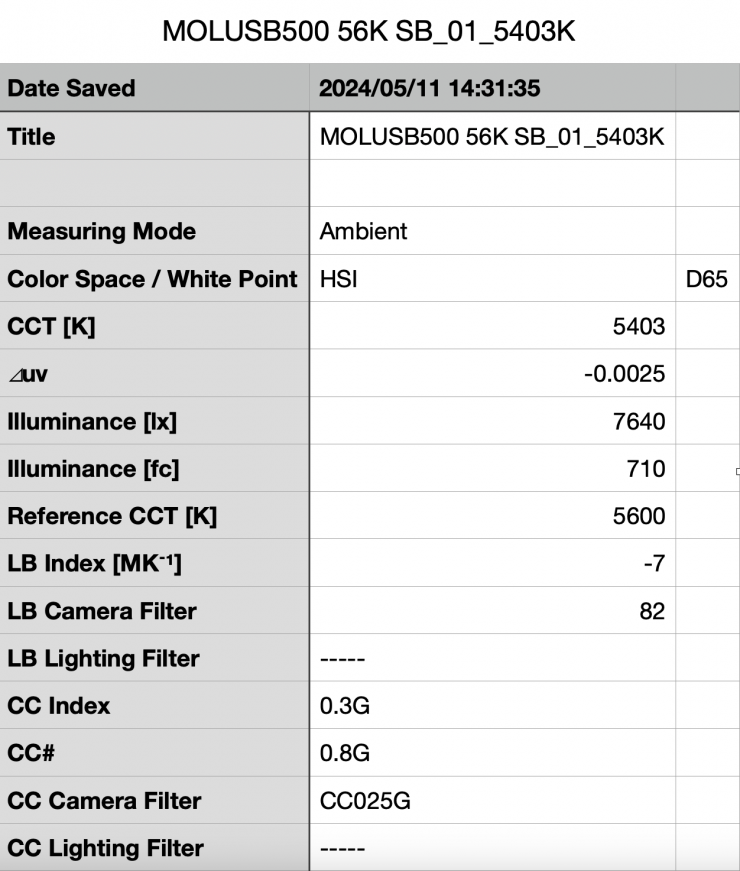
Above you can see the output when it was set at 5600K and used with the DoPChoice Octa 3 softbox was 7640 lx (710 fc). This is a good amount of output.
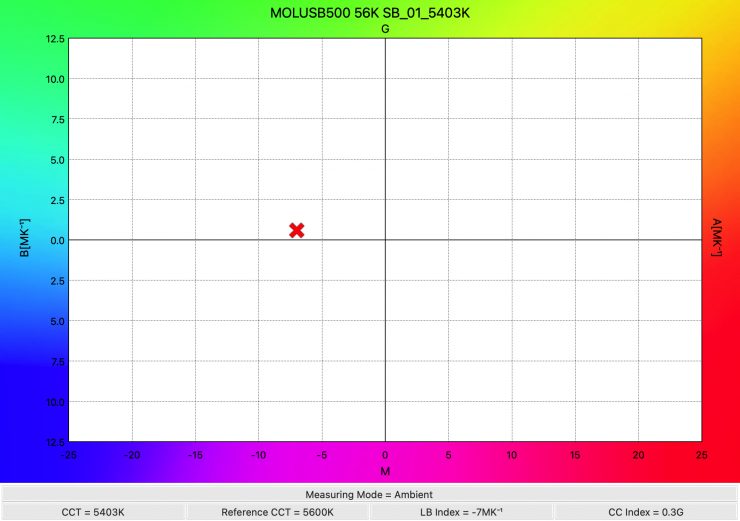
As far as CCT accuracy goes, it recorded a reading of 5403K, which was almost 200K off being correct.
3200K
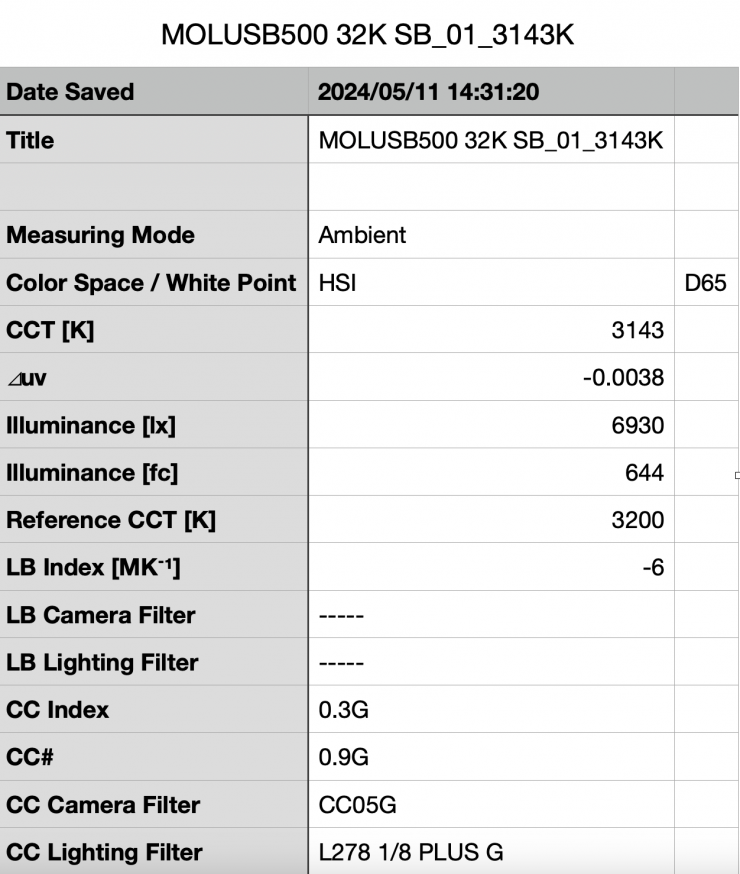
Above you can see the output when it was set at 5600K and used with the DoPChoice Octa 3 softbox was 6930 lx (644 fc). This is a good amount of output.
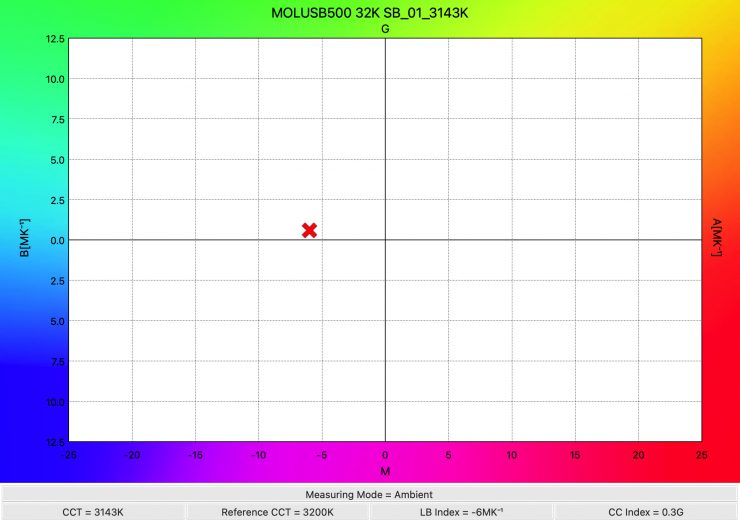
As far as CCT accuracy goes, it recorded a reading of 3143K.
CCT consistency & linear output when dimming the lights
Now, what you should always do when testing lights is to see if the CCT remains consistent when dimming the light. Just because you set a light at say 5600K, that doesn’t mean that the CCT will remain stable as you start dimming the fixture down. I also wanted to see how linear the dimming curve was.
I decided to do a series of tests at 100%/75%/50%/25%10% to see if the Kelvin color temperature being recorded changed. This was done at a distance of 1m using a Sekonic C-800. These tests were done at 5600K with the reflector.
ZHIYUN MOLUS B500
| CCT READING | OUTPUT | INTENSITY % |
| 5652K | 62,600 lx | 100 |
| 5667K | 49,200 lx | 75 |
| 5704K | 34,600 lx | 50 |
| 5746K | 18,700 lx | 25 |
| 5776K | 8360 lx | 10 |
The ZHIYUN MOLUS B500 maintains very good CCT consistency as you start dimming the fixture. My testing showed that the CCT varied by just 124K.
As far as how linear the output is when you start dimming the light, at 50% output it had 44.72% less output than when used at 100%. At 25% it had 70.12% less output than when used at 100%. At 10% output, it had 86.64% less output than when used at 100%. This shows me that the light’s dimming curve is not overly linear, but its still decent enough.
Color Rendering
So now that we have seen how much output the ZHIYUN MOLUS B500 produces, how does it perform when it comes to replicating accurate colors?
ZHIYUN MOLUS B500 5600K (47° Reflector)
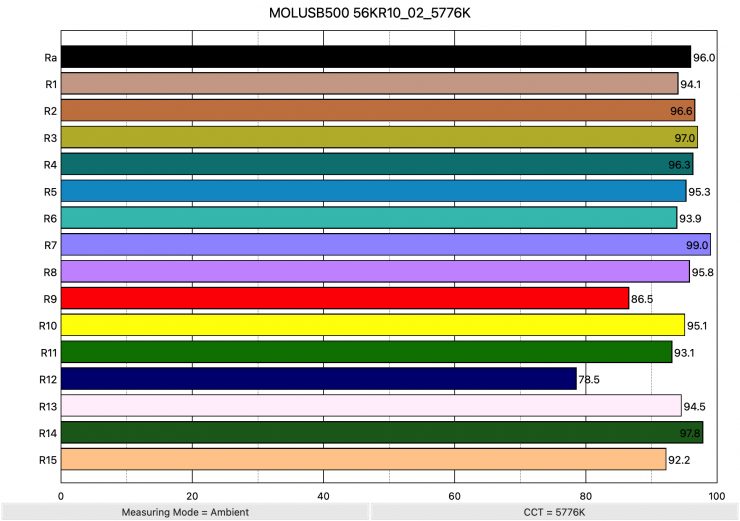
Above you can see that when the MOLUS B500 was set at 5600K using the standard reflector it recorded an average CRI (R1-R8) of 96.0 and an extended CRI (R1-R15) of 93.71. For replicating accurate skin tones it recorded 86.5 for R9 (red), 94.5 for R13 (closest to caucasian skin tones), and 92.2 for R15 (closest to Asian skin tones). These were ok results, and only R12 (Blue) and R9 (red) were below 90.
| CRI | EXTENDED CRI | R9 | R13 | R15 | |
| ZHIYUN MOLUS B500 | 96.0 | 93.71 | 86.5 | 94.5 | 92.2 |
| Nanlite FC-500B | 97.3 | 95.49 | 90.8 | 98.6 | 97.3 |
As a color rendering accuracy comparison, above you can see how the MOLUS B500 compares against Nanlite’s FC-500B.
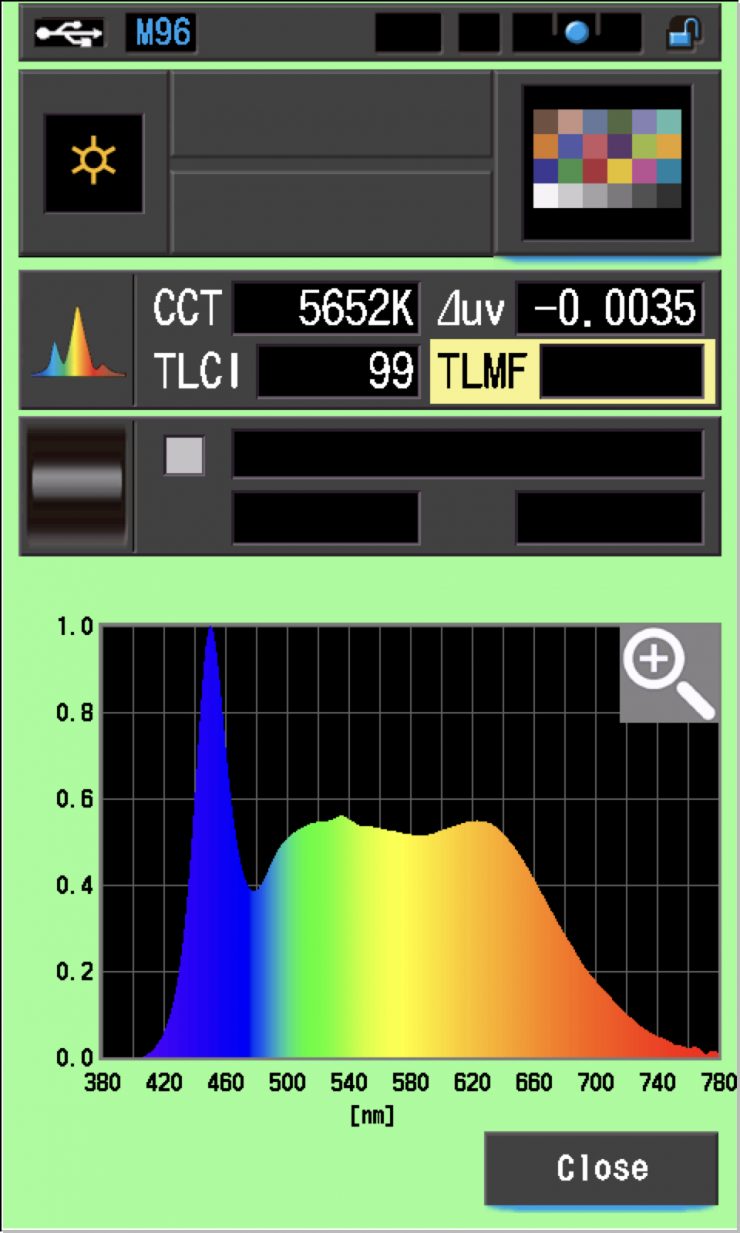
The ZHIYUN MOLUS B500, when set at 5600K, recorded a TLCI score of 99.
ZHIYUN MOLUS B500 3200K (47° Reflector)
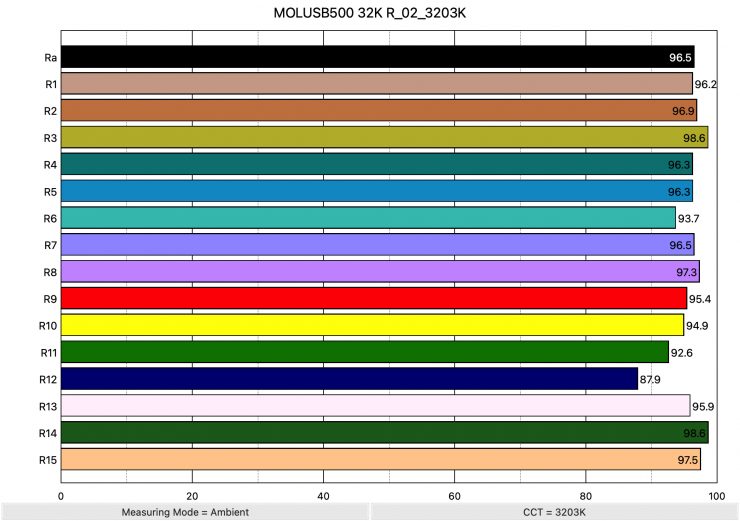
Above you can see that when the ZHIYUN MOLUS B500 was set at 3200K using the standard reflector it recorded an average CRI (R1-R8) of 96.5 and an extended CRI (R1-R15) of 95.64. For replicating accurate skin tones it recorded 95.4 for R9 (red), 95.9 for R13 (closest to caucasian skin tones), and 97.5 for R15 (closest to Asian skin tones). These are very good results, and only R12 (Blue) was below 90 with a score of 87.9.
| CRI | EXTENDED CRI | R9 | R13 | R15 | |
| ZHIYUN MOLUS B500 | 96.5 | 95.64 | 95.4 | 95.9 | 97.5 |
| Nanlite FC-500B | 96.5 | 95.58 | 98.2 | 95.1 | 96.7 |
As a color rendering accuracy comparison, above you can see how the ZHIYUN MOLUS B500 compares against Nanlite’s FC-500B.
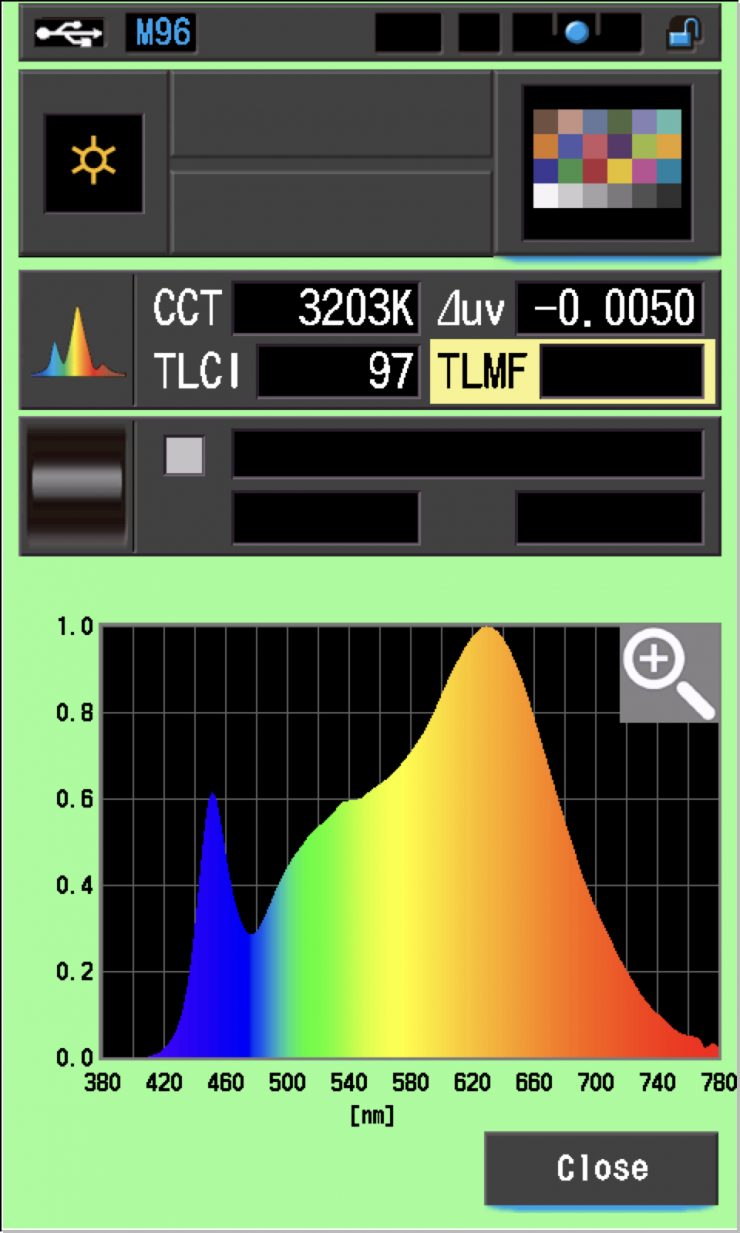
The ZHIYUN MOLUS B500, when set at 3200K, recorded a TLCI score of 97.
ZHIYUN MOLUS B500 3200K (Open face)
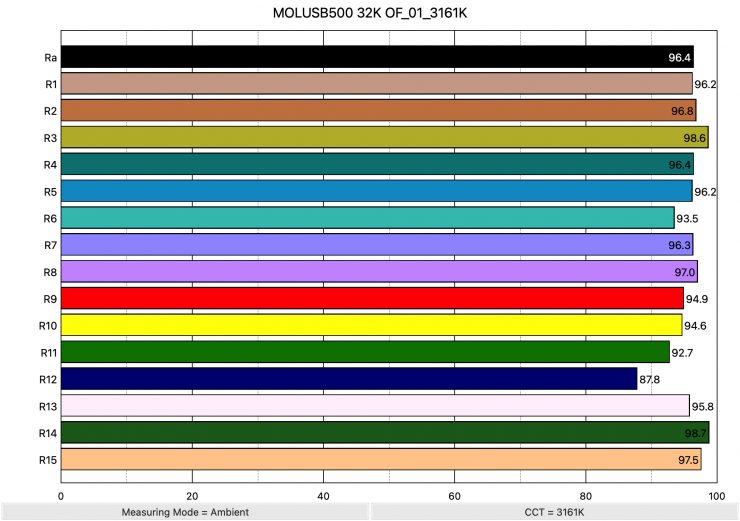
Above you can see the scores for when the light was used open face at 3200K. It recorded an average CRI (R1-R8) of 96.4 and an extended CRI (R1-R15) of 95.53. For replicating accurate skin tones it recorded 94.9 for R9 (red), 95.8 for R13 (closest to caucasian skin tones), and 97.5 for R15 (closest to Asian skin tones). These were good results, and almost identical to when the light is used with its reflector. Only R12 (Blue) was marginally below 90 with a score of 87.8.
ZHIYUN MOLUS B500 5600K (Open face)
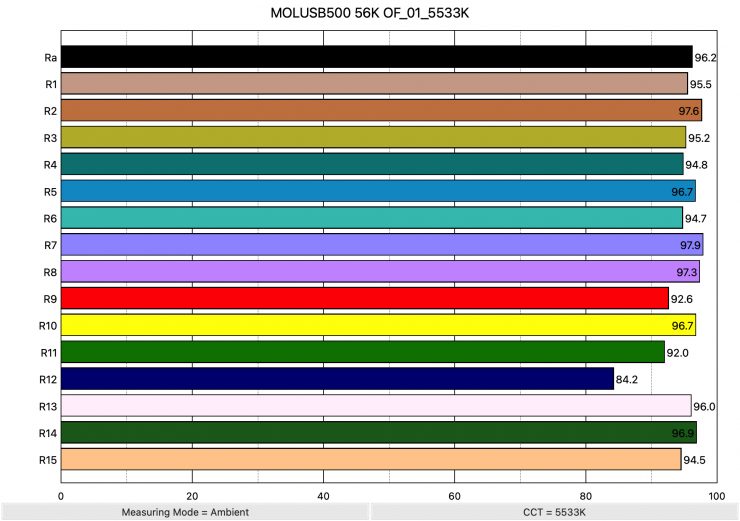
Above you can see the scores for when the light was used open face at 5600K. It recorded an average CRI (R1-R8) of 96.2 and an extended CRI (R1-R15) of 94.84. For replicating accurate skin tones it recorded 92.6 for R9 (red), 96.0 for R13 (closest to caucasian skin tones), and 94.5 for R15 (closest to Asian skin tones). These were decent enough results, and similar to when the light was used at 5600K with its reflector. Only R12 (Blue) was under 90.
CC Index & ⊿uv
The CC Index displays the CC correction value and whether any magenta or green need to be added or subtracted. 1 CC corresponds to 035 Kodak CC values or 1/8 Rosco filter values. Any reading less than +1.00 or -1.00 and you’re probably not going to need to make any kind of adjustment. The ⊿uv is the value to show how much this light is away from being an ideal light source (black body radiation = incandescent lamp). As with the CC Index you want this number to theoretically be zero. Kelvin is not a linear value, so we need to convert from Kelvin to MK-1 to compare the values of color temperature. To calculate from Kelvin to Mired is MK-1= 1*1000000/Kelvin. While this may sound confusing, it is the only way of measuring if the Kelvin shift is significant enough to warrant having to use a filter for correction. Below are the results for the ZHIYUN MOLUS B500:
ZHIYUN MOLUS B500 Kelvin Vs MK-1
| Kelvin | Difference in K | MK-1 | Difference in MK-1 | |
| SET VALUE | 2700K | 0 | 370.37 | 0 |
| ACTUAL READING | 2755K | 55 | 362.97 | 7.40 MK-1 |
| SET VALUE | 3200K | 0 | 312.50 | 0 |
| ACTUAL READING | 3203K | 3 | 312.20 | 0.30 MK-1 |
| SET VALUE | 4500K | 0 | 222.22 | 0 |
| ACTUAL READING | 4516K | 16 | 221.43 | 0.79 MK-1 |
| SET VALUE | 5600K | 0 | 178.57 | 0 |
| ACTUAL READING | 5652K | 52 | 176.92 | 1.65 MK-1 |
| SET VALUE | 6500K | 0 | 153.84 | 0 |
| ACTUAL READING | 6576K | 76 | 152.06 | 1.78 MK-1 |
These figures might look confusing, but what they tell me is that the light is very CCT accurate across its range, especially when used at 3200K, 4500K, and 5600K, and 6500K. Any MK-1 score that is under -9/9 means you wouldn’t have to use any color correction gels. The MK-1 scores for this light were very good across its range. Any MK-1 score that is under -6/6 is a very good result.
ZHIYUN MOLUS B500 CC INDEX & ⊿uv
| CC INDEX | ⊿uv | |
| 2700K | 0.1G | -0.0005 |
| 3200K | 0.5G | -0.0050 |
| 4500K | 0.6G | -0.0064 |
| 5600K | 0.5G | -0.0035 |
| 6500K | 0.3G | -0.0006 |
These were ok results across the board, but the ⊿uv scores could have been better for 3200K, 4500K, and 5600K. The light does lean a little magenta, but not enough to worry about.
TM-30
TM-30 is a relatively new color rendering standard that was developed to deal with the limitations of CRI. TM-30 looks at 99 individual colors. These 99 colors are categorized into seven groups: nature, skin color, textiles, paints, plastics, printed material, and color systems.
TM-30 scores go from 0 – 100. The higher the score, the more accurate a light is at producing colors. Any TM-30 Rf score in the ’90s is considered to be good. What is interesting and something that you need to be very aware of is that two separate light sources with the exact same CRI scores can render colors very differently. A light with a high CRI rating could have a low TM-30 score. Conversely, a light with a good TM-30 score could have a bad CRI score.
Now, there are two measurements associated with TM-30, Rf and Rg.
Rf (Color Fidelity)
Rg (Color Gamut)
With Rf value, ideally, you want a score in the 90’s.
With Rg value, a score below 100 indicates that the light source renders colors with less saturation than the reference source. So ideally you want this score to be above 100.
ZHIYUN MOLUS B500
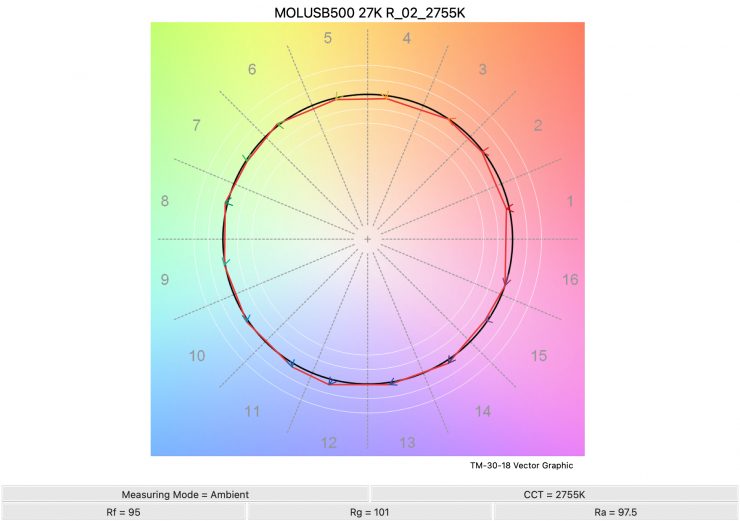
2700K 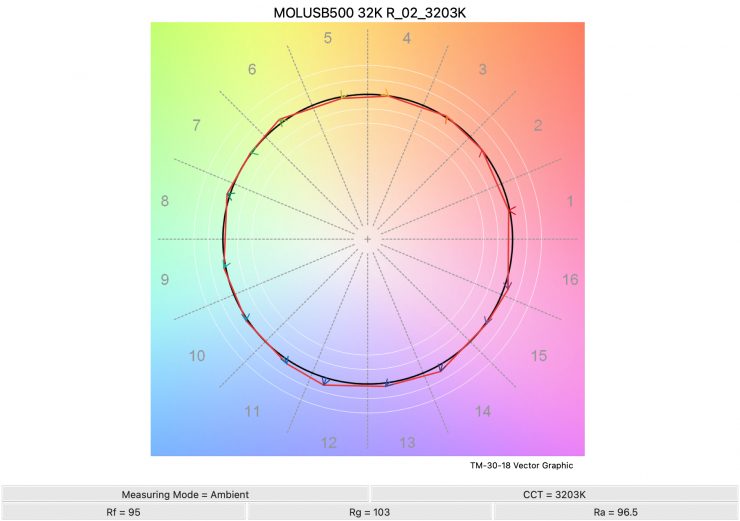
3200K 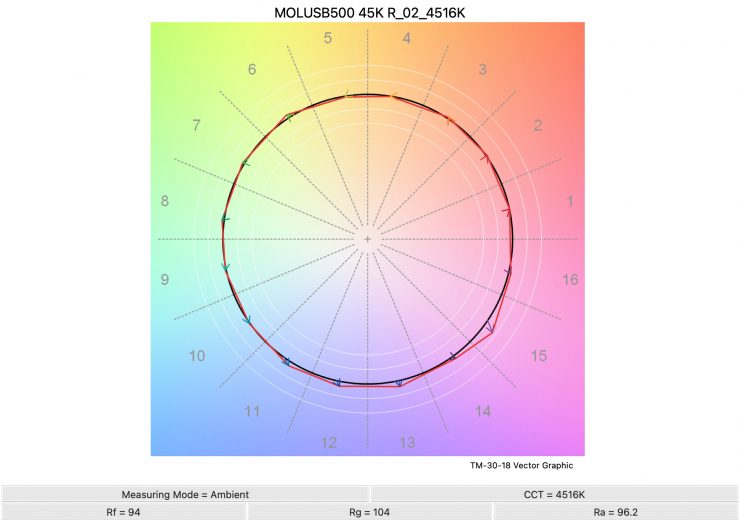
4500K 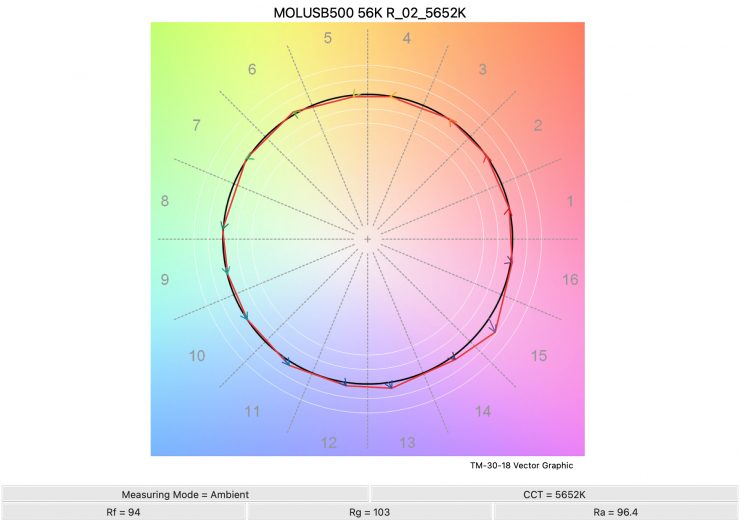
5600K 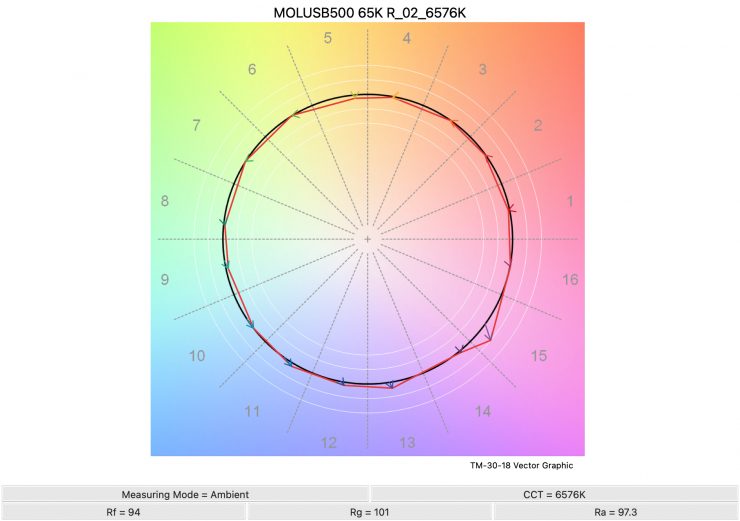
6500K
Above you can see the scores for the Neewer CB300B at various Kelvin color temperatures. Below I have listed the figures as well.
Here are the results:
| Rf | Rg | |
| 2700K | 95 | 101 |
| 3200K | 95 | 103 |
| 4500K | 94 | 104 |
| 5600K | 94 | 103 |
| 6500K | 94 | 101 |
The TM-30 scores are pretty good and they show me that the light is pretty consistent at replicating accurate colors with full saturation., however, it does slightly oversaturate red/magenta colors slightly at 3200, 4500, and 5600K.
SSI
SSI (Spectral Similarity Index) was developed by the Sci-Tech Council of the Academy. SSI gives me the ability to set any light as a standard, or use predefined standards (such as CIE D55), and then give other lights an SSI score based on how well they will match standards such as CIE D55. This way I can measure spectral response and compare it directly against an ideal light source. This is actually a much better test than recording CRI scores.
ZHIYUN MOLUS B500 3200K
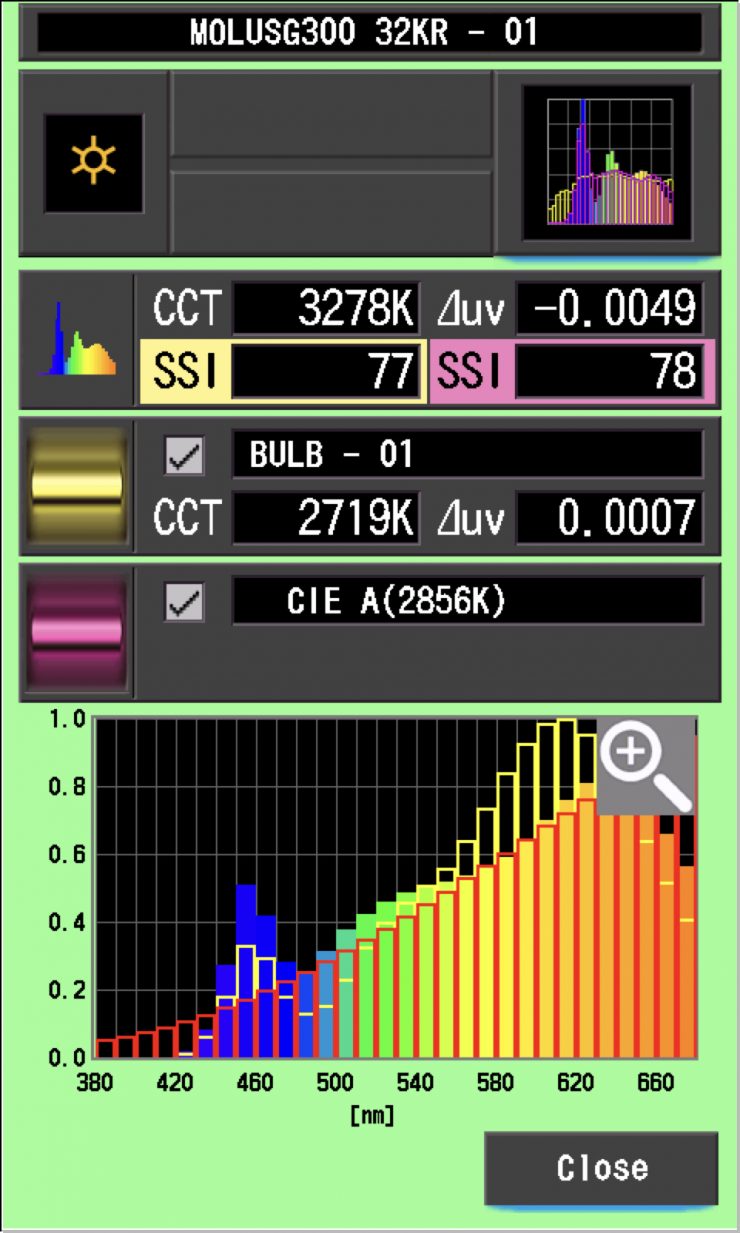
In this graph, the red bars indicate a perfect Planck 3200K source. The gold bars indicate a perfect 3200K Tungsten source. This lets us compare how close to a perfect 3200K lighting source the ZHIYUN MOLUS B500 is. Any SSI score in the high 70’s, low ’80s is very good for a 3200K LED light. The results for the ZHIYUN MOLUS B500 were pretty good when used at 3200K. As you can see, LED lights have a hard time replicating colors below about 450nm.
ZHIYUN MOLUS B500 5600K
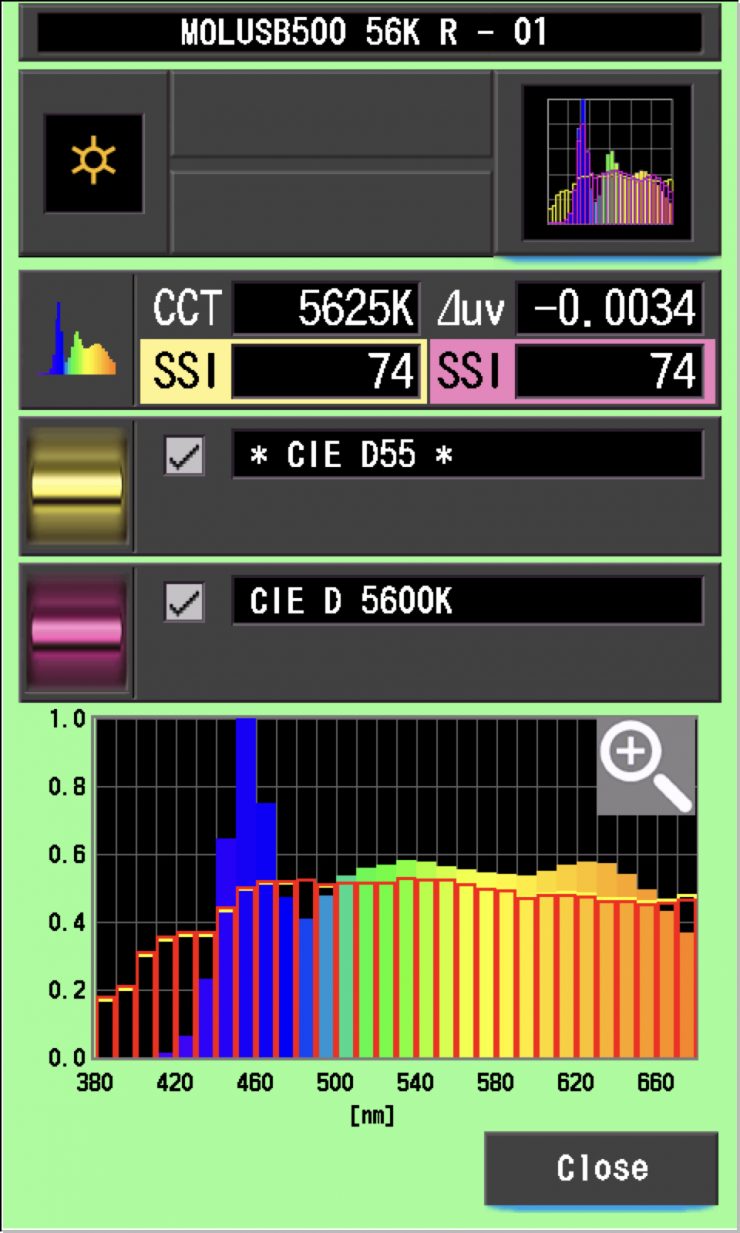
In the graph above the gold bars indicate a perfect CIE D55 source. The red bars indicate a perfect CIE D 5600K source. This lets us compare how close to a perfect 5600K lighting source the ZHIYUN MOLUS B500 is. A score in the low 70’s is typical for a 5600K LED source.
The main reason we want to record SSI scores is so we can see how well they match with other lights. As an example, I wanted to see how well the ZHIYUN MOLUS B500 matched the ARRI Orbiter and the Prolycht Orion 675. Below you can see the results.
ZHIYUN MOLUS B500 5600K
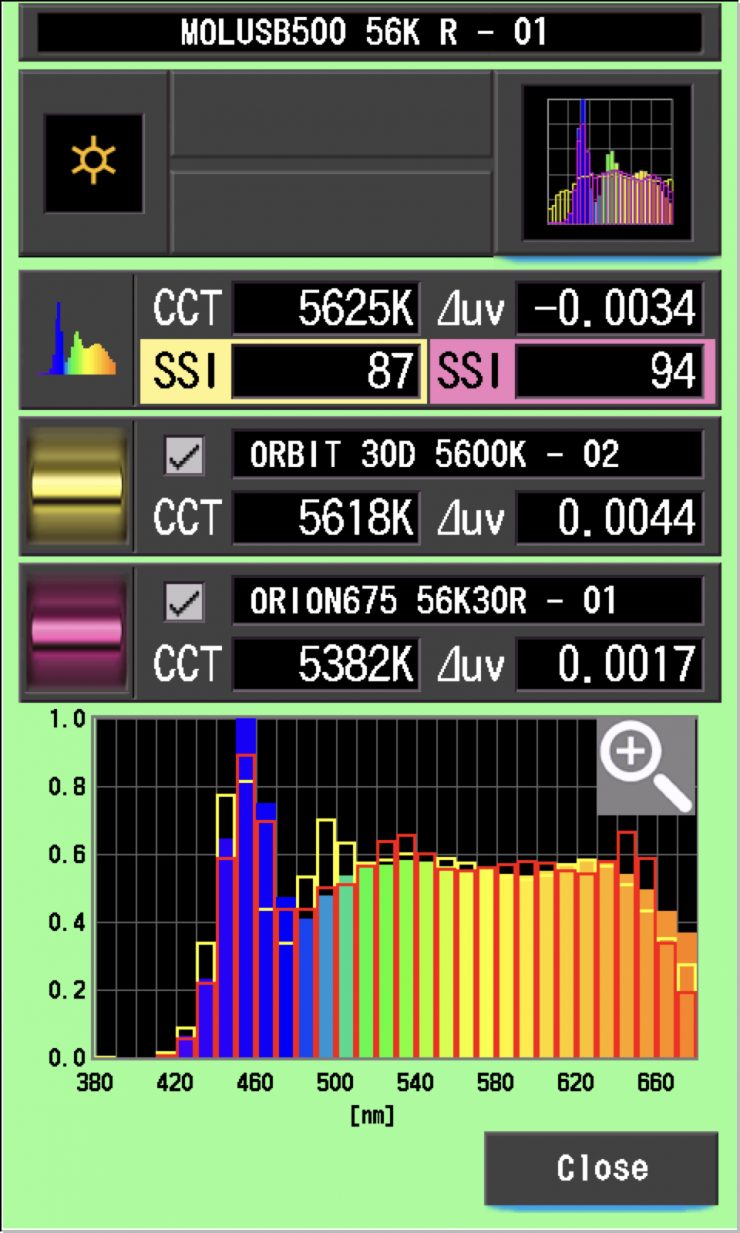
As you can see neither of the lights is a perfect match, but they are a decent enough match. You could easily use all three of these lights together without any issues if you did a bit of tweaking.
Ok, so let’s do that same exact test again, this time at 3200K.
ZHIYUN MOLUS B500 3200K
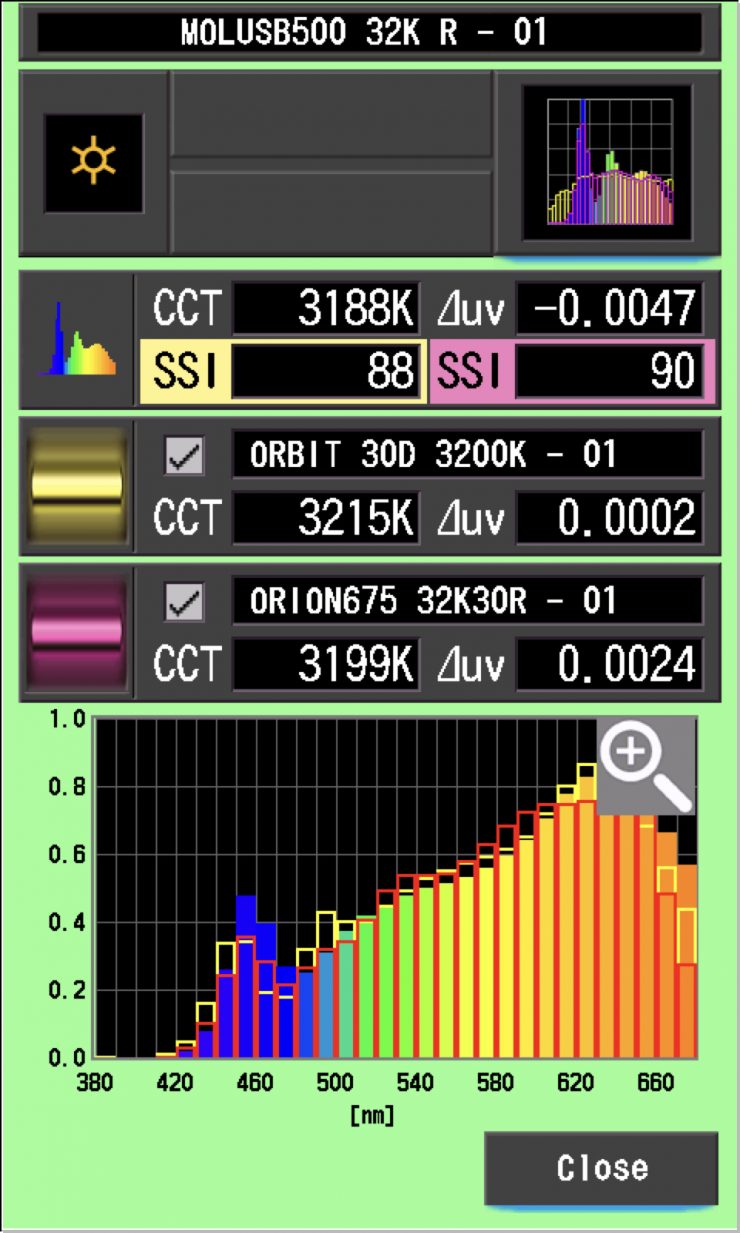
As you can see neither of the lights is a perfect match, however, you could probably use all three of these lights together without any issues if you did a bit of tweaking.
SSI tests are a great way of telling you what lights you own or use will work well together.
Spectral Distribution
ZHIYUN MOLUS B500 5600K
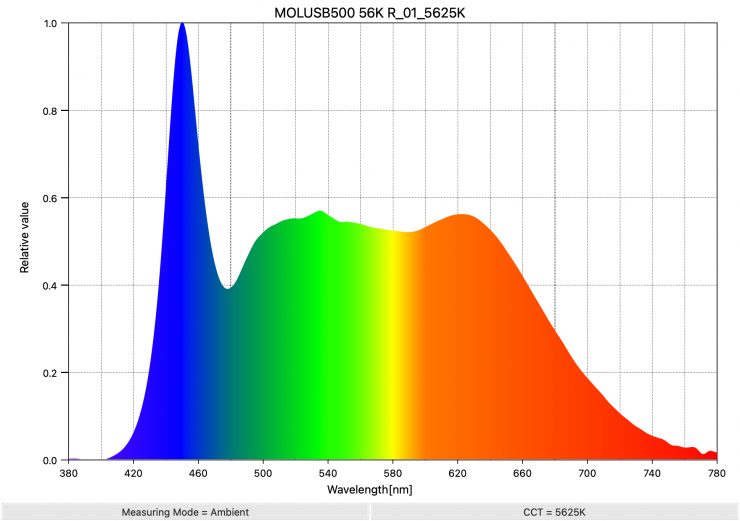
Above you can see the spectral distribution of the ZHIYUN MOLUS B500 when it is set at 5600K. The spectral distribution isn’t overly full, but it is fairly consistent with no spikes where you wouldn’t expect to see them.
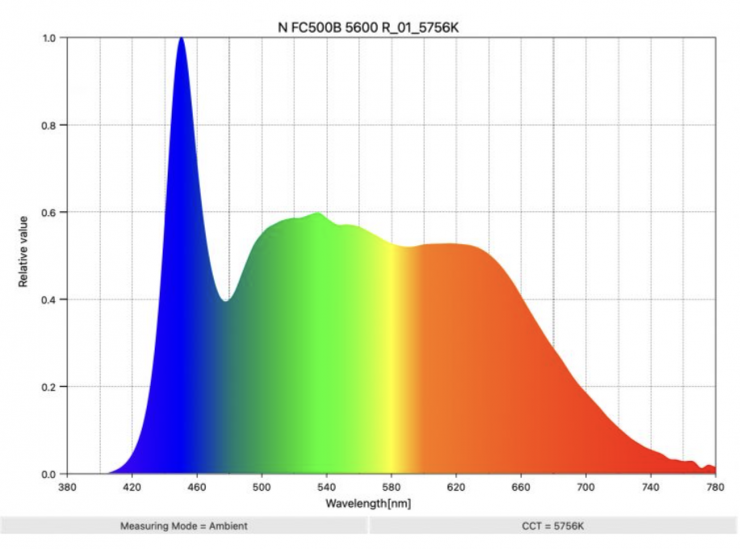
As a comparison, above you can see the spectral distribution of the Nanlite FC-500B.
ZHIYUN MOLUS B500 3200K
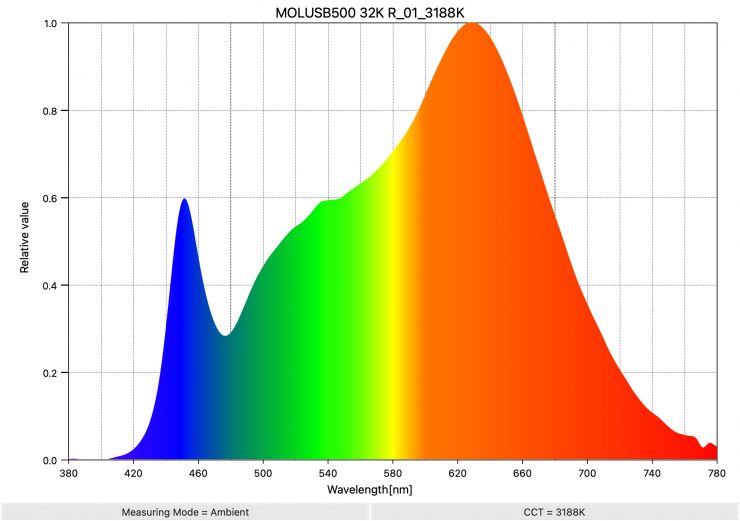
Above you can see the spectral distribution of the ZHIYUN MOLUS B500 when it is set at 3200K. The spectral distribution is pretty good for a Bi-color fixture.
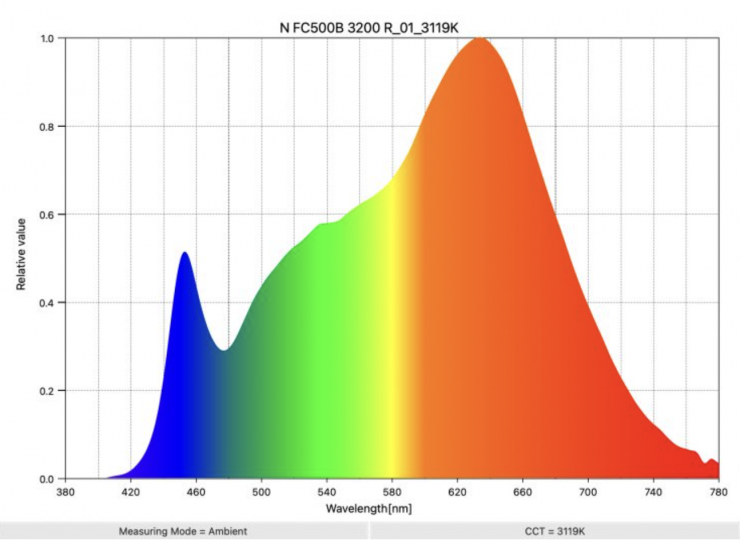
As a comparison, above you can see the spectral distribution for the Nanlite FC-500B.
Real-World Performance & Quality of Light
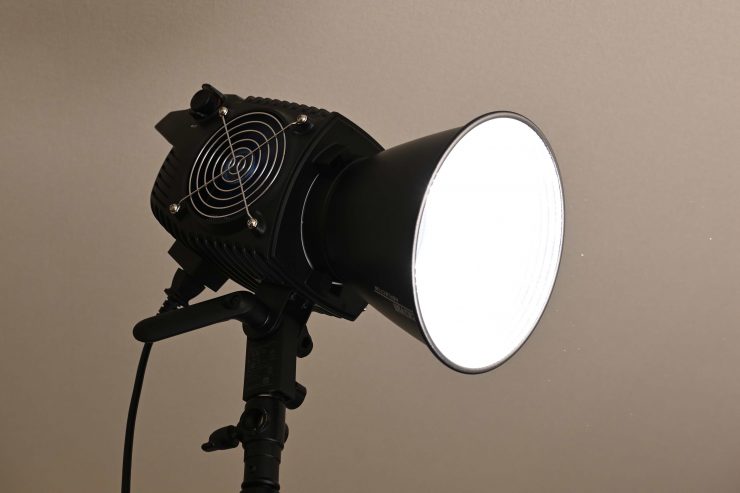
As I always say, photometric scores only tell you part of the story. So let’s see how the ZHIYUN MOLUS B500 performs in the real world.
The photometric results can only give me scientific data and it is much more important for me to see how the light looks and perform.
The ZHIYUN MOLUS B500 is capable of producing good results and most importantly it is very easy to use and quick to set up.
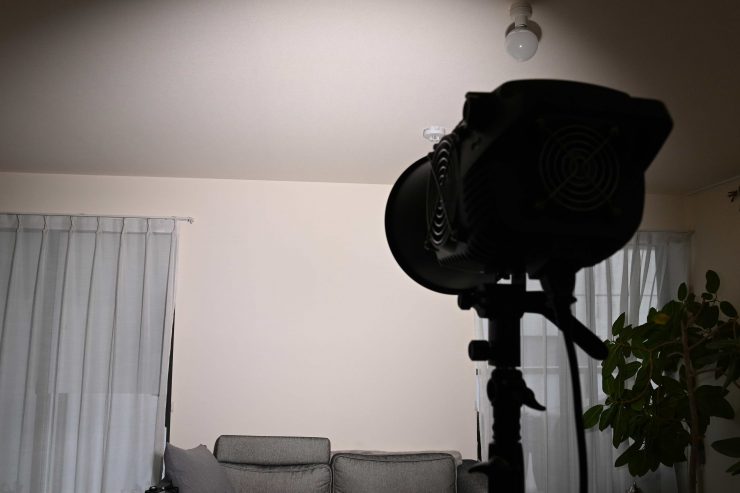
Reflector 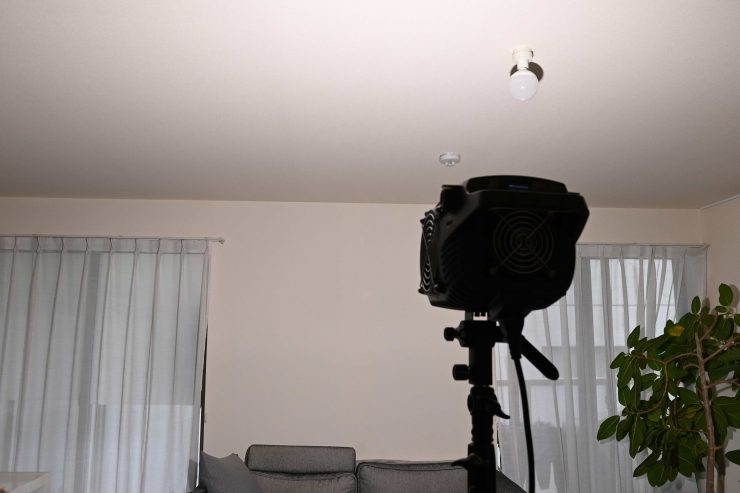
Open Face
Above you can see what it looks like at a distance of 3m / 9.9′ when used with its reflector and open face.

The reflector does produce a slight bit of color fringing on the edges.

Reflector 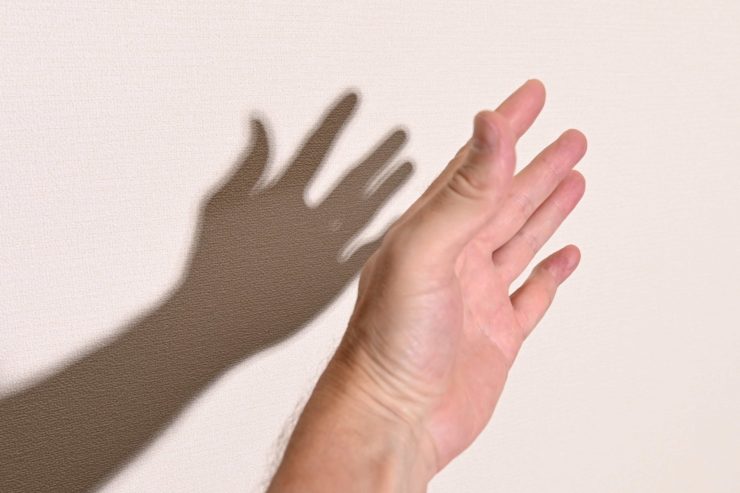
Reflector 
Open face 
Open Face
Above you can see what the shadows look like when used with its reflector and open face at various distances from a wall.
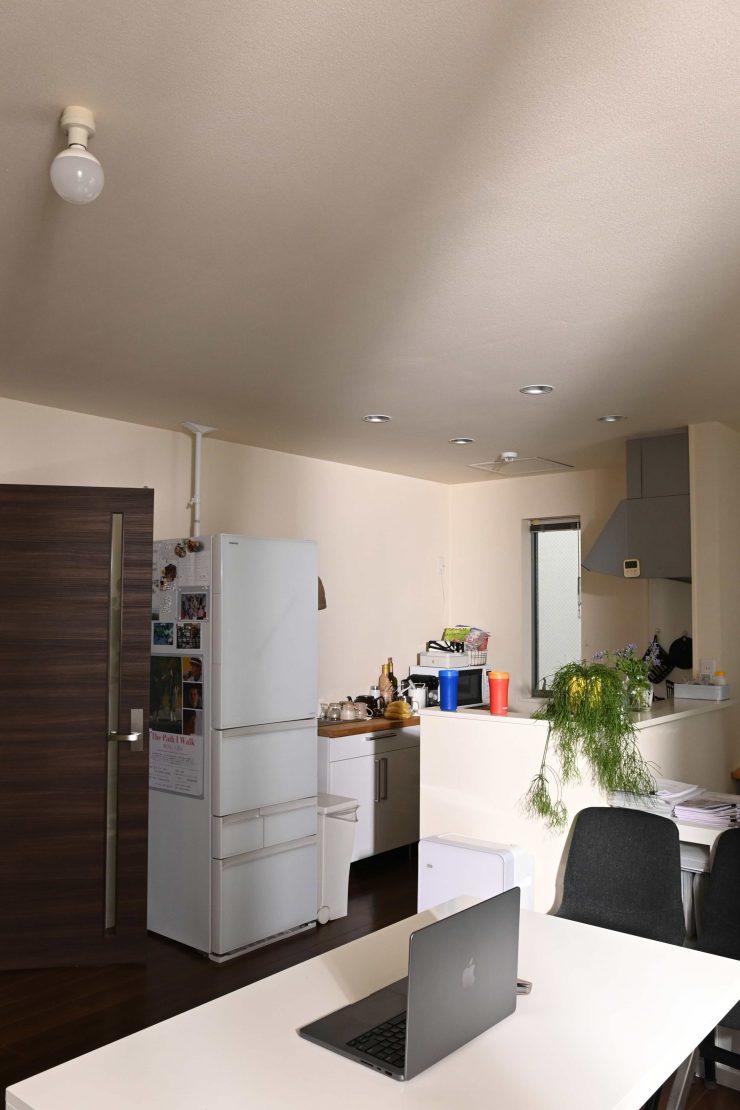
Reflector 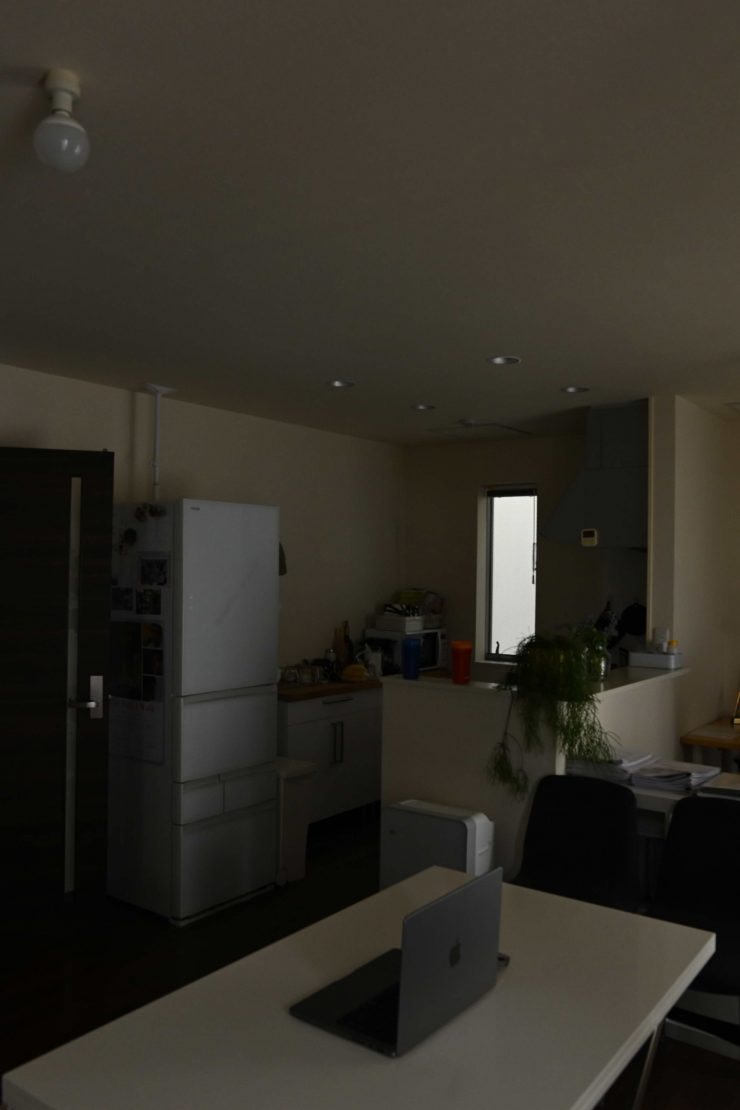
Light Off
Above you can see some photos I took when I placed the MOLUS B500 outside and punched it through a sheer curtain into a room using the included reflector. I have kept the exposure the same for all the shots.
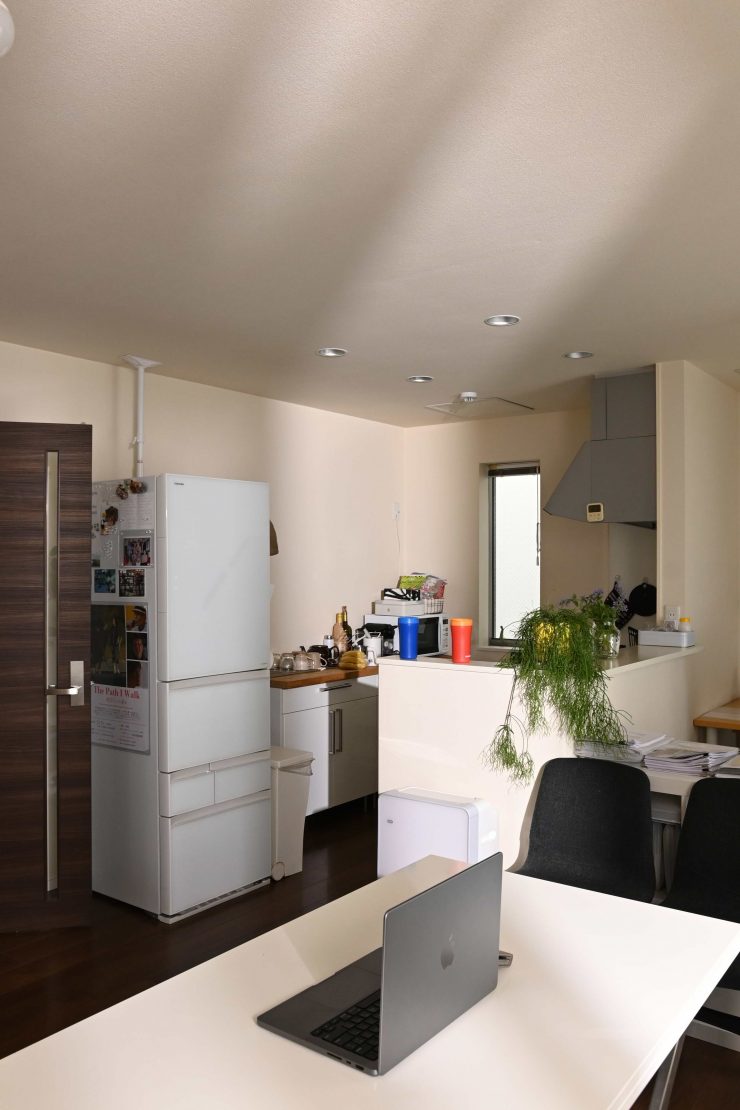
Open Face 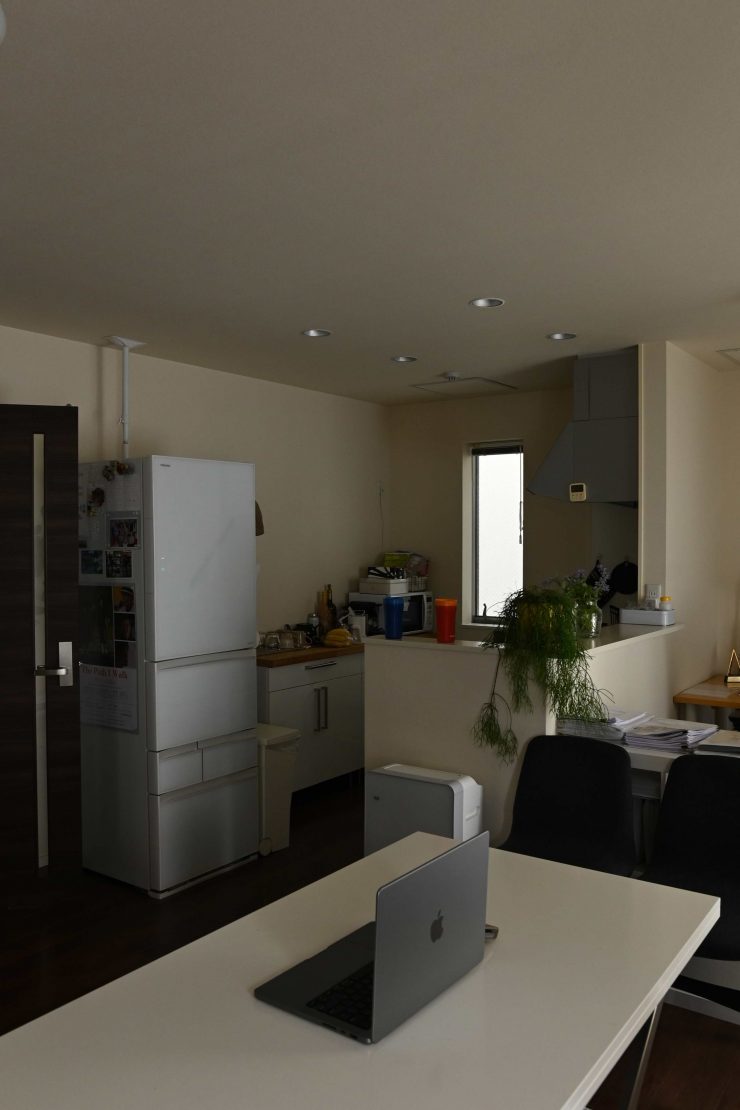
Light Off
Above you can see some more photos I took when I placed the MOLUS B500 outside and punched it through a sheer curtain into a room when using it open face. I have kept the exposure the same for all shots.
Above you can see what the light looks like when punched directly into the ceiling when used with its reflector.
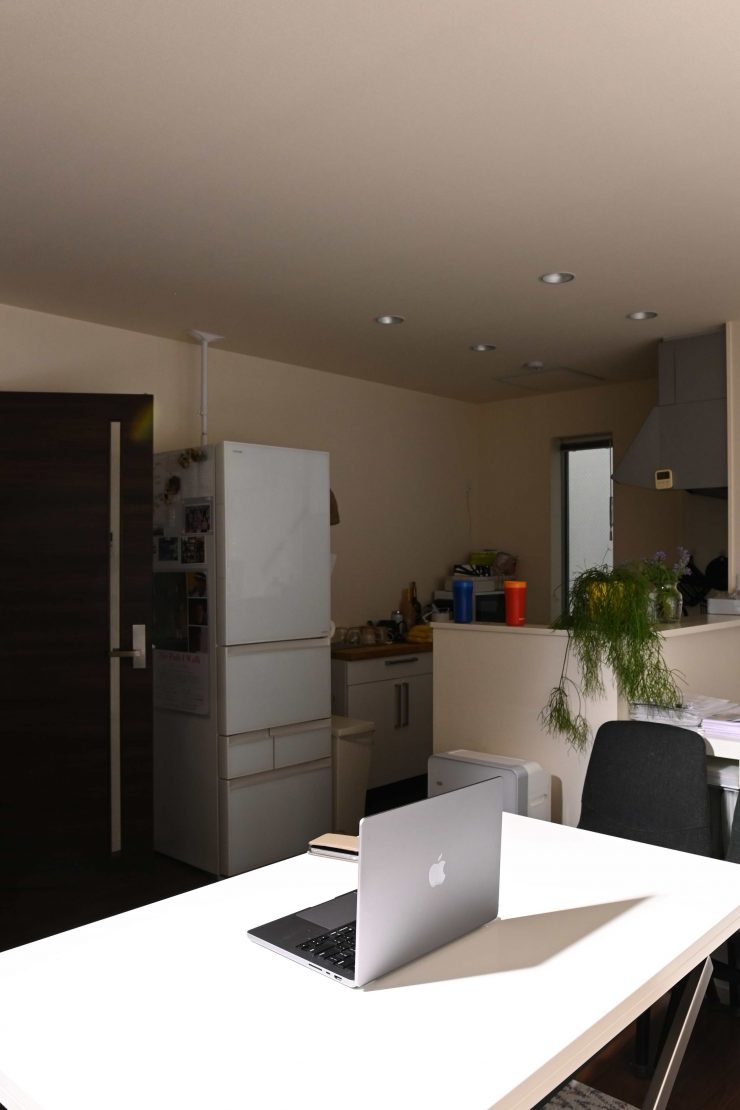
Reflector 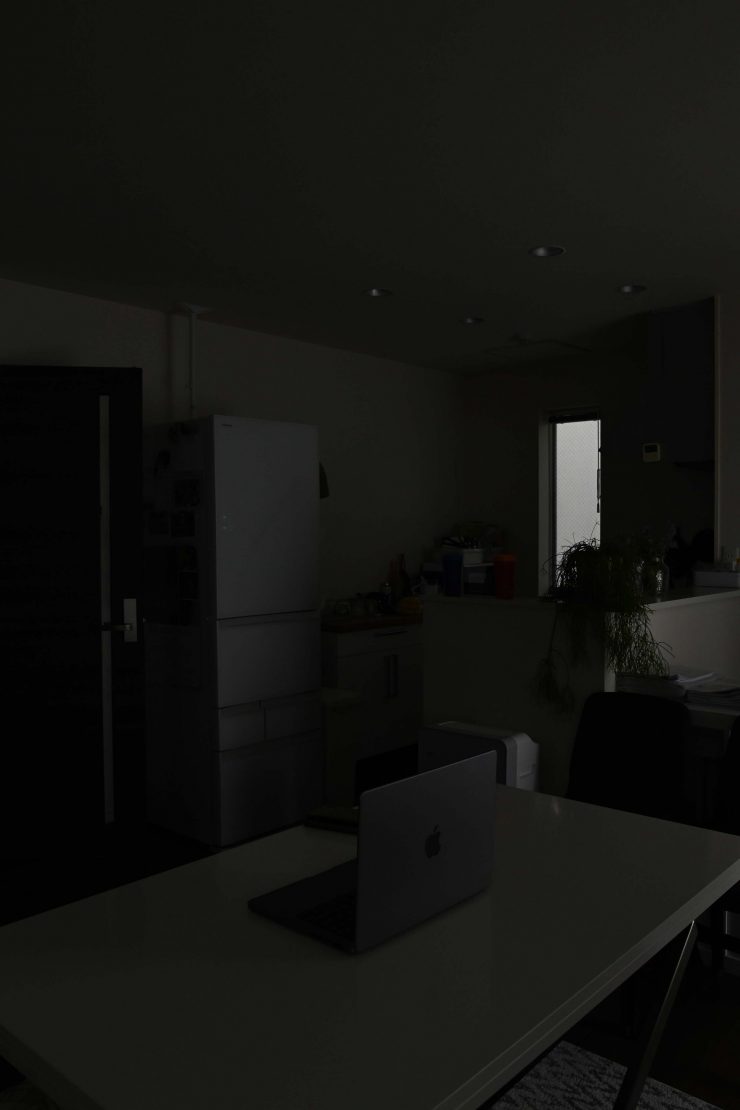
Light Off
Above you can see what the light looks like when punched directly into a table when used with its reflector.
I also tried using the light with a DoPChoice Octa 3 softbox. This provided good results and nice even wrap-around subjects.
The ZHIYUN MOLUS B500 is more than capable of producing enough output when coupled with a large softbox for most interview requirements.
Who is the ZHIYUN MOLUS B500 aimed at?
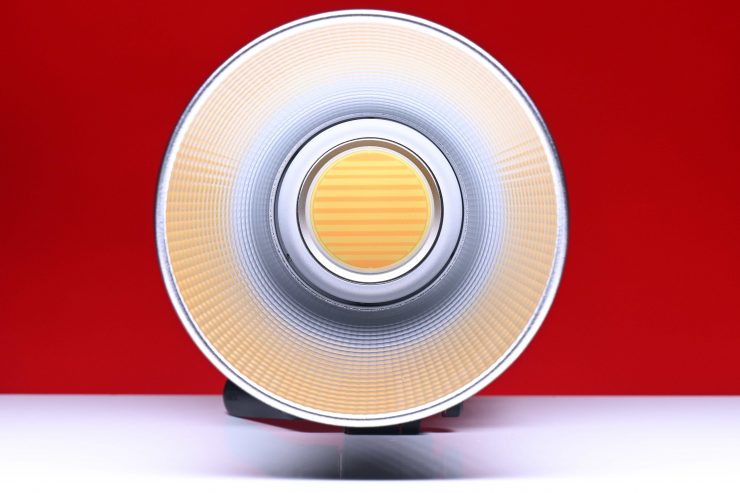
I think a lot of people who are in the market for a compact-sized powerful bi-color light should potentially consider the ZHIYUN MOLUS B500, especially given its reasonably low price and the fact that there are quite a few affordable lighting modifiers that are available to work with it. Yes, there is always going to be a certain stigma with lights, especially one from a brand you may not be overly familiar with.
The ZHIYUN MOLUS B500 is priced to appeal to owner-operators and entry level users who are looking for a powerful and reasonably lightweight jack-of-all-trades lighting solution. The MOLUS B500 could be used as a hard light source, a soft source, a fresnel, a gobo, or just about anything else you want it to be with the correct modifier.
The fixture is going to be more suited to indoor use than location work, and if one of your requirements is being able to remotely power a light using camera batteries then there are other options available from competing companies.
Price & Availability
The ZHIYUN MOLUS B500 retails for $719 USD. This is a reasonably good price for a light like this, but it faces very stiff competition from more established and recognized lighting brands making similar offerings.
Accessories
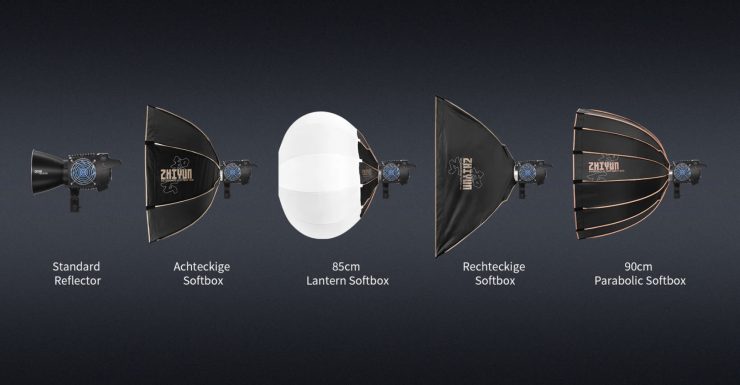
As well as being able to run a large array of affordable lighting modifiers, ZHIYUN also makes its own options.
Competition
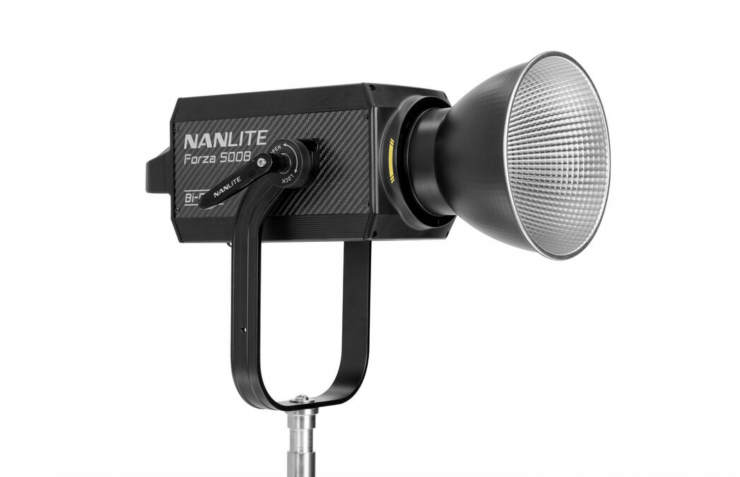
The COB spotlight market has become increasingly overcrowded in the last few years. Below are some of the lights that could be considered competition for the ZHIYUN MOLUS B500.
| PRICE | |
| ZHIYUN MOLUS B500 | $719 USD |
| Neewer CB300B | $459.99 USD |
| Nanlite FC-500B | $559 USD* |
| Nanlite FC-300B | $383 USD |
| Nanlite Forza 500B II | $1,499 USD |
| Nanlite Forza 300B II | $999 USD |
| Aputure LS 600x | $1,990 USD |
| Aputure LS 300x | $999 USD |
| Zhiyun MOLUS G300 Bi-Color LED Monolight | $599 USD |
| Godox SL300IIIBI | $589 USD |
| GVM Pro SD500B | $799 USD |
| GVM Pro SD400B | $659 USD |
| Kelvin Epos 600 | $3,999 USD |
| Kelvin Epos 300 | $2,499 USD |
| Prolycht Orion 300 FS | $1,799 USD |
| amaran 300c RGB LED Monolight | $569 USD |
| Godox SZ300R Zoom RGB LED Spotlight | $729 USD |
| Lupo Movielight 300 Full Color PRO | $1,398 USD |
*Currently on sale at B&H as of May 12th 2024.
Please note that a lot of these lights have different feature sets and power draws.
Conclusion
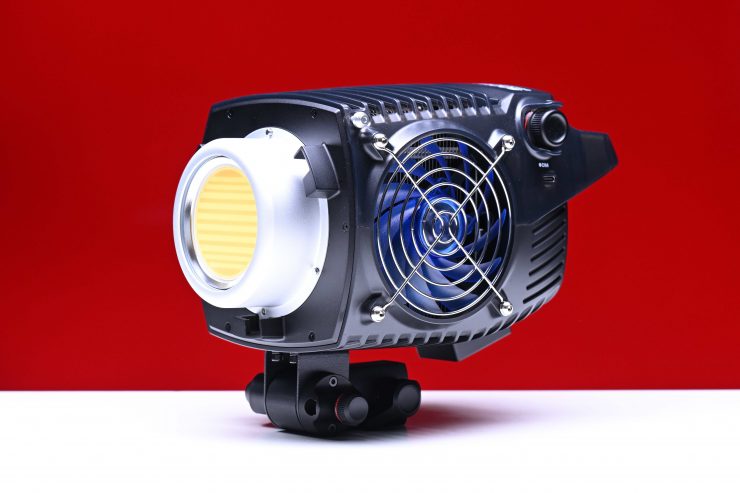
The ZHIYUN MOLUS B500 is a solid offering, and it does provide a ton of output given its relatively small size. While it is color-accurate, the fan noise is a major concern and you would have to be careful using it in audio critical environments.
On the plus side, the relatively small size and weight for a 500W fixture is impressive and this makes it a good option if you need to travel. The negative aspect is that you can’t run this light remotely via batteries or any type of DC source, however, in saying that, I am not sure how many potential buyers of a light like this would want to do that.
Having the ability to use the fixture with a wide array of lighting modifiers gives it a lot of versatility. A Bowens mount is also advantageous because you don’t have to spend a lot of money on accessories to use with it.
The interface and operating system are fairly basic, but they are easy to use. The app works well and it’s nice to have an alternative solution for controlling the light, especially considering that it doesn’t have a separate power supply/controller.
The build quality is ok but obviously ZHIYUN has had to make some compromises to keep the weight down.
ZHIYUN will also have to deal with the stigma of not necessarily being a brand that a lot of people are familiar with, especially when it comes to lights. They also don’t have has many lights available as other competing companies and that also will also play a factor.
The build quality and color consistency of more affordable lighting solutions over the last few years have improved a lot. The ZHYIUN offers good value for money, and its photometric results were very solid across the board.
If you are looking for a compact 500W COB spotlight and you don’t need to run lights remotely from camera batteries then it’s worth considering.

